Forums
- Forums
- Axis And Allies Forum
- General Discussion
- Aviation News
Aviation News
Post a reply
- Go to Next topic
- Go to Welcome
- Go to Introduce Yourself
- Go to General Discussion
- Go to Screenshots, Images and Videos
- Go to Off topic
- Go to Works in Progress
- Go to Skinning Tips / Tutorials
- Go to Skin Requests
- Go to IJAAF Library
- Go to Luftwaffe Library
- Go to RAF Library
- Go to USAAF / USN Library
- Go to Misc Library
- Go to The Ops Room
- Go to Made in Germany
- Go to Campaigns and Missions
- Go to Works in Progress
- Go to Juri's Air-Raid Shelter
- Go to Campaigns and Missions
- Go to Works in Progress
- Go to Skinpacks
- Go to External Projects Discussion
- Go to Books & Resources
-
 Main AdminThe 137th Special Operations Wing welcomes its first AT-802U trainer aircraft at Will Rogers Air National Guard Base, Oklahoma City, July 29, 2024, following test pilot training at Hurlburt Field, Florida. The AT-802U trainer aircraft will be used to train initial cadre in a representative tail wheel aircraft in preparation for the missionized Armed Overwatch (OA-1K) variant. Secretary of the Air Force Frank Kendall selected WRANGB for the Total Force Integration OA-1K Formal Training Unit. The OA-1K is a low-cost, multirole, rapidly-deployable, small-to-medium size aircraft system to support geographically isolated special operations personnel. The aircraft will perform close air support, precision strike, armed intelligence, surveillance and reconnaissance in austere and permissive environments. (U.S. Air National Guard photo by Senior Airman Erika Chapa)
Main AdminThe 137th Special Operations Wing welcomes its first AT-802U trainer aircraft at Will Rogers Air National Guard Base, Oklahoma City, July 29, 2024, following test pilot training at Hurlburt Field, Florida. The AT-802U trainer aircraft will be used to train initial cadre in a representative tail wheel aircraft in preparation for the missionized Armed Overwatch (OA-1K) variant. Secretary of the Air Force Frank Kendall selected WRANGB for the Total Force Integration OA-1K Formal Training Unit. The OA-1K is a low-cost, multirole, rapidly-deployable, small-to-medium size aircraft system to support geographically isolated special operations personnel. The aircraft will perform close air support, precision strike, armed intelligence, surveillance and reconnaissance in austere and permissive environments. (U.S. Air National Guard photo by Senior Airman Erika Chapa)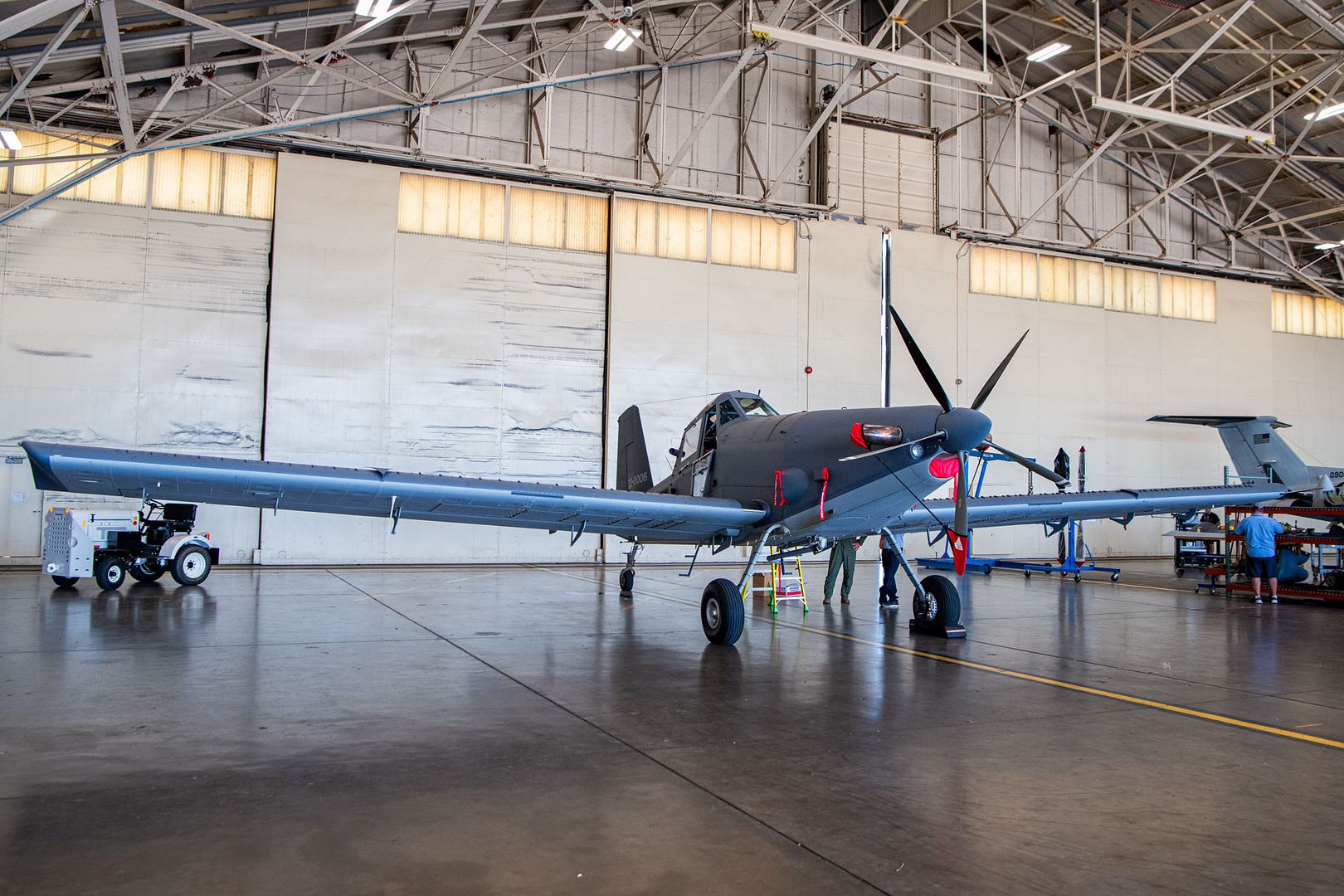
ATLANTIC OCEAN (July 28, 2024) An F/A-18F Super Hornet, attached to the “Red Rippers” of Strike Fighter Squadron (VFA) 11, lands on the flight deck of the Nimitz-class aircraft carrier USS Harry S. Truman (CVN 75), July 28. The Harry S. Truman Carrier Strike Group is underway in the Atlantic Ocean completing integrated naval warfighting training. Composite Unit Training Exercises are an intense, multi-week exercise designed to fully integrate a carrier strike group as a cohesive, multi-mission fighting force, to assess their ability to carry out sustained combat operations from the sea, and drive future warfighting development. (U.S. Navy Photo by Mass Communication Specialist 3rd Class Logan Nystrand)_11_lands_on_the_flight_deck_of_the_Nimitz-class_aircraft_carrier_USS_Harry_S._Truman.jpg?width=1920&height=1080&fit=bounds)
A U.S. Air Force F-22 Raptor and four F-16 Fighting Falcon assigned to various units sit on the flightline during a weapons load crew competition at Nellis AFB, Nevada, July 26, 2024. This weapons load crew competition featured 13 weapons standardization teams across Nellis AFB, Spangdahlem Air Base, Shaw AFB, Joint Base Langley-Eustis, Seymour Johnson AFB and Hill AFB. (U.S. Air Force photo by Staff Sgt. Jose Miguel T. Tamondong)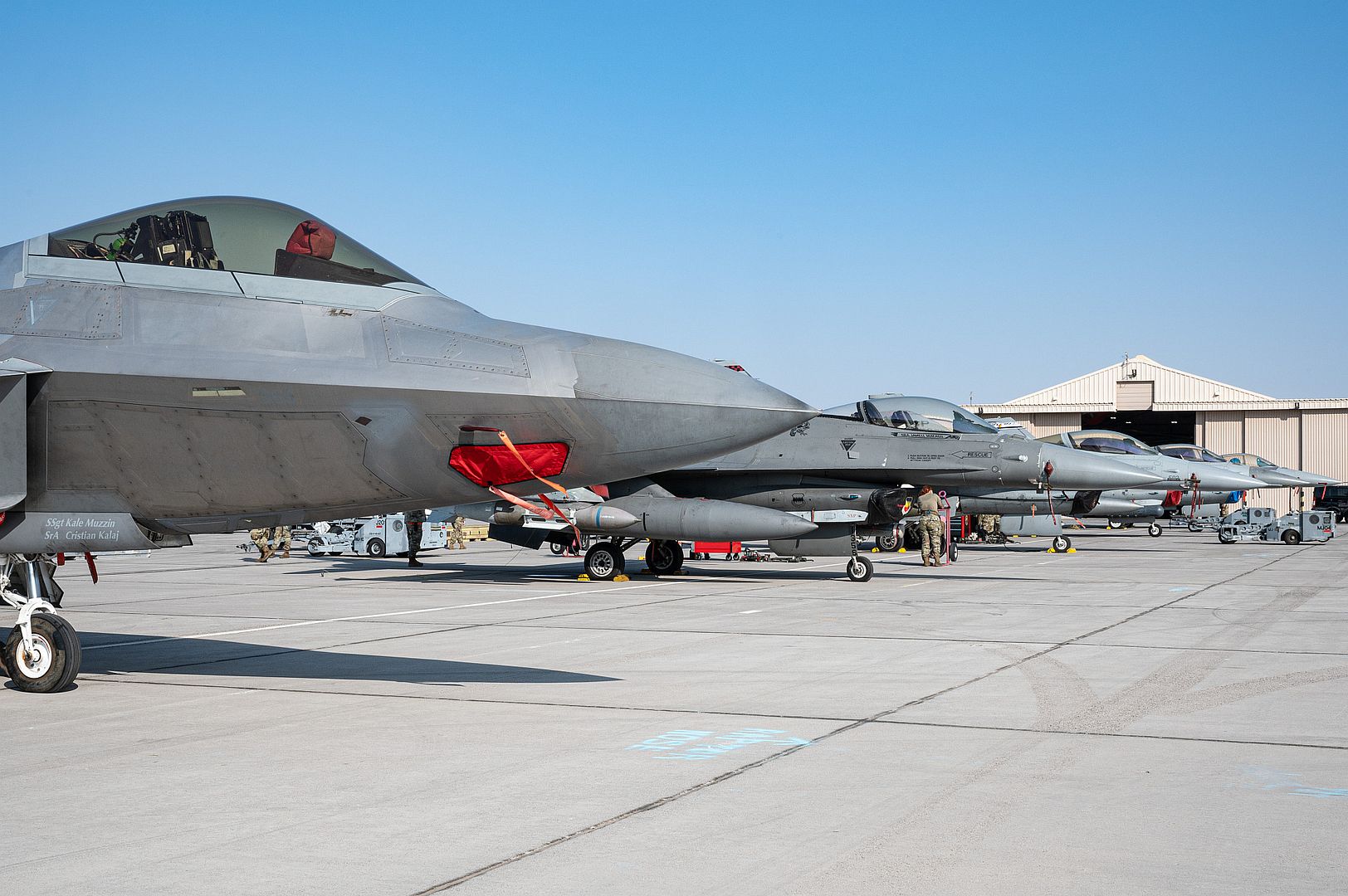
U.S. Airmen assigned to the 336th Fighter Generation Squadron, Seymour Johnson Air Force Base (AFB), North Carolina, prepare to load a Captive Air Training Missile 120B onto an F-15E Strike Eagle during a weapons load crew competition at Nellis AFB, Nevada, July 26, 2024. This weapons load crew competition was held during Red Flag-Nellis 24-3 and was also attended by visiting units from Spangdahlem Air Base, Shaw AFB, Joint Base Langley-Eustis, Seymour Johnson AFB and Hill AFB. (U.S. Air Force photo by Staff Sgt. Jose Miguel T. Tamondong)
U.S. Air Force B-1B Lancers assigned to the 28th Bomb Wing sit on the flightline at Nellis Air Force Base, Nev., July 26, 2024, in support of Red Flag 24-3. Red Flag is organized at Nellis AFB, and hosted on the Nevada Test and Training Range - the U.S. Air Force's premier military training area with more than 12,000 square miles of airspace and 2.9 million acres of land. (U.S. Air Force photo by Airman 1st Class Brittany Kenney)
110th Bomb Squadron Commander Lt. Col. Justin Meyer taxies for takeoff at Whiteman Air Force Base, Missouri, June 6, 2024. During his flight, Meyer became the first uniformed Air Force pilot to surpass 2000 flight hours in the B-2 Spirit stealth bomber. (U.S. Air National Guard photo by Master Sgt. John E. Hillier)
A U.S. Air Force F-16 Fighting Falcon assigned to the 36th Fighter Squadron takes off at Osan Air Base, Republic of Korea, July 24, 2024. The 36th FS has a distinguished history dating back 101 years and has flown over 20 different types of aircraft, including today’s F-16 Fighting Falcon. (U.S. Air Force photo by Capt. Kip Sumner)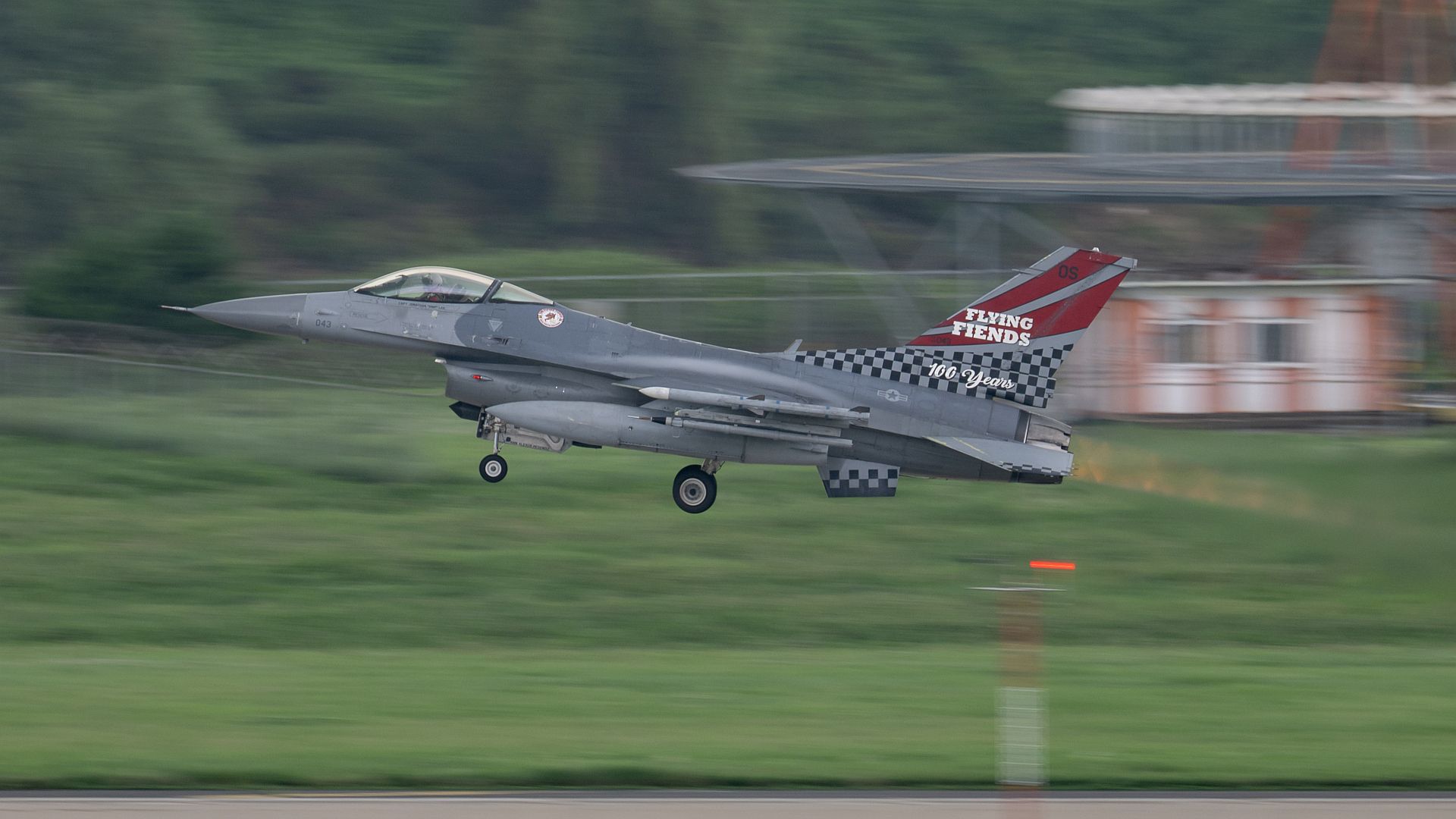
A U.S. Air Force F-16D Fighting Falcon assigned to the 36th Fighter Squadron taxis down the runway at Osan Air Base, Republic of Korea, July 24, 2024. The F-16 Fighting Falcon is a compact, multi-role fighter aircraft, and serves the 36th FS by being highly maneuverable in air-to-air combat and air-to-surface attack. (U.S. Air Force photo by Capt. Kip Sumner)
A U.S. Air Force A-10 Thunderbolt II assigned to the 25th Fighter Squadron takes off at Osan Air Base, Republic of Korea, July 24, 2024. The A-10 Thunderbolt II is a premiere close air support fighter, capable of surviving direct hits from armor-piercing and high explosive projectiles up to 23mm. (U.S. Air Force photo by Capt. Kip Sumner)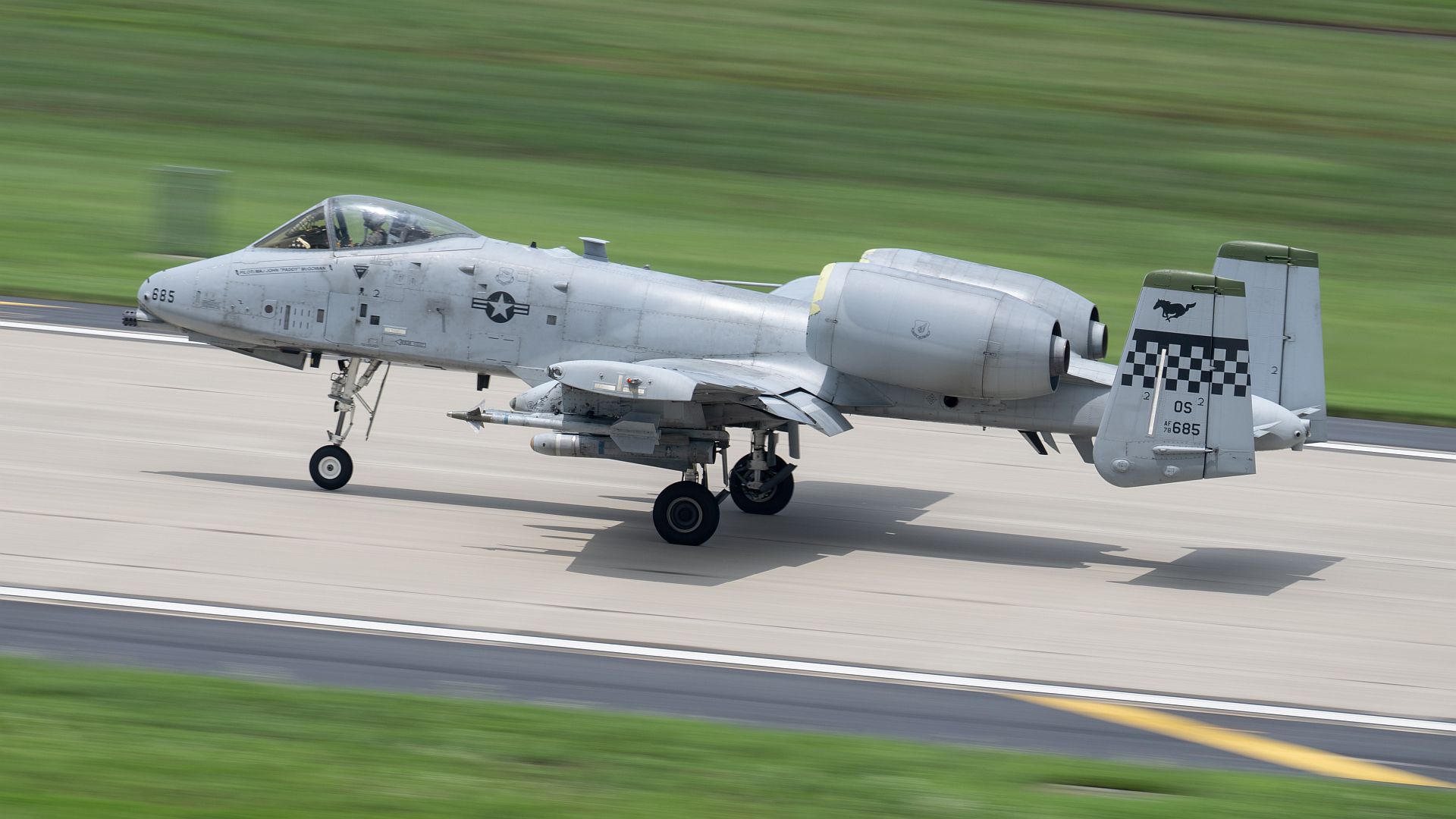
Netherlands, July 29, 2024 – U.S. and Netherlands officials formalized a Letter of Offer and Acceptance (LoA) agreement to purchase Lockheed Martin’s (NYSE: LMT) Joint Air-to-Surface Standoff Missile Extended Range (JASSM-ER). With this agreement, the Netherlands becomes JASSM’s fifth international customer.
“We’re honored to partner with the U.S. Government to provide the Netherlands Armed Forces with the combat proven and mission effective weapon system to meet their ever-evolving strategic defense needs.” said Scott Redmerski, JASSM program director at Lockheed Martin Missiles and Fire Control.
The latest generation of JASSM-ER includes enhancements to hardware and software, providing increased capabilities and more flexible options to match the warfighter’s evolving mission sets.
JASSM has experienced over 20 years of successful partnership with the U.S. Air Force, providing continued significant long-range, precision engagement capabilities for air-to-ground missions. The combat proven and mission effective weapon system is designed to destroy high-value, well-defended targets from significant standoff range, keeping aircrews well out of danger from hostile air defense systems without compromise to lethality or reach.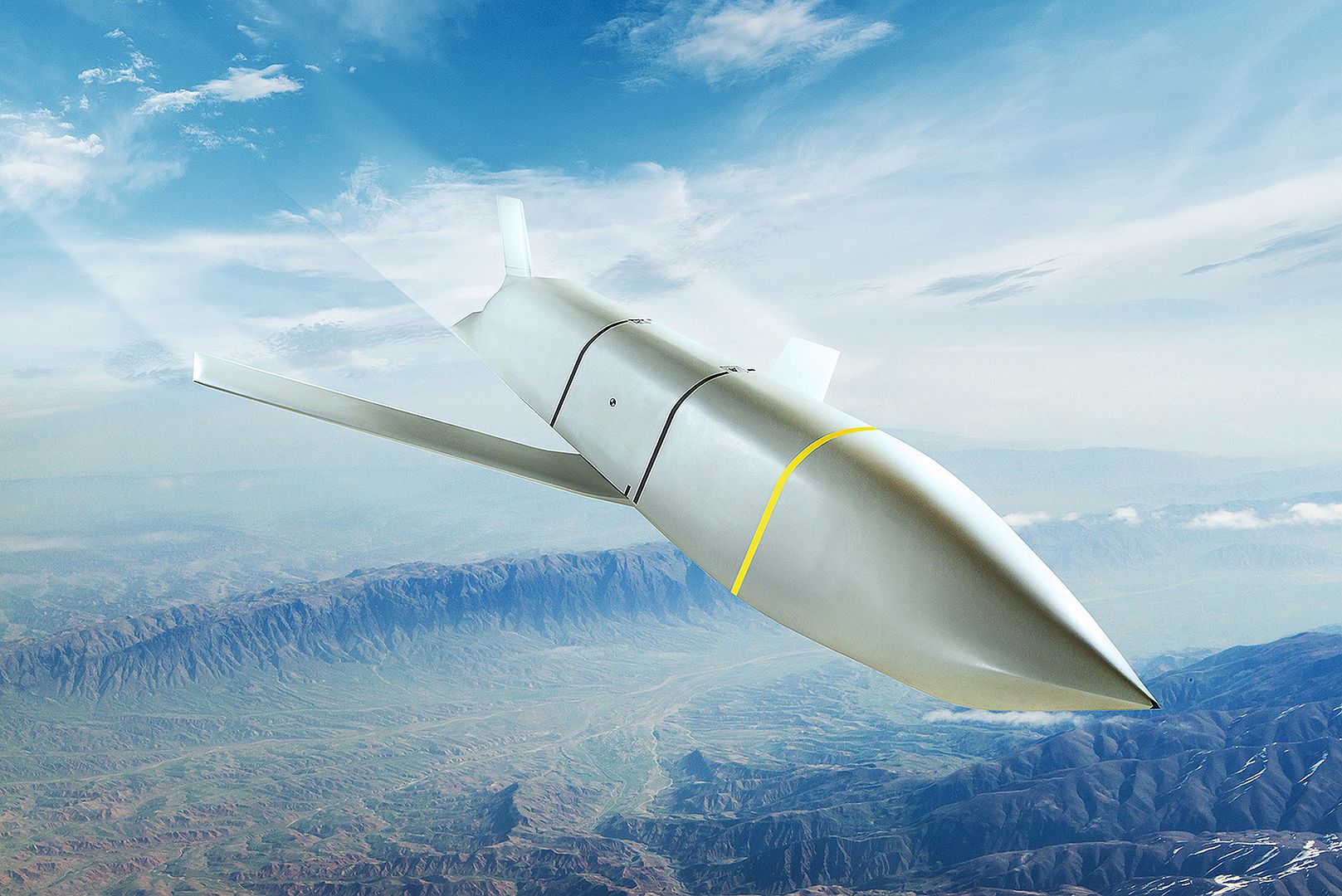
Finnish Air Force F-18s depart Mihail Kogălniceanu Air Base in Romania as Ilmavoimat - Flygvapnet - Finnish Air Force complete their first detachment for NATO enhanced Air Policing.
(Photos courtesy of the RAF)
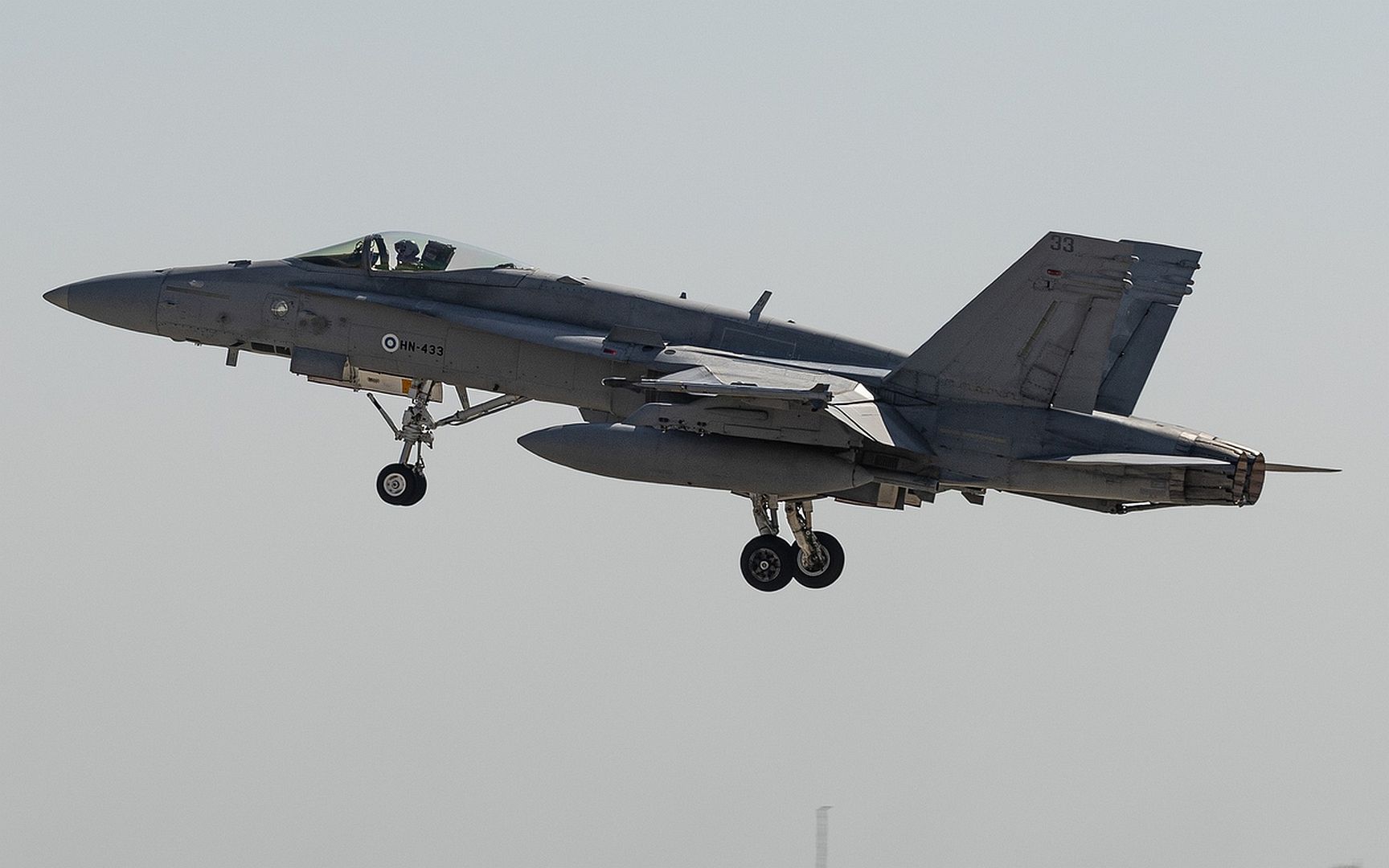

-
 Main AdminA United Launch Alliance’s Atlas V rocket supporting the USSF-51, a classified National Security Space Launch mission, launches from Space Launch Complex 41 at Cape Canaveral Space Force Station, Florida, July. 30, 2024. This was Atlas V's 53rd and final launch for the USSF. (U.S. Space Force photos by Joshua Conti)
Main AdminA United Launch Alliance’s Atlas V rocket supporting the USSF-51, a classified National Security Space Launch mission, launches from Space Launch Complex 41 at Cape Canaveral Space Force Station, Florida, July. 30, 2024. This was Atlas V's 53rd and final launch for the USSF. (U.S. Space Force photos by Joshua Conti)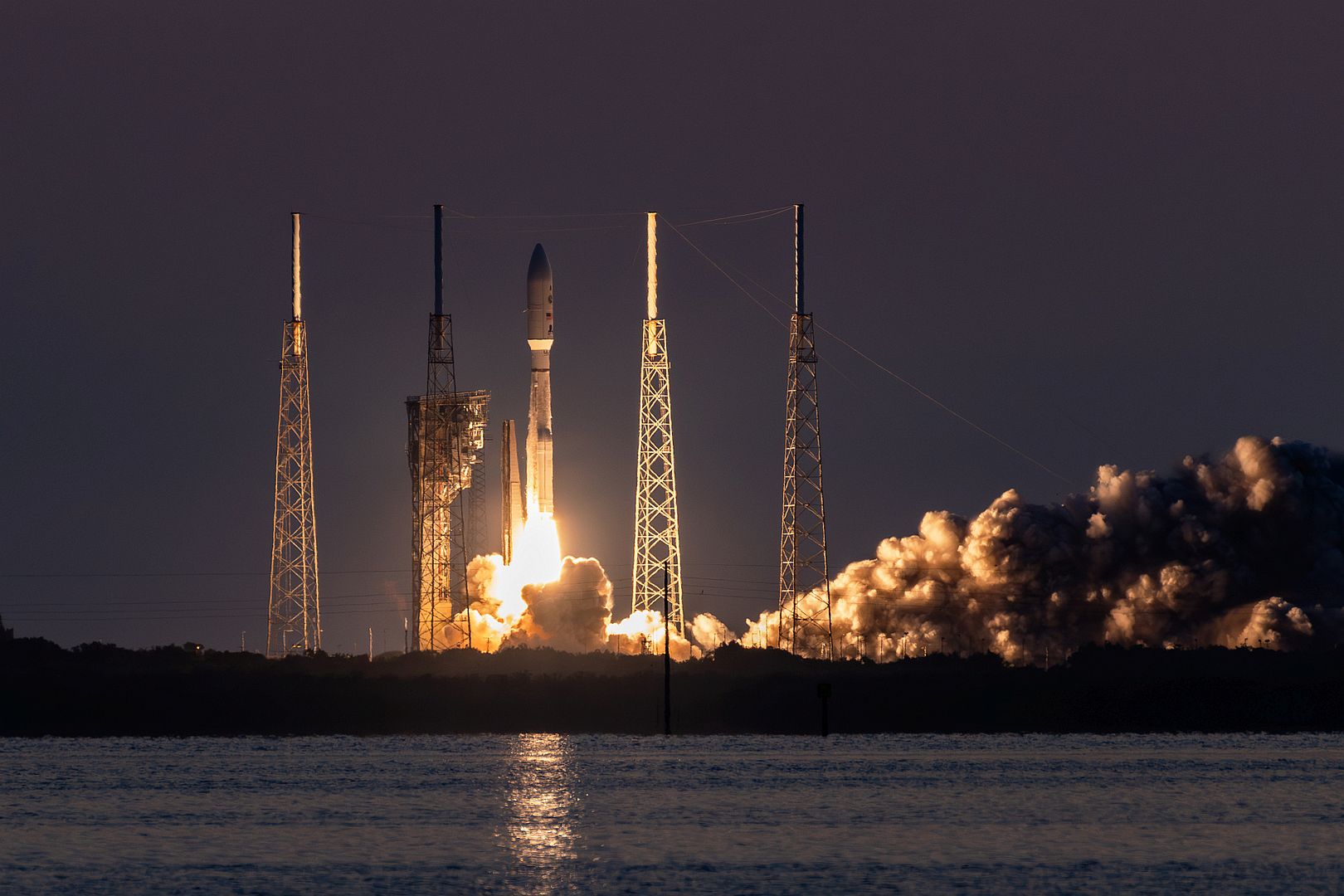

A U.S. Air Force C-130 Hercules drops tactical vehicles during a readiness exercise near Aviano Air Base, Italy, July 29, 2024. The 57th Rescue Squadron conducts different training scenarios to ensure they are ready for every mission. (U.S. Air Force photo by Senior Airman Jenna A. Bond)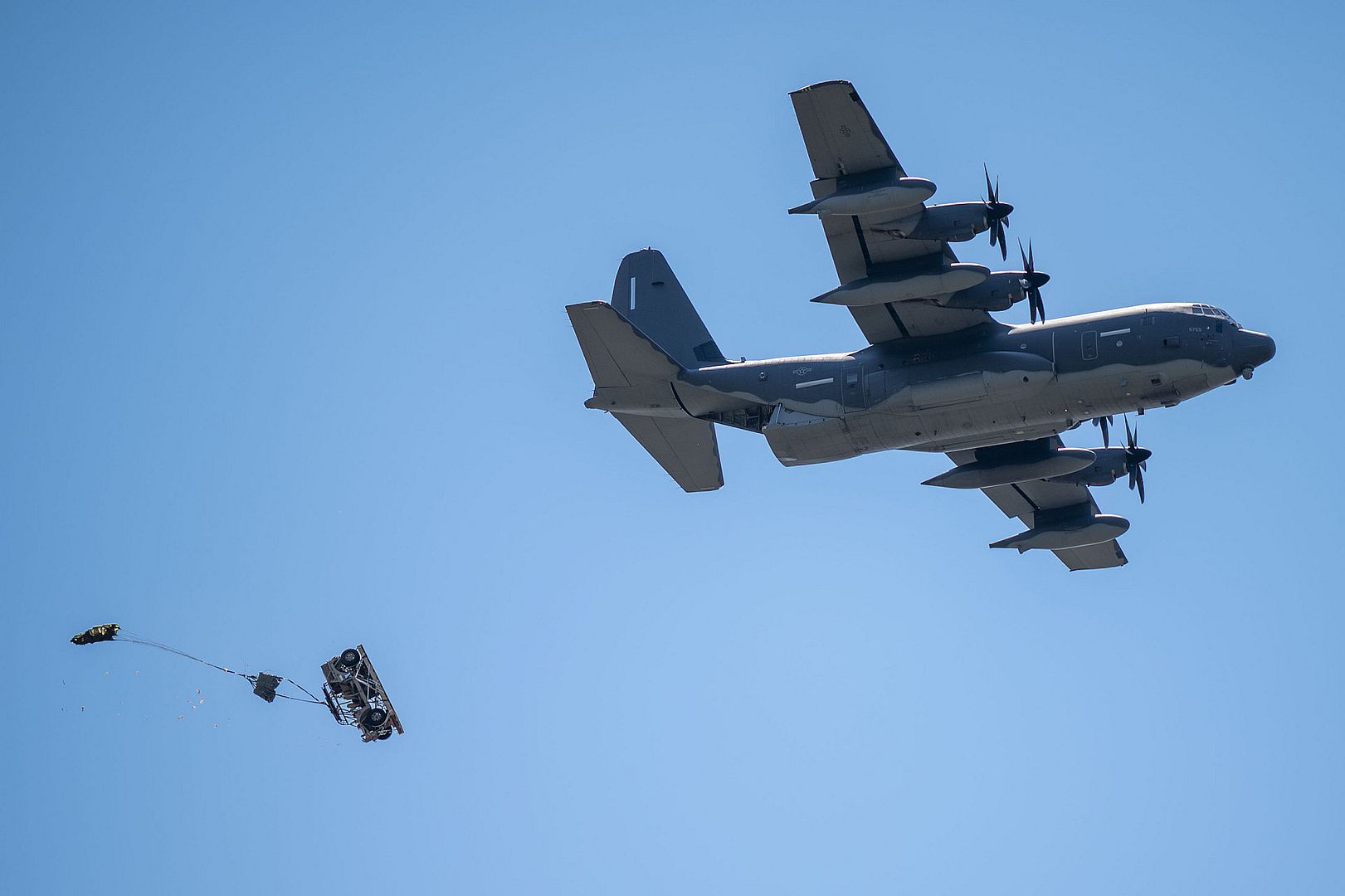
A C-17 Globemaster III sits on the flight line at an undisclosed location within the U.S. Central Command area of responsibility, July 31, 2024. The C-17 is the most flexible cargo aircraft to enter the airlift force with the capability to provide rapid strategic delivery of troops and all types of cargo to main operating bases or forward bases in the deployment area. (U.S. Air Force photo)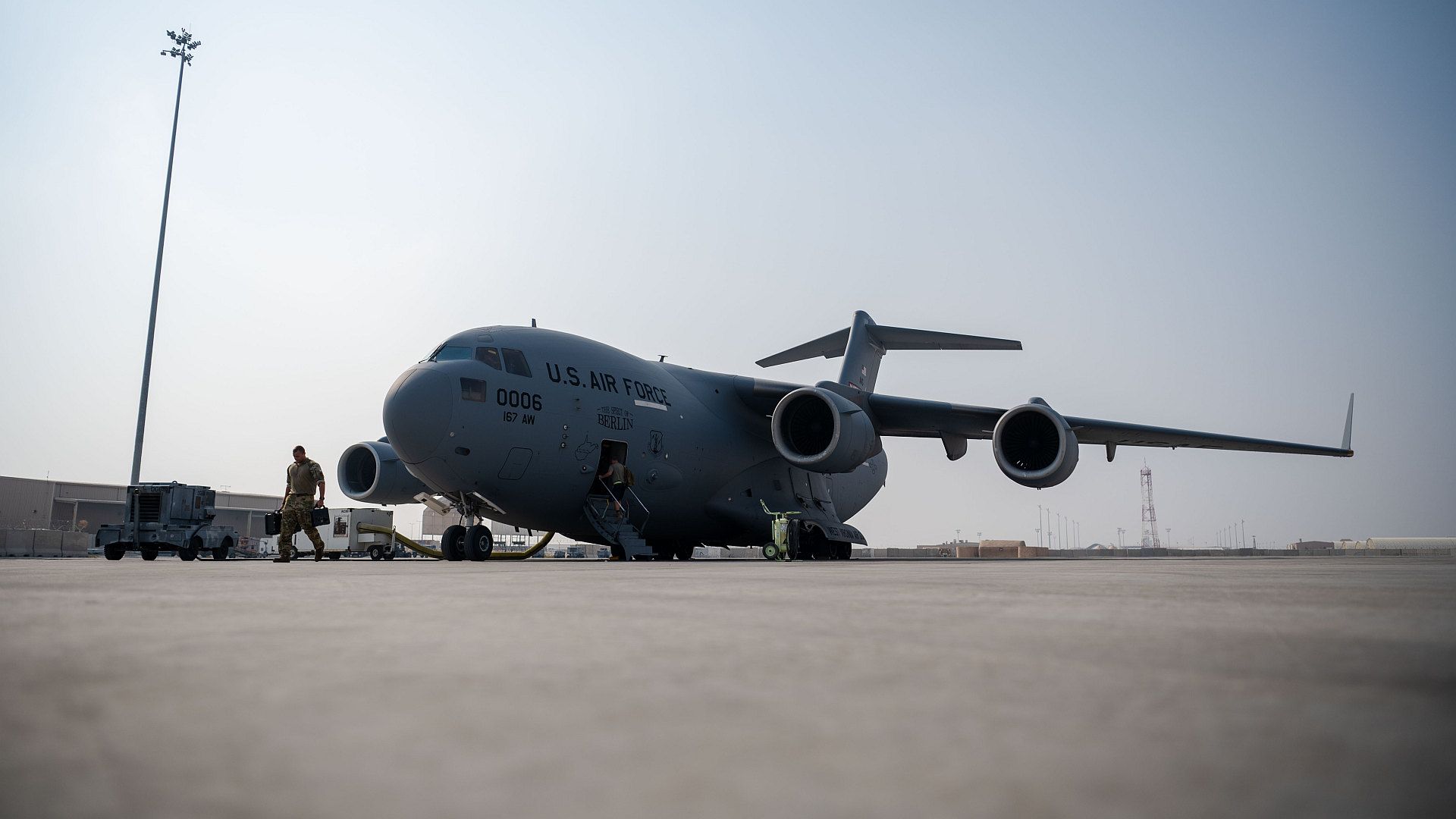
PHILIPPINE SEA (July 29, 2024) An MV-22B Osprey tiltrotor aircraft from Marine Medium Tiltrotor Squadron (VMM) 262, lands on the flight deck of the forward-deployed amphibious assault ship USS America (LHA 6), during routine operations in the Philippine Sea, July 29. America, lead ship of the America Amphibious Ready Group, along with the 31st Marine Expeditionary Unit, are underway conducting routine operations in the U.S. 7th Fleet area of operations. U.S. 7th Fleet is the U.S. Navy’s largest forward-deployed numbered fleet, and routinely interacts and operates with allies and partners in preserving a free and open Indo-Pacific region. (U.S. Navy photo by Mass Communication Specialist Seaman Kenneth Melseth)_262_lands_on_the_flight_deck_of_the_forward-deployed_amphibious_assault_ship_USS_America.jpg?width=1920&height=1080&fit=bounds)
AFWERX, the Department of the Air Force’s innovation arm within the Air Force Research Laboratory, and Beavercreek, Ohio-based defense contractor Modern Technology Solutions Inc. evaluate Pivotal’s BlackFly electric vertical take-off and landing aircraft at Springfield-Beckley Airport, Ohio, July 12, 2024. The effort is part of the AFWERX Agility Prime program, which focuses on assessing the aircraft and its supporting ecosystem through an operational leasing initiative to accelerate innovative and emerging technologies that can be transitioned to the warfighter. (U.S. Air Force photos by Matthew Clouse).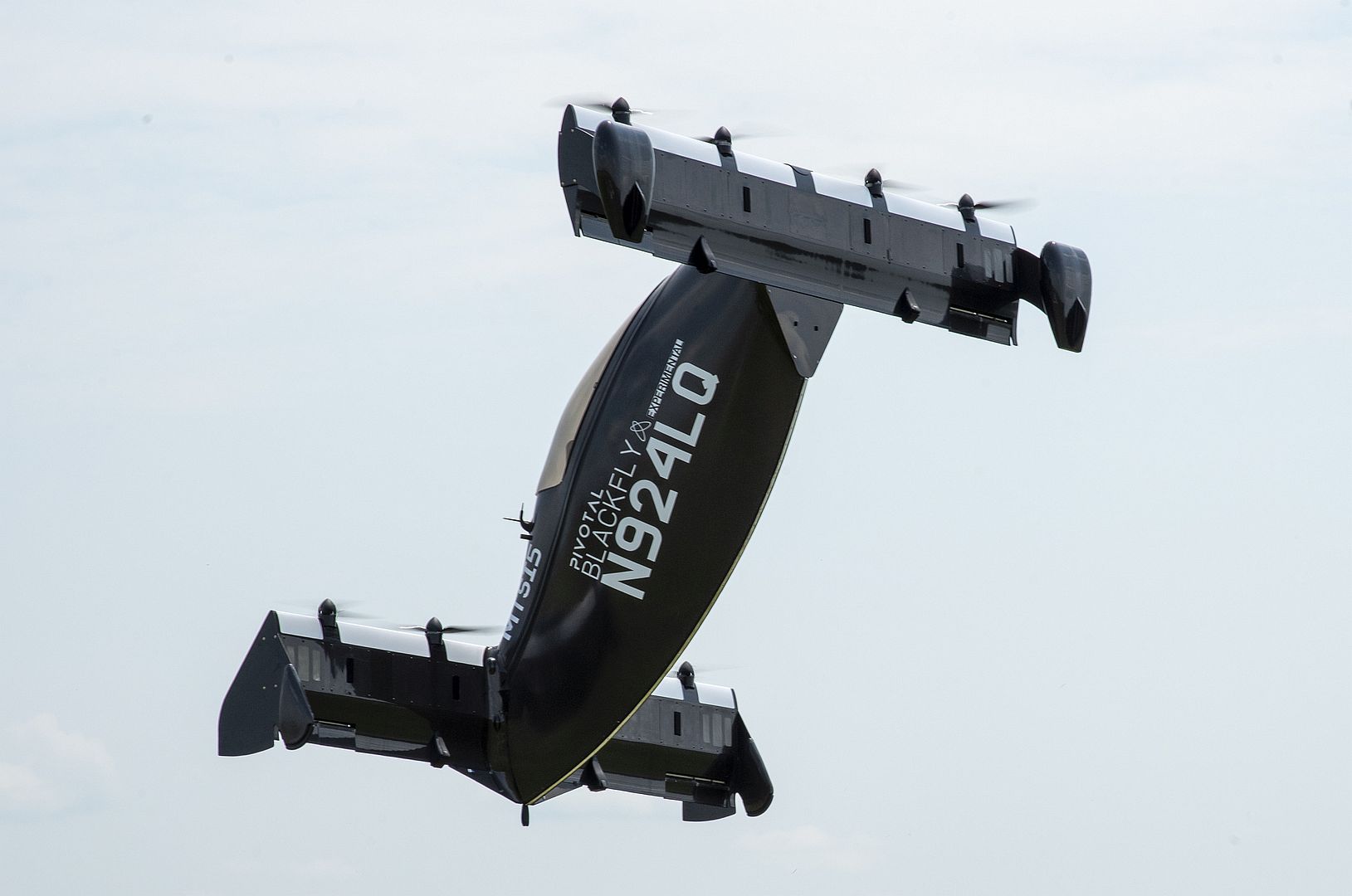

Sarajevo, Bosnia-Herzegovina (July 31, 2024)— Bell Textron Inc., a Textron Inc. (NYSE: TXT) company, today announced a signed purchase agreement for a SUBARU Bell 412EPX to the Sarajevo Canton Ministry of Interior, forming the agency’s first helicopter unit. The aircraft will support medical transport, citizen evacuation, and assistance in the event of natural disasters and incidents.
“Through great collaboration with the Sarajevo Canton police force and government, we’re excited to support a well-earned milestone for their force and provide their first-ever helicopter,” said Danny Maldonado, chief commercial officer, Commercial Business, Bell. “We are thrilled to work with Sarajevo Canton and look forward to seeing the incredible lifesaving and firefighting efforts they carry out with the SUBARU Bell 412EPX platform.”
The signing ceremony took place at the Sarajevo Canton's Ministry of the Interior (MoI), in the presence of representatives of the United States Embassy, representatives of the cantonal and Federation (FBiH) entity authorities, and other dignitaries. The contract was signed by Admir Katica, Minister of the Interior of Sarajevo Canton, and Vedran Kljucanin, Director of "SHOT,” Bell’s supplier and regional Independent Representative (IR).
“This day will be remembered in history, as the day when the KS MoI concluded the procurement of the first helicopter for the citizens of Sarajevo Canton, but also for the whole of Bosnia and Herzegovina,” said Minister Katica.
Katica also highlighted the numerous obstacles faced during the procurement process, emphasizing the necessity of acquiring the helicopter for the benefit of residents and the broader region. “Never again will citizens depend on the goodwill or political decisions of others when they need emergency medical transport, evacuation, or assistance in the event of floods, landslides, fires, earthquakes, or any other unforeseen situation. Our helicopter unit will be the first to come to the aid of our citizens.”
Certified in 2018, the SUBARU BELL 412EPX, possesses an increased maximum internal weight of 12,200 lbs, external weight of 13,000 lbs and up to 5,000 lbs of goods with a cargo hook. The platform enables large cargo and personnel transportation with its ability to carry up to 5,385 lbs.The SUBARU BELL 412EPX benefits from a more robust main rotor gearbox dry run capability, increased internal Maximum Gross Weight to 12,200 lbs. and mast torque output of +11% at speeds below 60 knots.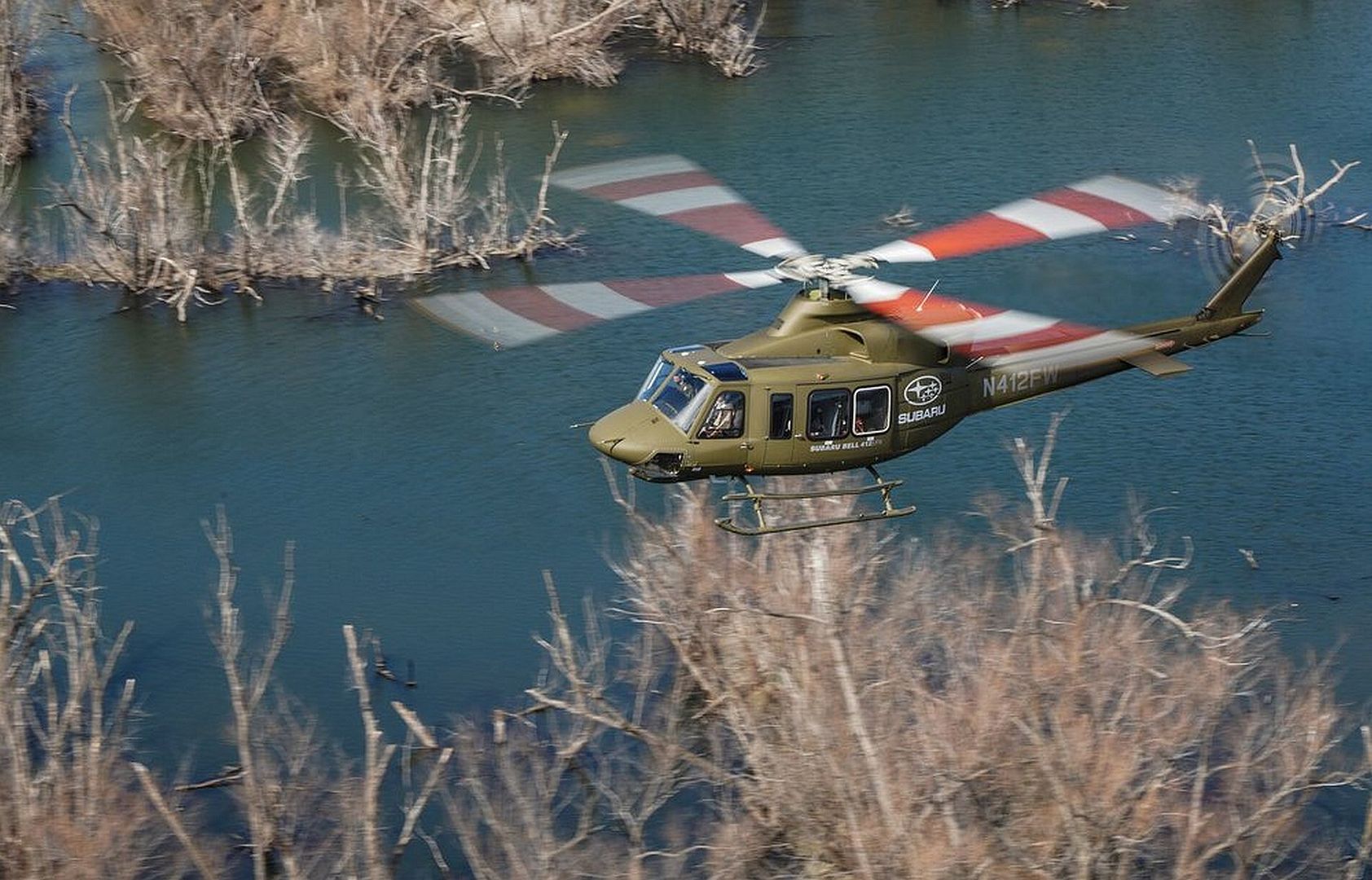
SAN DIEGO – 31 July 2024 – General Atomics Aeronautical Systems, Inc. (GA-ASI) has been awarded a $98 million contract as Lead Systems Integrator for Project Red 5. The Office of the Under Secretary of Defense (OUSD) Project, run by the Test Resource Management Center (TRMC), will prototype advanced autonomous air-to-air capability to provide adversary or “red” air training profiles.
GA-ASI will operate two of its company-owned MQ-20 Avenger® Unmanned Aircraft Systems and provide mission autonomy software that integrates cutting-edge sensors, data links and other advanced mission systems. Project Red 5 will prototype full profile autonomous air-to-air missions to enable current fourth and fifth generation Blue Force fighters to train against robust, autonomous “red air” surrogate platforms.
“GA-ASI has continued to invest and deploy our open architecture autonomy ecosystem integrated with best-of-breed mission systems,” said Jeff Hettick, GA-ASI vice president for Agile Mission Systems. “We are thrilled to partner with TRMC to bring these capabilities that create operationally relevant Red Air surrogates and significantly improve Blue Force mission success in realistic air-to-air training scenarios.”
Project Red 5 will complement GA-ASI’s continued work on Unmanned Combat Air Vehicle (UCAV) initiatives, which includes autonomy and mission system tests on MQ-20 Avengers, XQ-67A developed by GA-ASI for the Air Force Research Laboratory (AFRL), and prototype production and flight testing for the U.S. Air Force Life Cycle Management Center’s Collaborative Combat Aircraft (CCA) program.
About GA-ASI
General Atomics Aeronautical Systems, Inc. (GA-ASI), an affiliate of General Atomics, is a leading designer and manufacturer of proven, reliable RPA systems, radars, and electro-optic and related mission systems, including the Predator® RPA series and the Lynx® Multi-mode Radar. With more than eight million flight hours, GA-ASI provides long-endurance, mission-capable aircraft with integrated sensor and data link systems required to deliver persistent situational awareness. The company also produces a variety of sensor control/image analysis software, offers pilot training and support services, and develops meta-material antennas.
For more information, visit www.ga-asi.com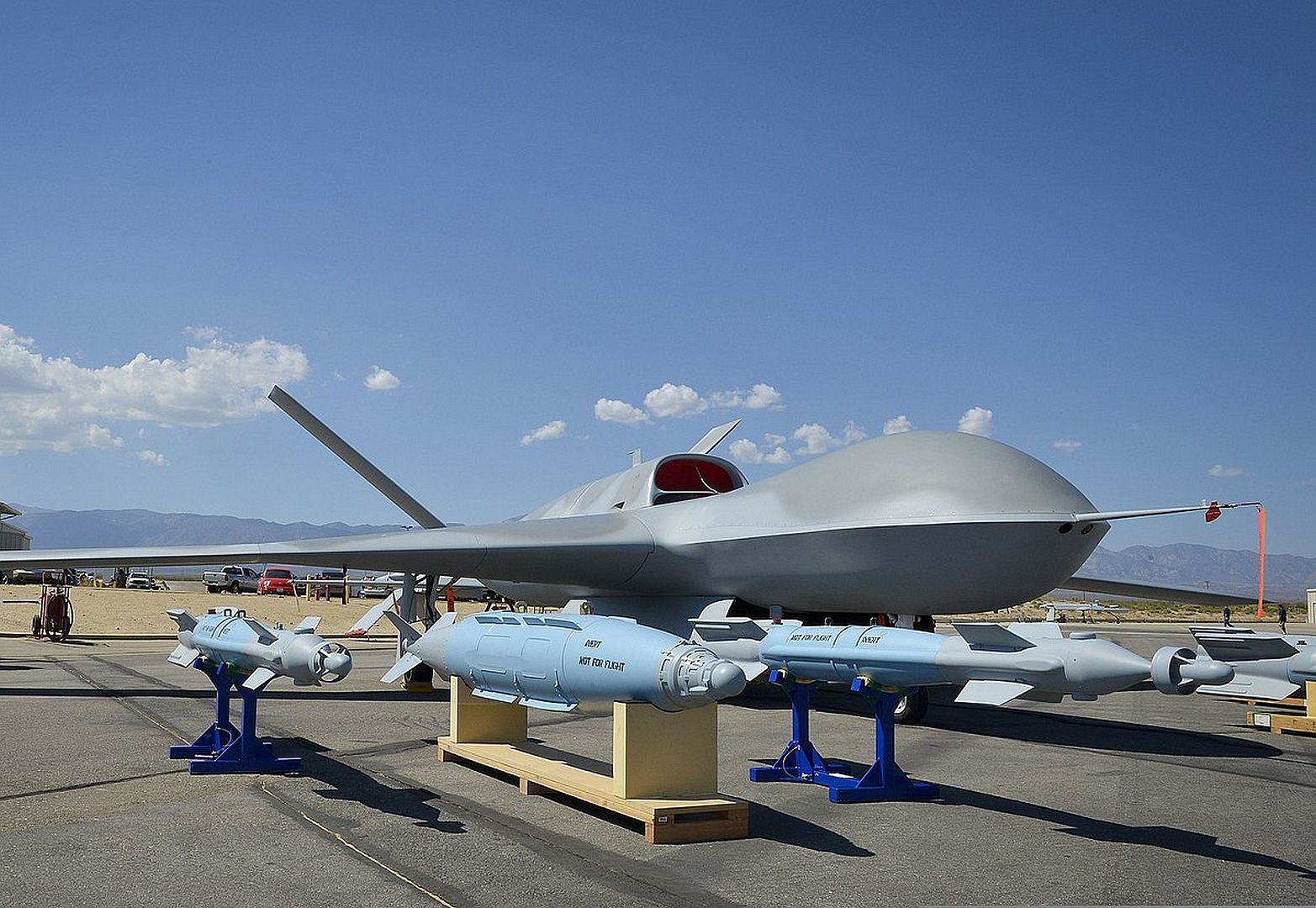
Some more photos from Exercise Pitch Black 24, showing the formidable Su-30 MKI multirole fighters, of the Indian Air Force.
(Photos courtesy of the RAAF)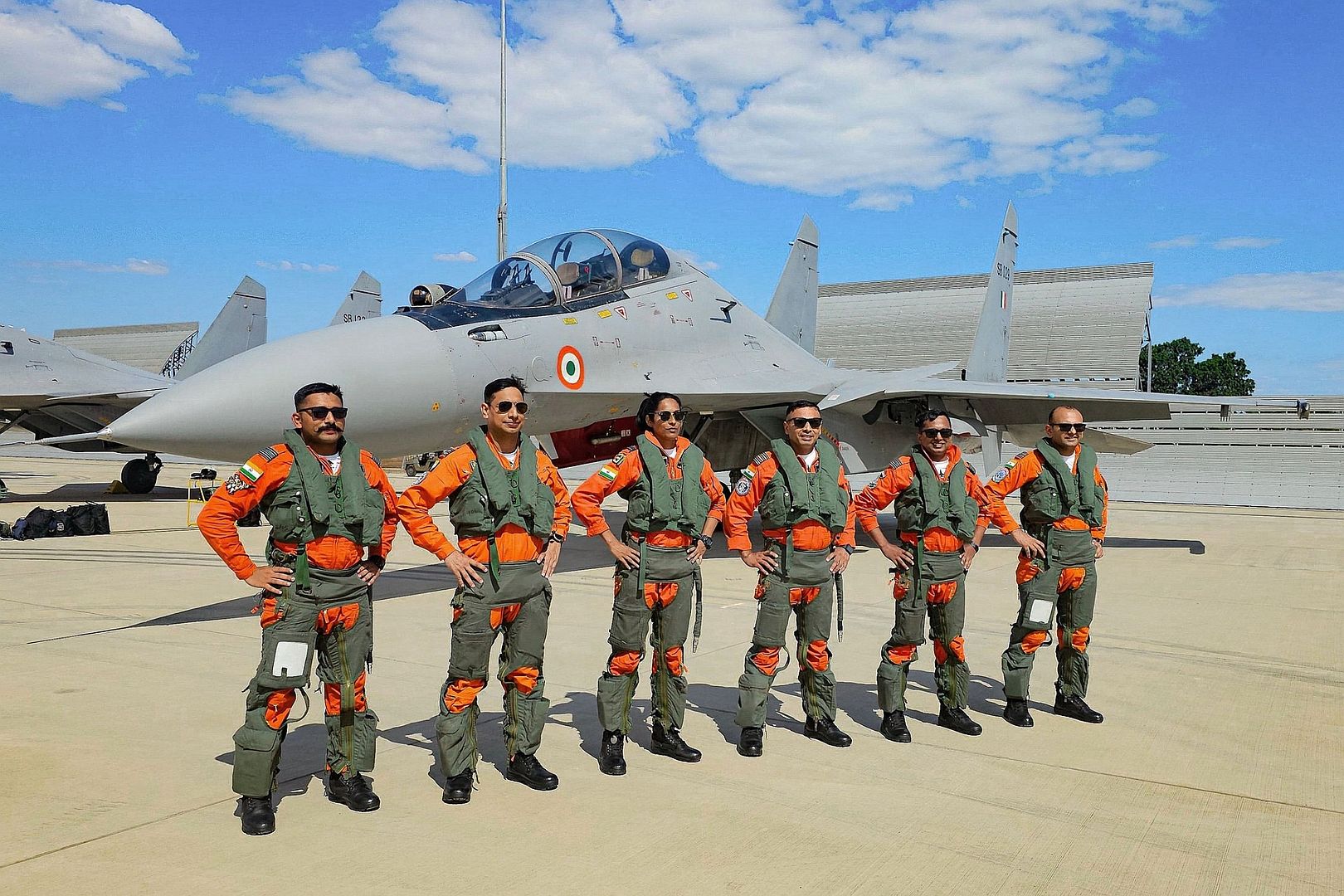

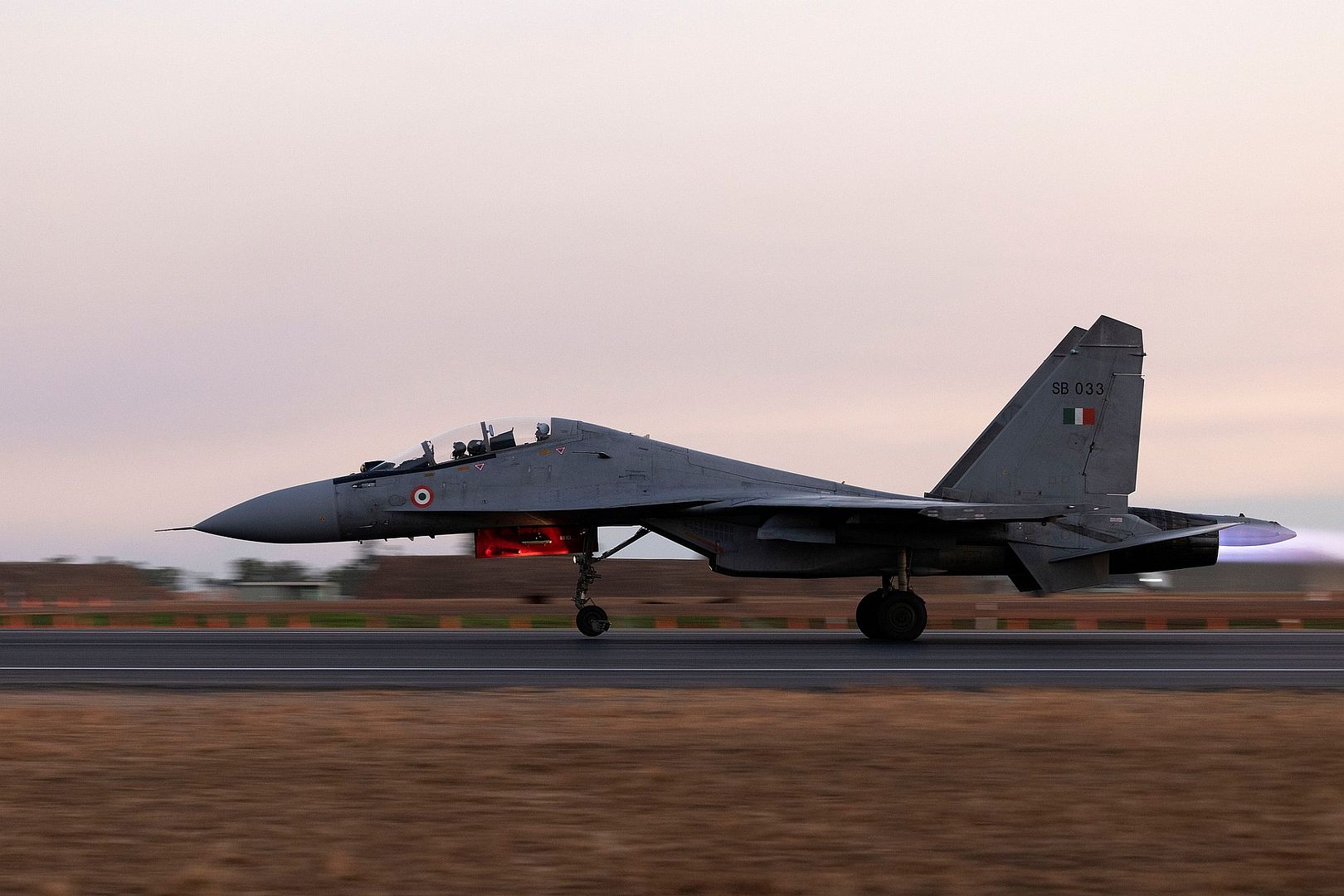
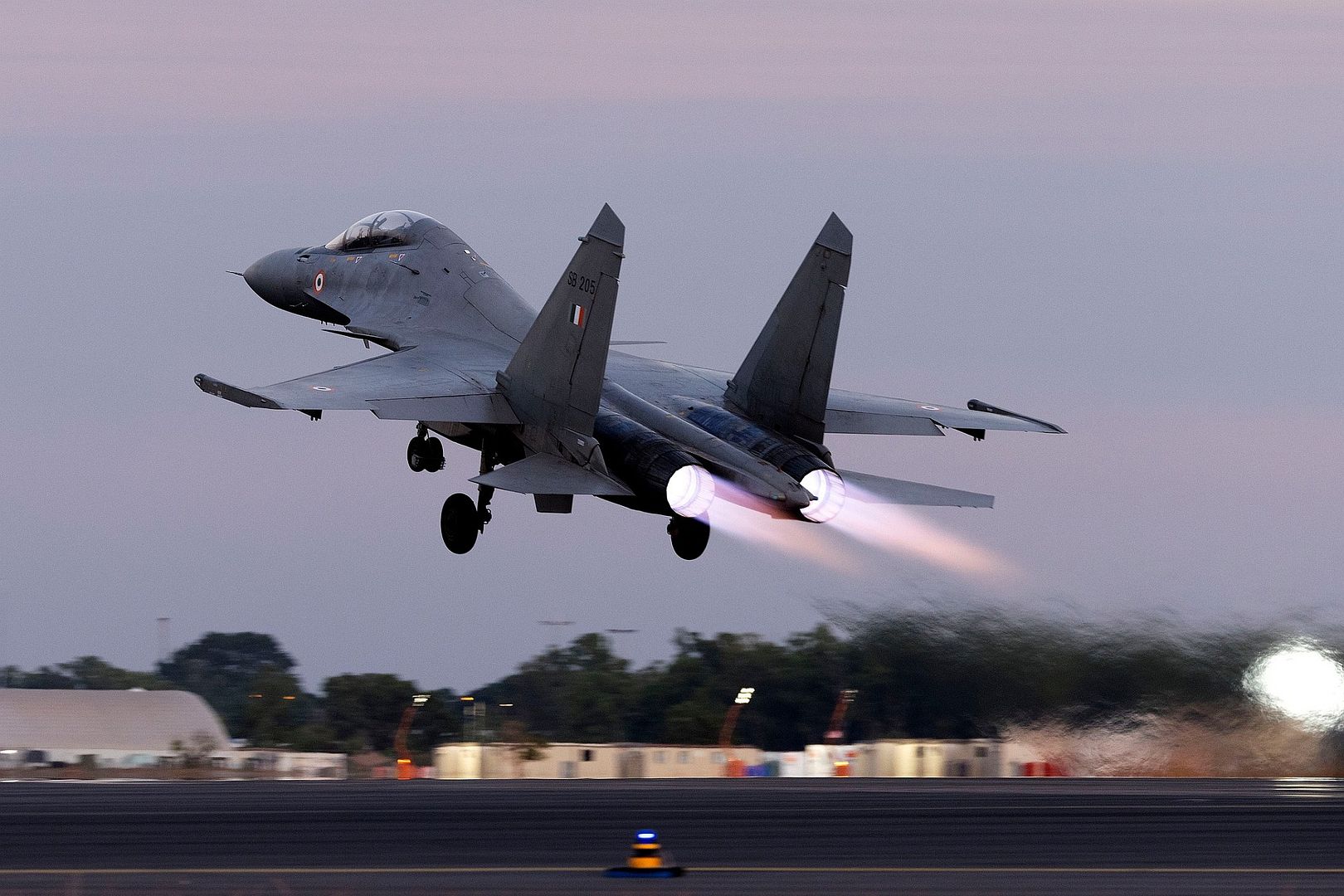
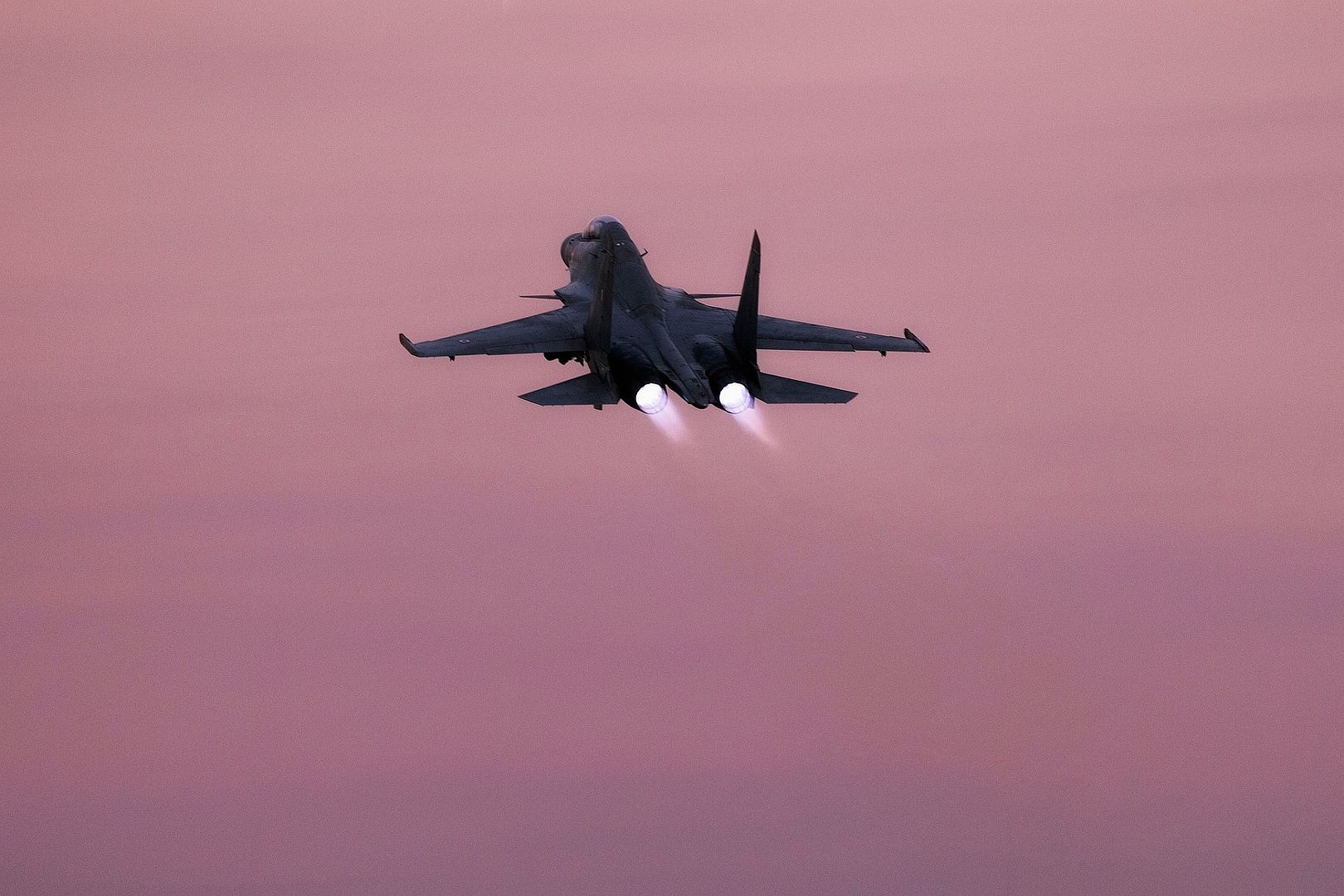
The Aeronautica Militare has landed at Šiauliai base, Lithuania, 4 Eurofighter Typhoon aircraft for the Baltic Air Policing mission
In the past few days the Italian contingent, consisting of Eurofighter Typhoon aircraft and personnel from 36th Stormo, 37th Stormo, 4th Stormo and 51st Stormo, completed their deployment in the Operational Theater.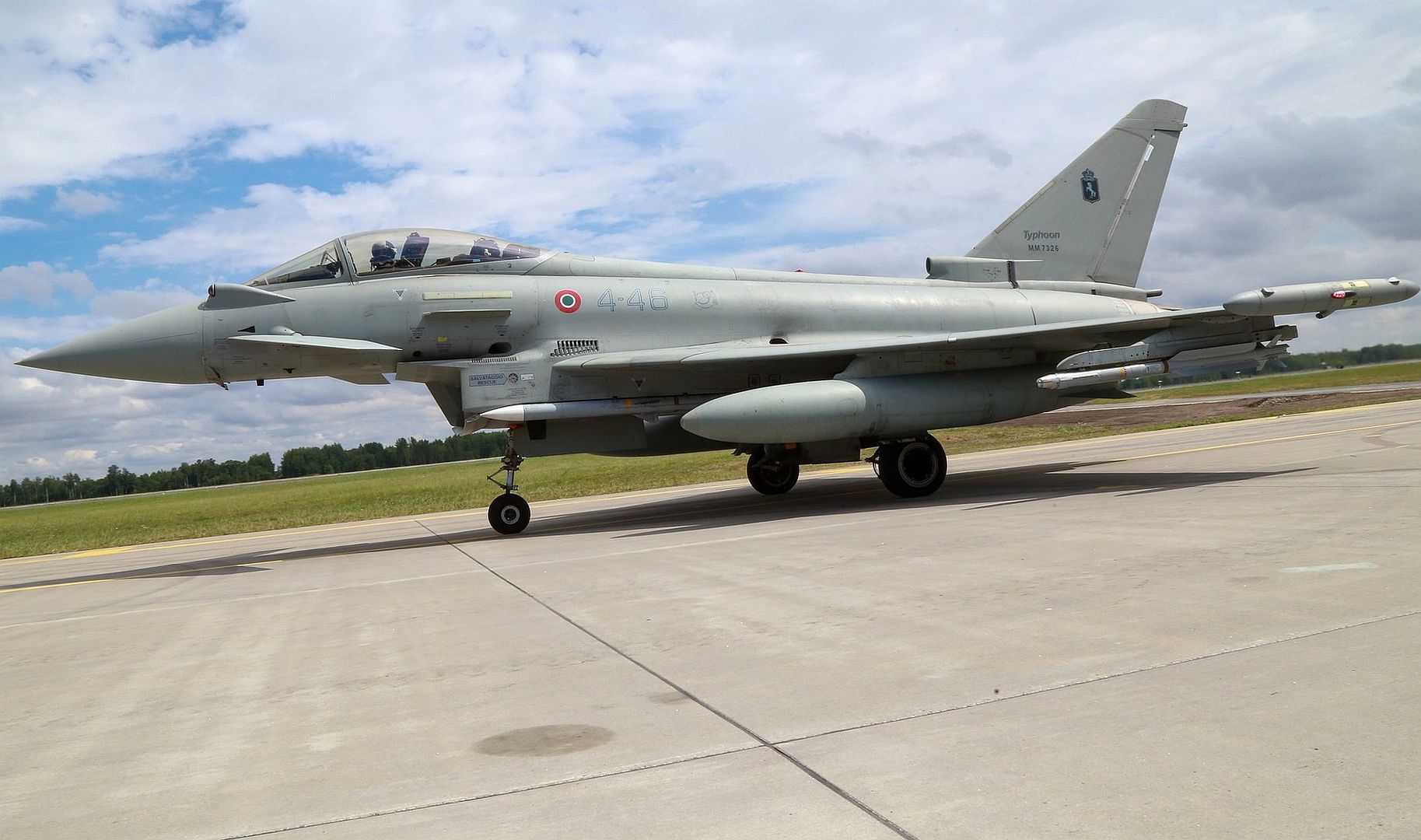
The mission, included in the broader context of NATO Air Shielding, has its objective to help ensure the integrity of allied airspace against any potential air threat.
(Photos courtesy of the Aeronautica Militare)
-
 Main AdminA U.S. Air Force F-22 Raptor assigned to the 3rd Wing takes off during a live generation exercise from Joint Base Elmendorf-Richardson, Alaska, July 30, 2024. The 90th and 525th Fighter Generation Squadrons conducted a live generation exercise, loading live munitions and strengthening skills used to ensure air dominance and power projection across the Indo-Pacific region. (U.S Air Force photo by Senior Airman Julia Lebens)
Main AdminA U.S. Air Force F-22 Raptor assigned to the 3rd Wing takes off during a live generation exercise from Joint Base Elmendorf-Richardson, Alaska, July 30, 2024. The 90th and 525th Fighter Generation Squadrons conducted a live generation exercise, loading live munitions and strengthening skills used to ensure air dominance and power projection across the Indo-Pacific region. (U.S Air Force photo by Senior Airman Julia Lebens)
A U.S Air Force F-22 Raptor assigned to the 90th Fighter Squadron sits on the flightline during a live generation exercise at Joint Base Elmendorf-Richardson, Alaska, July 29, 2024. The 90th and 525th Fighter Generation Squadrons conducted a live generation exercise, loading live munitions and strengthening skills used to ensure air dominance and power projection across the Indo-Pacific region. (U.S Air Force photo by Senior Airman Julia Lebens)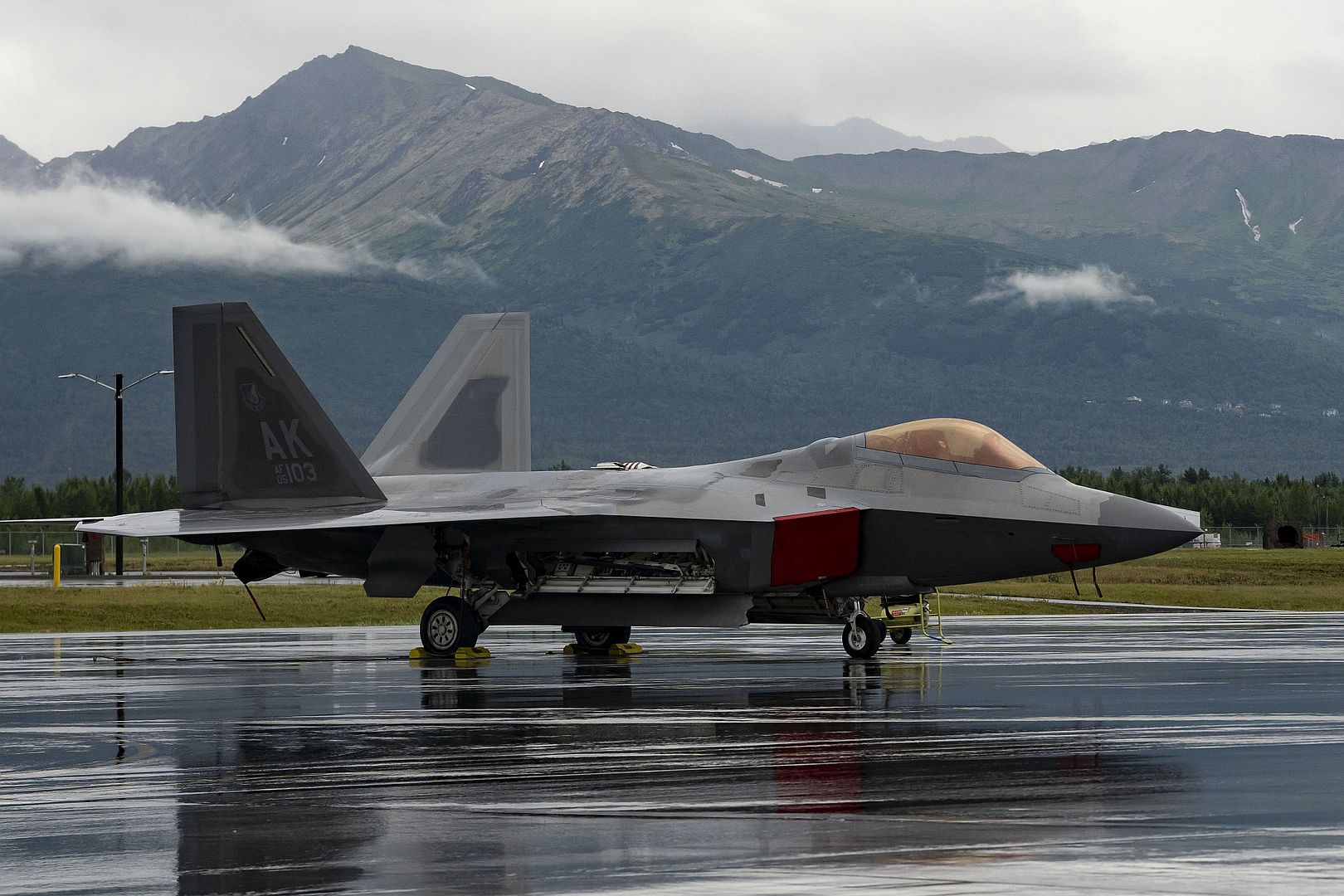
A U.S. Air Force F-22A Raptor pilot taxis onto the flightline during Exercise Pitch Black 2024 at Royal Australian Air Force Base Tindal, July 30. The U.S. Joint Forces have an enduring commitment to a free and open Indo-Pacific across all domains for the security and wellbeing of our nation and the international community. (U.S. Air Force photo by Tech. Sgt. Andrea Posey)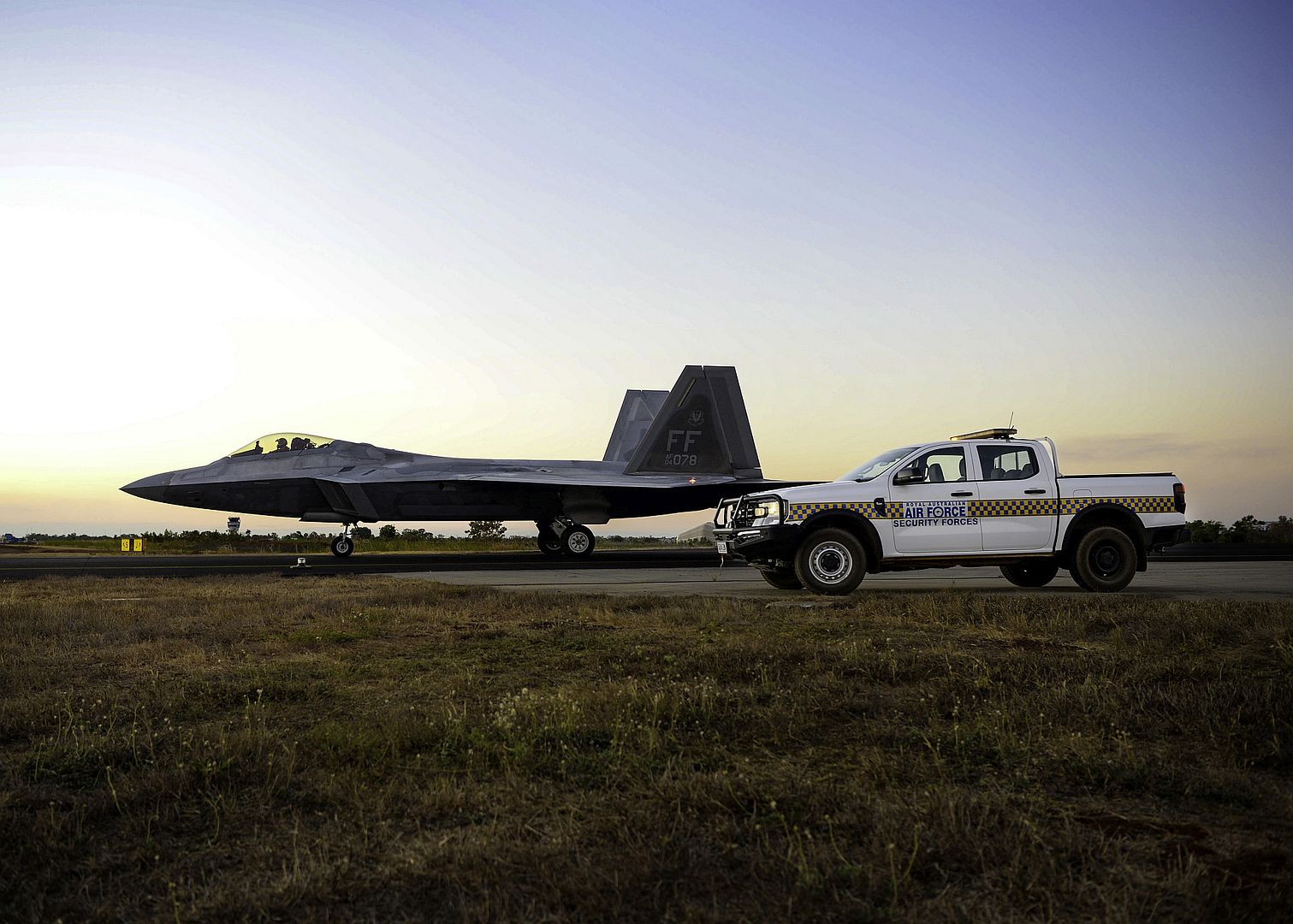
U.S. Air Force F-22A Raptors assigned to the 27th Expeditionary Fighter Squadron along with Royal Australian Air Force F-35A Lightning IIs from No 75 Squadron and a KC-30A Multi Role Tanker Transport aircraft from No 33 Squadron, demonstrate a show of force by conducting an elephant walk at RAAF Base Tindal, Australia, July 31, 2024. Exercise Pitch Black showcases our capability to come together with our Allies and partners to synchronize efforts across a Joint, Combined Force. To deter aggression within the Indo-Pacific, our Air Forces must be ready and resilient in the face of future challenges and prepared to integrate with regional and global counterparts. (U.S. Air Force photo by Staff Sgt. Spencer Tobler)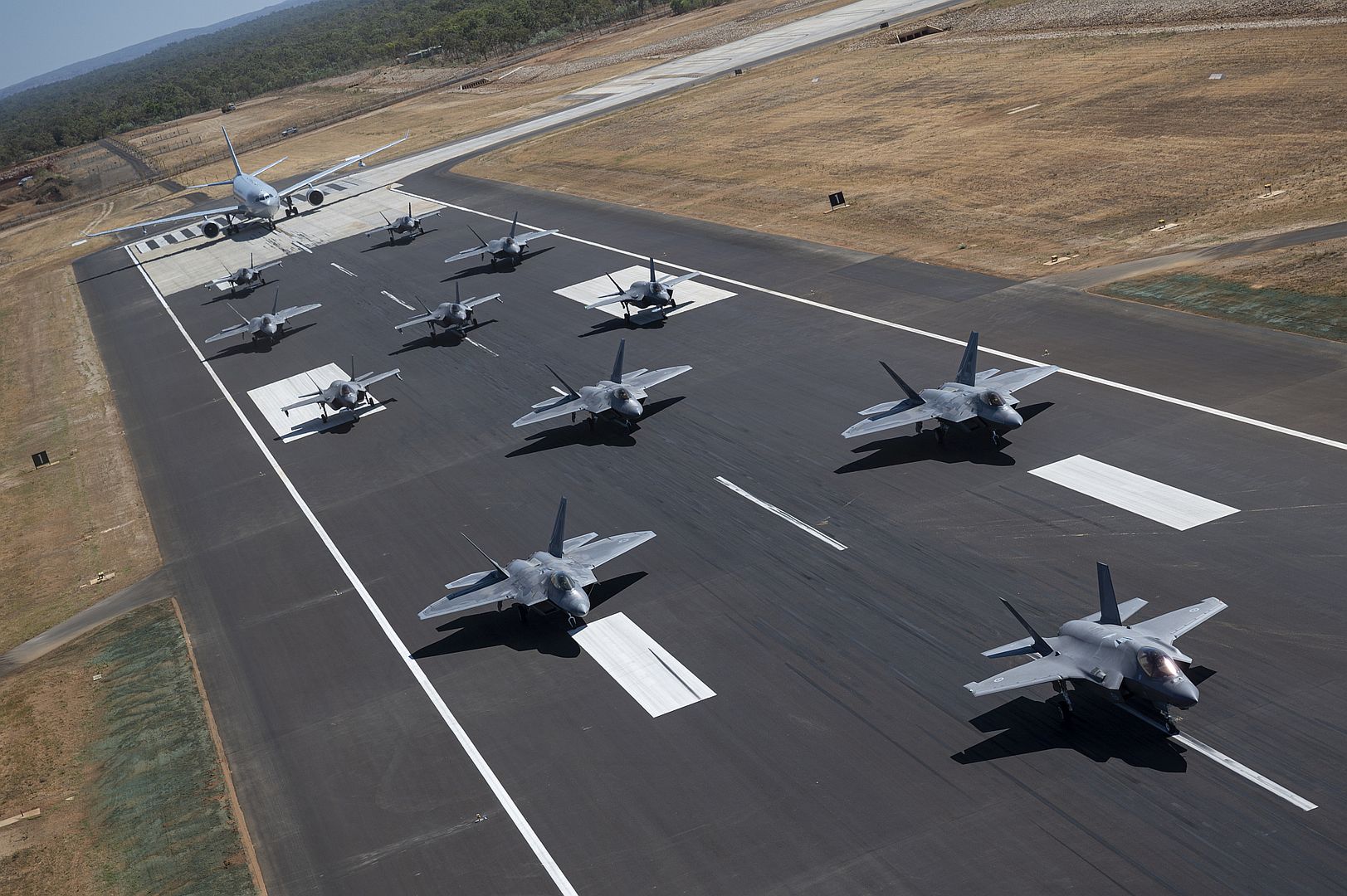
07.31.2024
A B-52 Stratofortress soars the skies over former Loring Air Force Base in Limestone, Maine. A handful of events are scheduled to take place at the former Strategic Air Command superbase, welcoming all as they recognize 30 years since the closure.
(Photo by Master Sgt. Andrew Sinclair)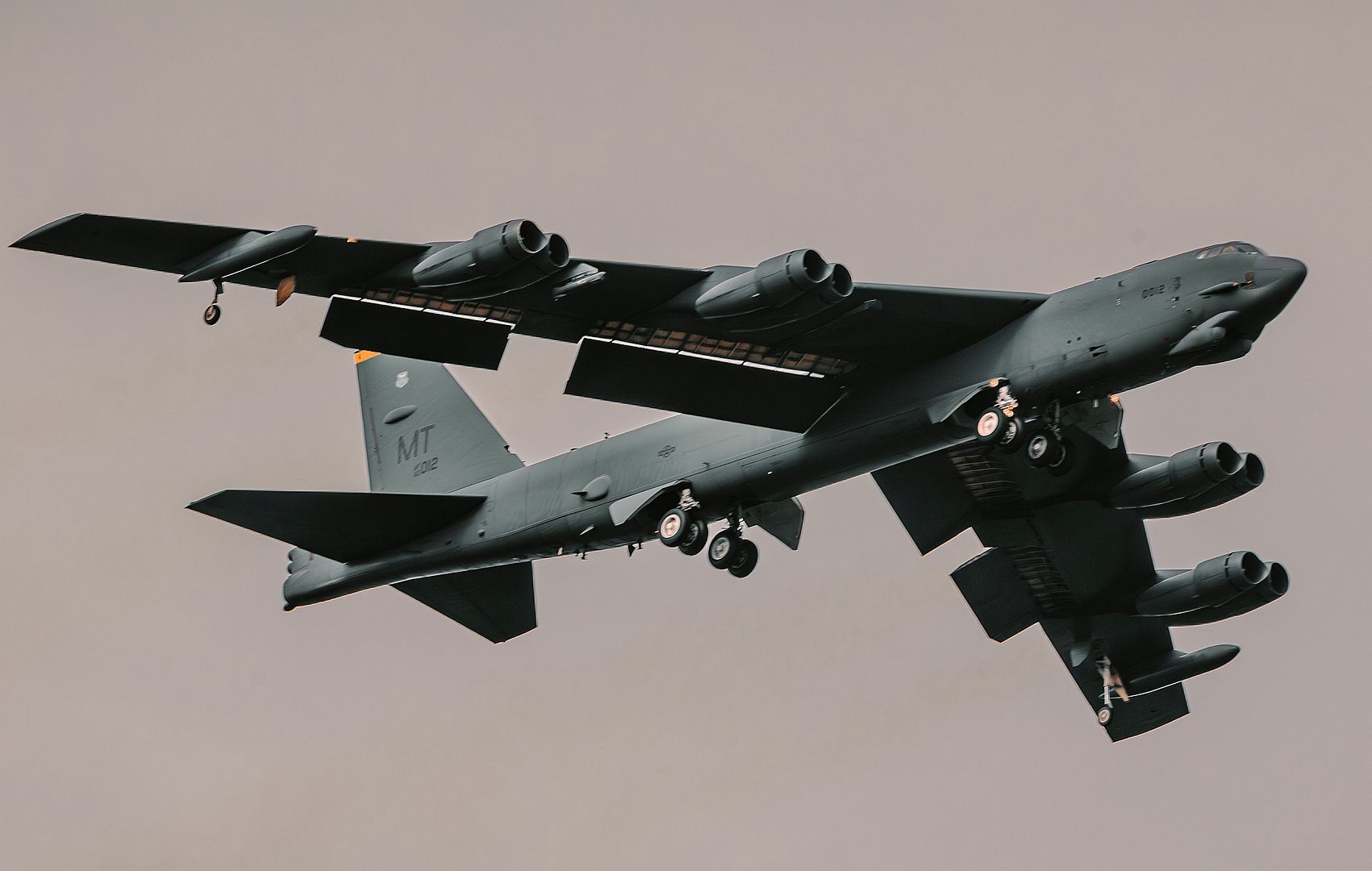
ATLANTIC OCEAN (July 30, 2024) An E/A-18G Growler, attached to the “Main Battery” of Electronic Attack Squadron (VAQ) 144, lands on the flight deck of the Nimitz-class aircraft carrier USS Harry S. Truman (CVN 75), July 30. The Harry S. Truman Carrier Strike Group is underway in the Atlantic Ocean completing integrated naval warfighting training. Composite Unit Training Exercises are an intense, multi-week exercise designed to fully integrate a carrier strike group as a cohesive, multi-mission fighting force, to assess their ability to carry out sustained combat operations from the sea, and drive future warfighting development. (U.S. Navy Photo by Mass Communication Specialist 2nd Class Matthew Nass)_144_lands_on_the_flight_deck_of_the_Nimitz-class_aircraft_carrier_USS_Harry_S._Truman.jpg?width=1920&height=1080&fit=bounds)
An F-15 Eagle belonging to the 144th Fighter Wing of the California Air National Guard takes off from Portland Air National Guard Base, Ore., July 23, 2024. The 144th Fighter Wing Eagles are partipating in a two week long Dissimilar Air Combat Training (DACT) with F-15 Eagles and EXs from Portland's 123rd Fighter Squadron. DACT allows pilots to apply and perfect advanced aerial techniques by playing out various combat scenarios. (U.S. Air National Guard photo by Master Sgt. Steph Sawyer)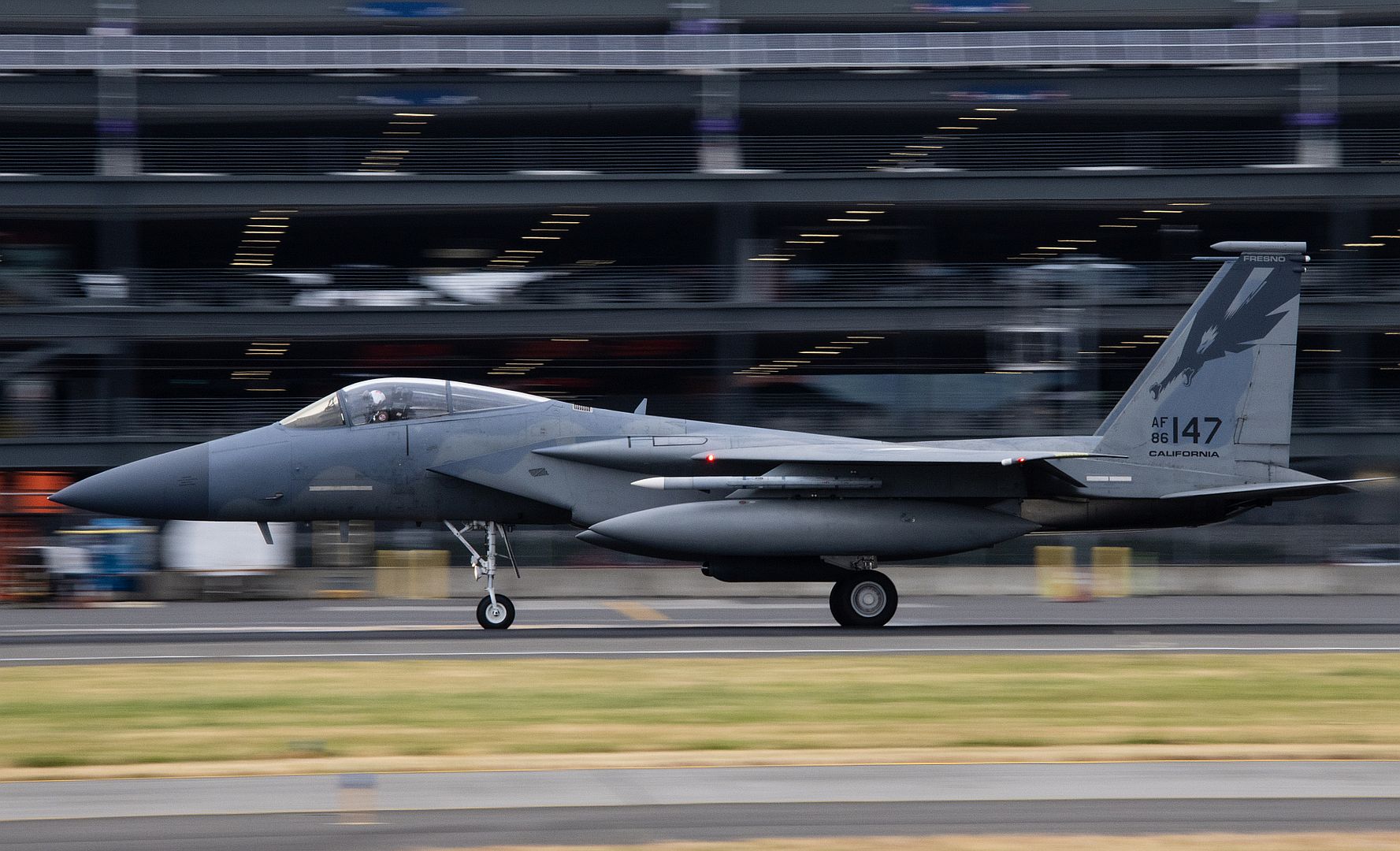
A B-52 Stratofortress assigned to the 69th Bomb Squadron lands at Fairchild Air Force Base, Washington, July 24, 2024. Four B-52s from Minot AFB traveled to Fairchild AFB for Agile Combat Employment integration event, Agile Warbird. During the event, the B-52 aircrew demonstrated their ability to operate out of a diverse location and provided Fairchild Airmen the opportunity to train with the B-52 and its personnel. (U.S. Air Force photo by Airman 1st Class Megan Delaine)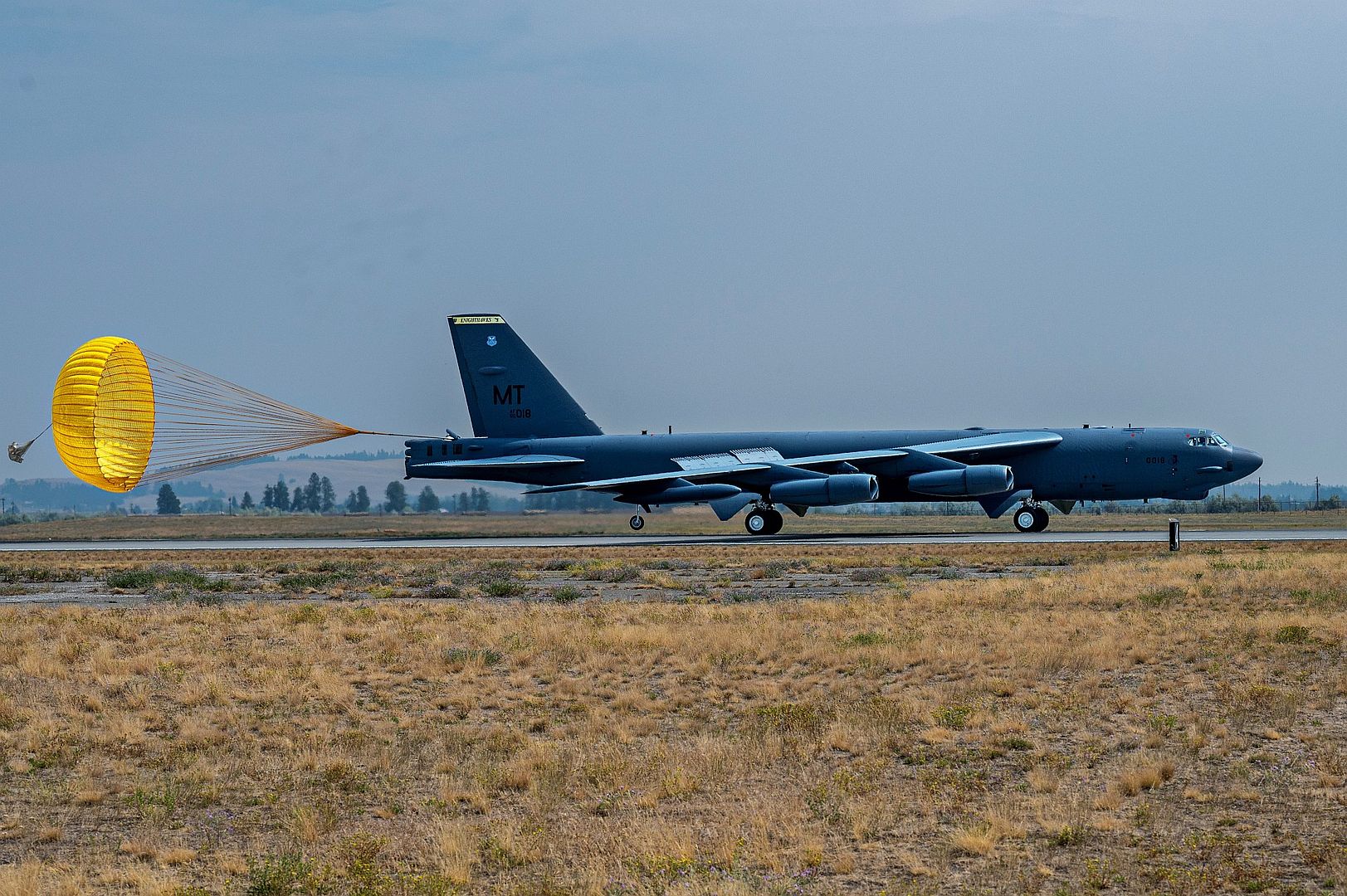
A U.S Air Force F-16 Fighting Falcon assigned to the 31st Fighter Wing soars through the sky at Bezmer Air Base, Bulgaria, July 22, 2024. Exercises, such as Thracian Viper 24, increase the ability of NATO partners to collaborate and operate in a joint, high-intensity environment to improve readiness, responsiveness, and interoperability. (U.S. Air Force photo by Airman 1st Class Synsere Howard)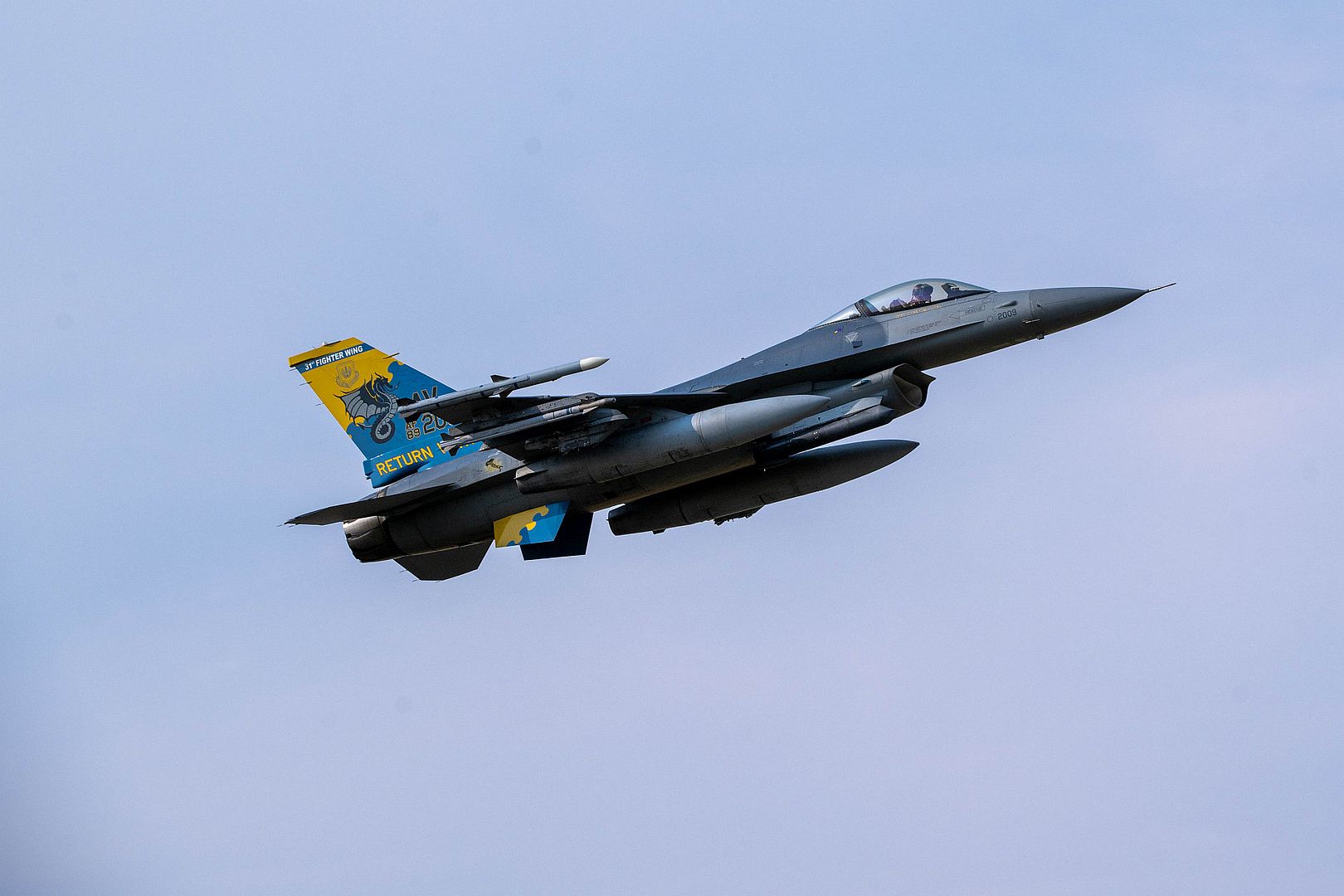
TINDAL, Australia – July 31, 2024 – Northrop Grumman Corporation (NYSE: NOC) joined the Royal Australian Air Force (RAAF) to welcome its first MQ-4C Triton uncrewed aircraft during a ceremony at RAAF Base Tindal, Northern Territory. The arrival of the high-altitude, long-endurance Triton enables Australia to deploy the most advanced maritime intelligence, surveillance, reconnaissance and targeting capability available today.
The first MQ-4C Triton arrived at RAAF Base Tindal on June 16 following a three-segment flight from Naval Air Station Patuxent River, Maryland.
Northrop Grumman personnel worked closely with their RAAF counterparts to prepare for the aircraft's arrival and support basing activities.
Australia's Triton program remains on track with three additional aircraft currently in production at Northrop Grumman's Palmdale, California, facility.
Christine Zeitz, chief executive and general manager, Australia & New Zealand, Northrop Grumman: “As one of the most advanced intelligence, surveillance, reconnaissance and targeting systems in the world, and a product of a cooperative development program between Australia and the United States, Triton is a proven multi-mission, multi-domain national security asset vital to the Australian Defence Force during this critical time.
Capt. Josh Guerre, U.S. Navy Triton program manager: “The delivery of Australia’s first MQ-4C represents a significant step in a collaboration between the U.S. and Australia to drive the future of multi domain intelligence collection. The U.S. Navy is thrilled to collaborate with Australia to deliver this game changing intelligence capability into the 7th Fleet area of responsibility.”
Program Details:
Built for the U.S. Navy and the RAAF, the multi-intelligence MQ-4C Triton supports a wide range of missions, including maritime patrol, signals intelligence and search and rescue. These aircraft deliver unmatched persistent surveillance for the prediction of an adversary’s behavior, enabling better planning and enhancing joint military responses. Key attributes include:
Higher operating altitude and longer endurance than medium-altitude systems
Ultra-long operational range of 7,400 nautical miles (8,515 miles)
Simultaneous multi-intelligence sensor operations delivering an exponential increase in mission information
Northrop Grumman successfully completed the first flight of Australia’s MQ-4C Triton uncrewed aircraft at its Palmdale facility in November 2023. The remaining three Australian Tritons currently under contract are progressing as planned through their production schedules. Once fully fielded, Triton will be operated by the Number 9 Squadron from two locations to perform surveillance over the Indo-Pacific region: RAAF Base Edinburgh in South Australia, and RAAF Base Tindal in the Northern Territory.
Northrop Grumman is establishing a dynamic support environment for the progressive delivery of the Triton systems into Australia, including establishing ground stations at RAAF Base Edinburgh and facilitating aircraft integration into RAAF Base Tindal. The company is building a highly qualified Australian workforce across both locations, leveraging extensive knowledge and experience gained from supporting U.S. Navy Triton operations.
Northrop Grumman is a leading global aerospace and defense technology company. Our pioneering solutions equip our customers with the capabilities they need to connect and protect the world, and push the boundaries of human exploration across the universe. Driven by a shared purpose to solve our customers’ toughest problems, our employees define possible every day.
PHILADELPHIA, August 1, 2024 —In June, U.S. Army Special Operations Aviation Command (USASOAC) awarded Boeing [NYSE: BA] a $115 million contract to produce two more MH-47G Block II Chinook aircraft and begin advanced procurement on future helicopters. Including the new order, the Army has contracted for a total of 46 MH-47G Block II aircraft.
“Whether it’s operating in the dead of night or in difficult terrain, the MH-47G Block II is a proven workhorse for special operations,” said Heather McBryan, Cargo Programs vice president and program manager for Boeing Defense, Space & Security. “It is our privilege to support ongoing USASOAC modernization efforts that will continue to have a real-world impact on U.S. national security.”
USASOAC’s Chinook modernization program supports more than 20,000 jobs and 360 suppliers in 40 states across the U.S. Chinook Block II production leverages and strengthens the manufacturing base that will provide support to the production line for new aircraft and fleet sustainment.
With a reinforced airframe, redesigned fuel tanks and state-of-the-art avionics, the MH-47G Block II heavy-lift helicopter improves USASOAC’S global reach capabilities. In addition, the Block II design enables future affordable modernization efforts, keeping the iconic heavy-lift helicopter flying for decades to come.
# # #
As a leading global aerospace company, Boeing develops, manufactures and services commercial airplanes, defense products and space systems for customers in more than 150 countries. As a top U.S. exporter, the company leverages the talents of a global supplier base to advance economic opportunity, sustainability and community impact. Boeing's diverse team is committed to innovating for the future, leading with sustainability, and cultivating a culture based on the company's core values of safety, quality and integrity. Join our team and find your purpose at boeing.com/careers.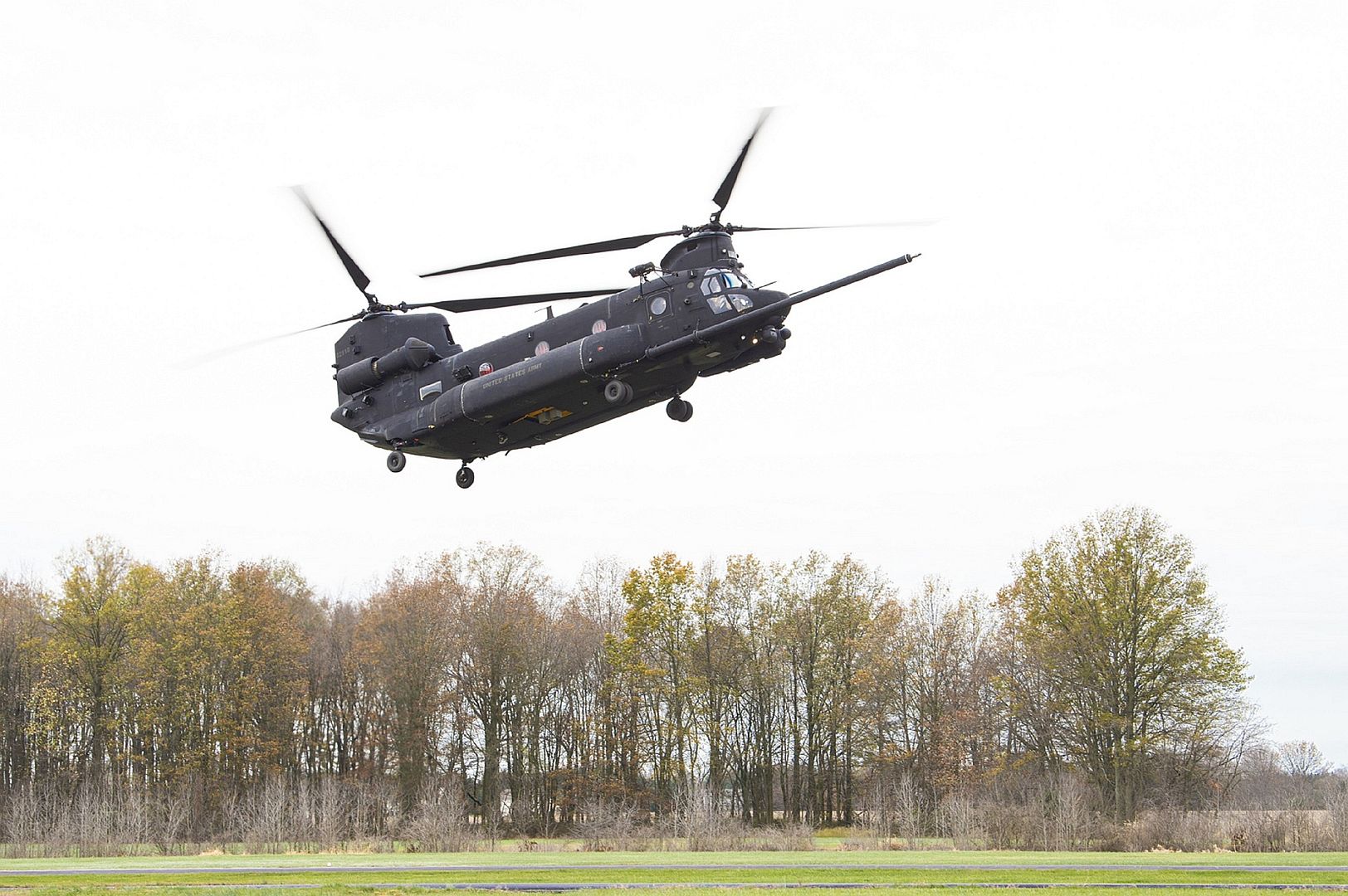
São José dos Campos, Brazil, August 1, 2024 – LOT Polish Airlines has taken delivery of its first Embraer (NYSE: ERJ; B3: EMBR3) E195-E2 less than three months after signing the deal. The first of three jets leased via Azorra, will arrive in Poland shortly. LOT is adding the E2 to their fleet to enhance operational flexibility and accommodate network expansion. Reaffirming LOT’s commitment to sustainability, the E195-E2 delivers 12.5% lower fuel burn and emissions, and is significantly quieter than its closest competitor aircraft. All three aircraft are expected to be delivered by October.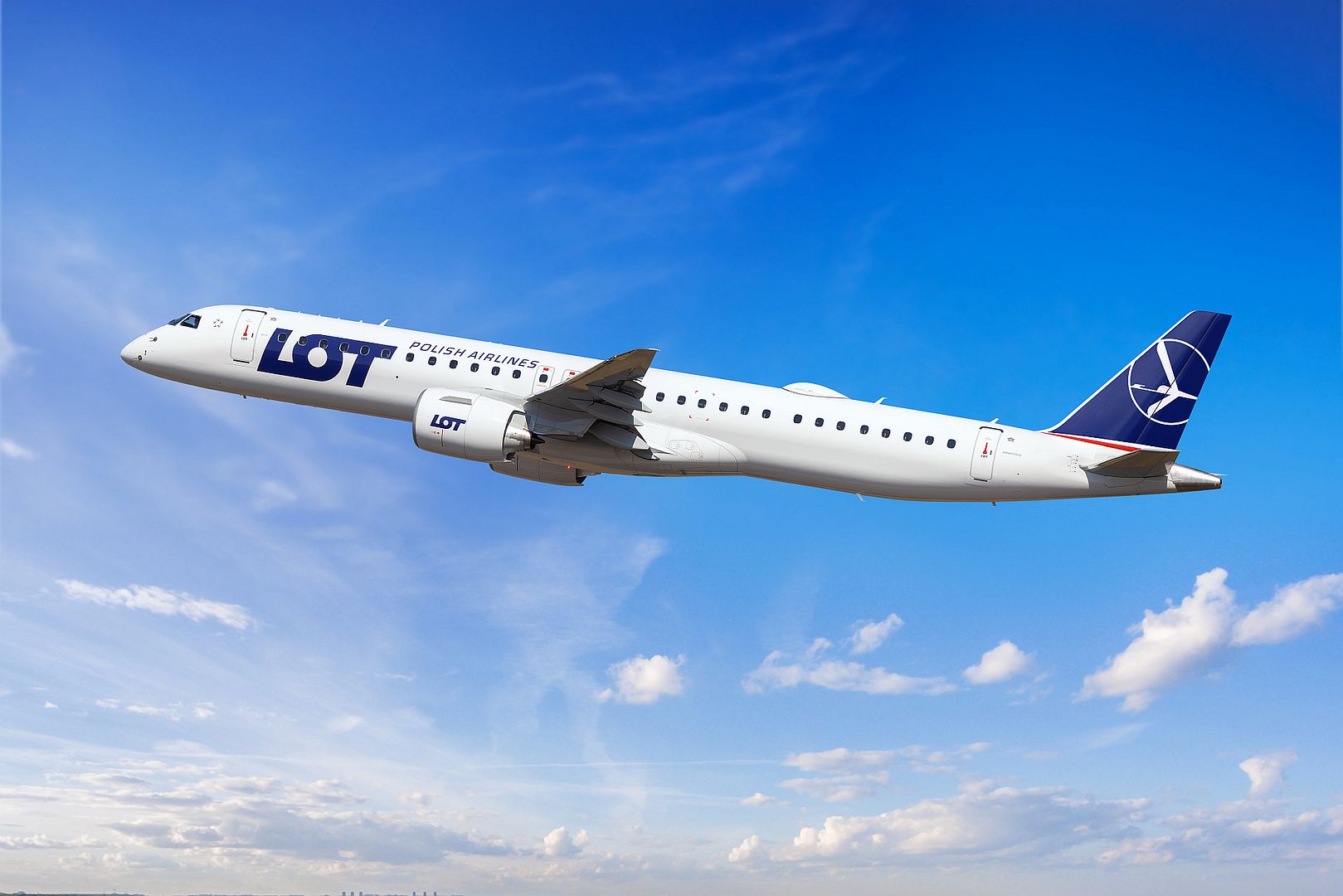
"Twenty years after the delivery of the first Embraer E-170, the LOT Polish Airlines fleet will be expanded by three Embraer E195-E2 aircraft. With these aircraft, we will increase the frequency of flights to selected European cities, offering passengers a high level of comfort in the latest generation fleet. The introduction of new, low-emission aircraft is also part of the implementation of our "Destination ECO" strategy. LOT Polish Airlines is today one of the largest Embraer operators in Europe, so we are happy to welcome further state-of-the-art aircraft, inviting our passengers to travel together," says Michał Fijoł, President of the Management Board of LOT Polish Airlines.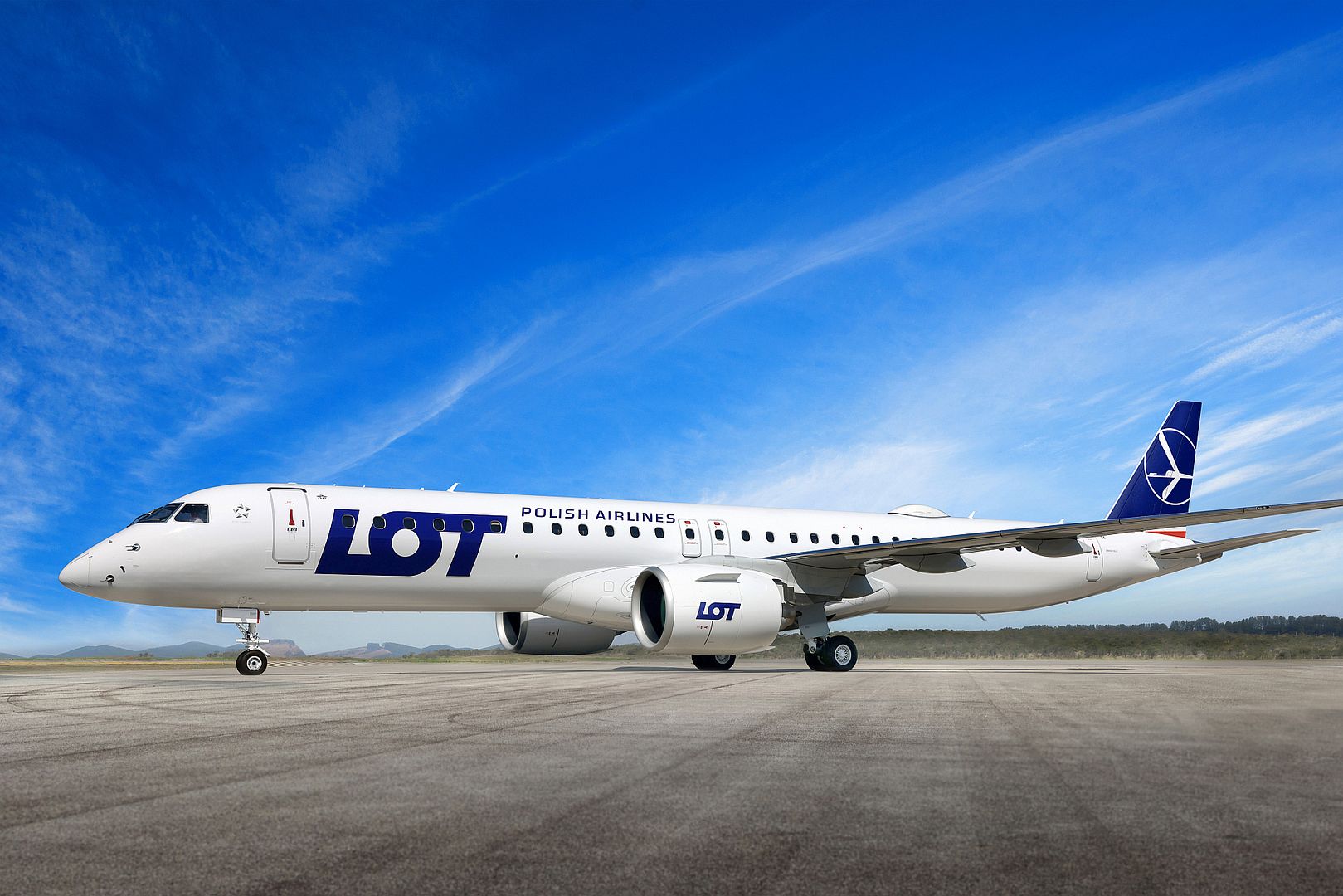
Arjan Meijer, President and CEO, Embraer Commercial Aviation, said, “We welcome our long term partner LOT as the 17th E2 operator 20 years after they inducted their first E170 as the global launch customer for the E-jets - in the last two years the number of E2 operators has almost doubled (88%). Along with our leasing colleagues at Azorra, we are proud to have been able to deliver these jets in double quick time to meet our customer’s needs. We look forward to our continued partnership with LOT, including the new opportunities for the E2 – the most fuel efficient, quietest, and least costly jet to operate in the small narrowbody segment.”
LOT was the first operator of the brand new E-Jets in 2004. The first revenue flight, on 17th March 2004, was completed by an E170 from Poland’s capital to Vienna. The 85-minute, 520km flight to Vienna marked the beginning of the extraordinary success of Embraer’s new aircraft family; the 1800th E-Jet in the program, an E195-E2, was delivered to a customer in May this year.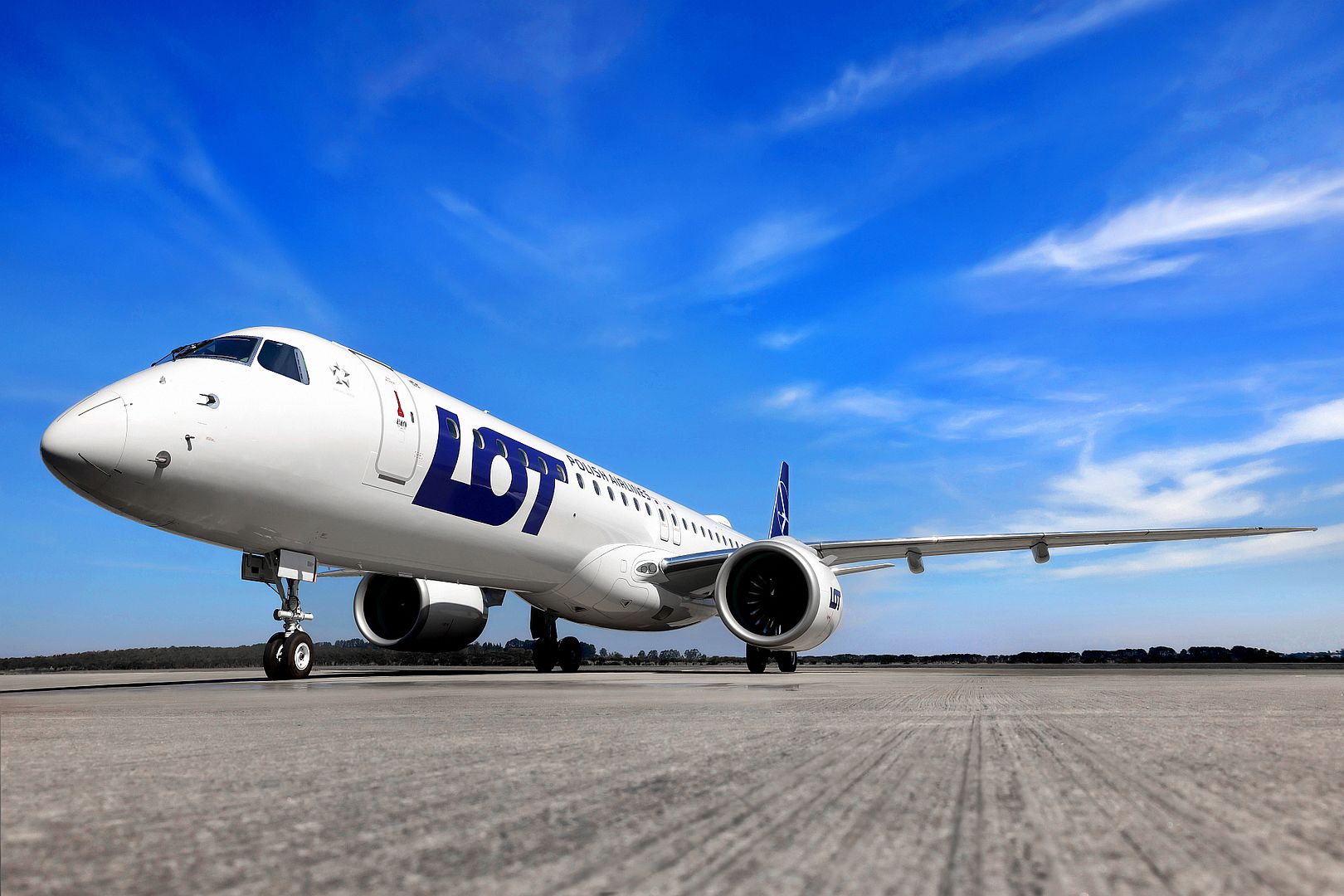
01/08/2024
QinetiQ Group plc announces today that it has been awarded the Aerial Training Services (ATS) Contract with the German Armed Forces Procurement Office for the German Armed Forces (Bundeswehr), Air Force, Army, Navy, and Special Forces.
The 10-year contract is worth €284 million with an option for an additional two-year extension. It represents the largest and longest contract award for QinetiQ’s Global Threat Representation business, providing long-term visibility and enabling future growth for our German operations.
For more than 30 years, aerial training and related services have been an essential part of the German Armed Forces’ operations. Under the ATS contract, QinetiQ will provide a comprehensive range of tailored services including Joint Terminal Attack Controller (JTAC ) training, Red Air training, close air support, maritime air operations, ground control intercept training, air traffic control training and target towing for ground based air defence systems. These mission-critical training services will be delivered by the newly enhanced QinetiQ fleet of eleven PC-9 and four PC-12 aircraft.
Steve Wadey, Group Chief Executive Officer of QinetiQ said:
"In the current heightened threat environment, the award of the Aerial Training Services contract demonstrates QinetiQ’s commitment to ensuring the German Armed Forces are always operationally ready for their missions. The contract will form a crucial part of our Global Threat Representation offering across all domains. We are very proud of our highly skilled employees who will deliver thousands of flight hours of training per year for our customer.”
-
 Main AdminA C-17 Globemaster III assigned to the 305th Air Mobility Wing sits on the flightline during Bamboo Eagle (BE) 24-3 at at Nellis Air Force Base, Nevada, Aug. 2, 2024. Through the use of designated air space, BE 24-3 provides Airmen, allies and partners a flexible, combat-representative, multidimensional battle space to conduct testing, tactics development, and advanced training in support of U.S. national interests. (U.S. Air Force photo by Airman 1st Class Brianna Vetro)
Main AdminA C-17 Globemaster III assigned to the 305th Air Mobility Wing sits on the flightline during Bamboo Eagle (BE) 24-3 at at Nellis Air Force Base, Nevada, Aug. 2, 2024. Through the use of designated air space, BE 24-3 provides Airmen, allies and partners a flexible, combat-representative, multidimensional battle space to conduct testing, tactics development, and advanced training in support of U.S. national interests. (U.S. Air Force photo by Airman 1st Class Brianna Vetro)_24-3_at_at_Nellis_Air_Force_Base_Nevada_Aug._2_2024..jpg?width=1920&height=1080&fit=bounds)
Two F-16C's assigned to the 177th Fighter Wing fly alongside a Niagara KC-135R Stratotanker assigned to the 914th Air Refueling Wing, awaiting refuel somewhere over the Northeastern United States, August 1, 2024. Air Refueling is a vital component to combat and defensive operations worldwide, allowing multirole aircraft to conduct operations without having to land to refuel, saving time, extending the aircrafts range, and taking the fighting power wherever it may be needed. (U.S. Air Force Photo by Senior Airman Kylar Vermeulen)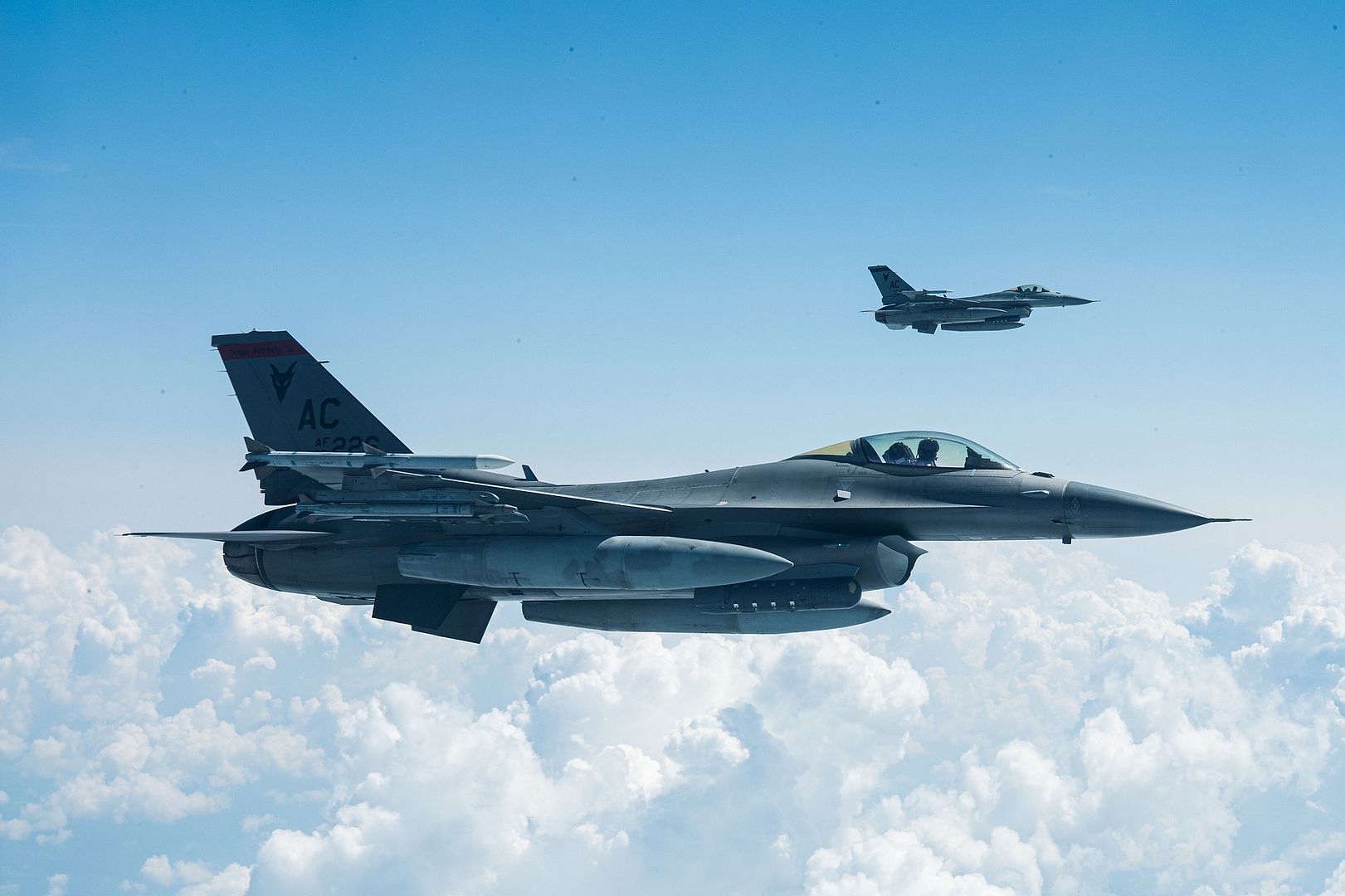
A U.S. Air Force B-1B Lancer assigned to the 37th Bomb Squadron takes off during Red Flag 24-3 at Nellis Air Force Base, Nev., July 31, 2024. Red Flag is organized at Nellis AFB, and hosted on the Nevada Test and Training Range - the U.S. Air Force's premier military training area with more than 12,000 square miles of airspace and 2.9 million acres of land. (U.S. Air Force photo by Senior Airman Yendi Borjas)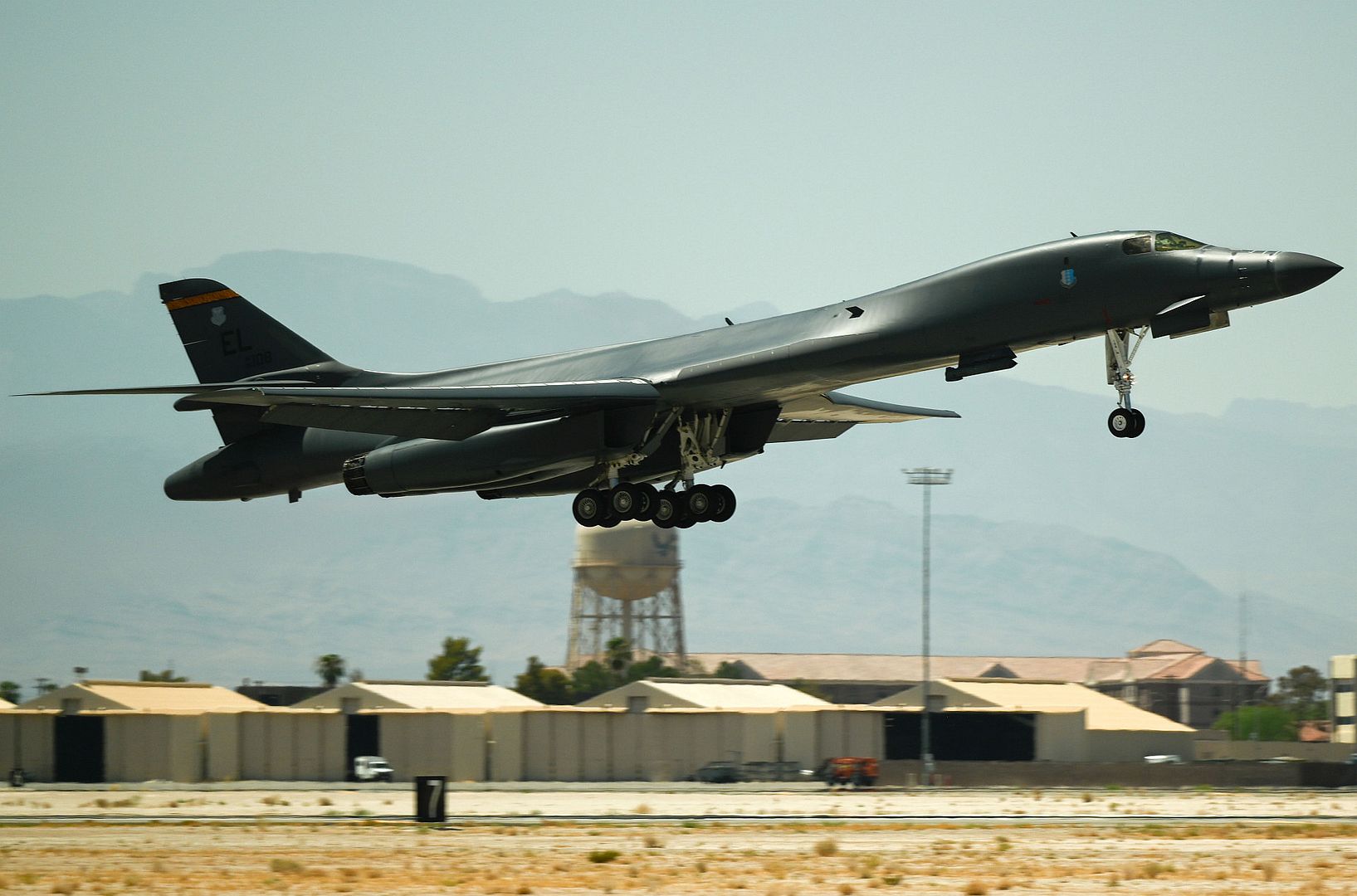
A California Army National Guard UH-60 Blackhawk helicopter awaits activation by CAL FIRE to assist in water bucket operations against wildfires from Sacramento Mather Airport, California, July 31, 2024. This aircraft can transport up to 2,650 gallons of water or fire retardant in a Bambi Bucket to designated fire locations in support of CAL FIRE ground and air attack to the numerous fires currently burning across the state. (U.S. Army National Guard photo by Amanda H. Johnson)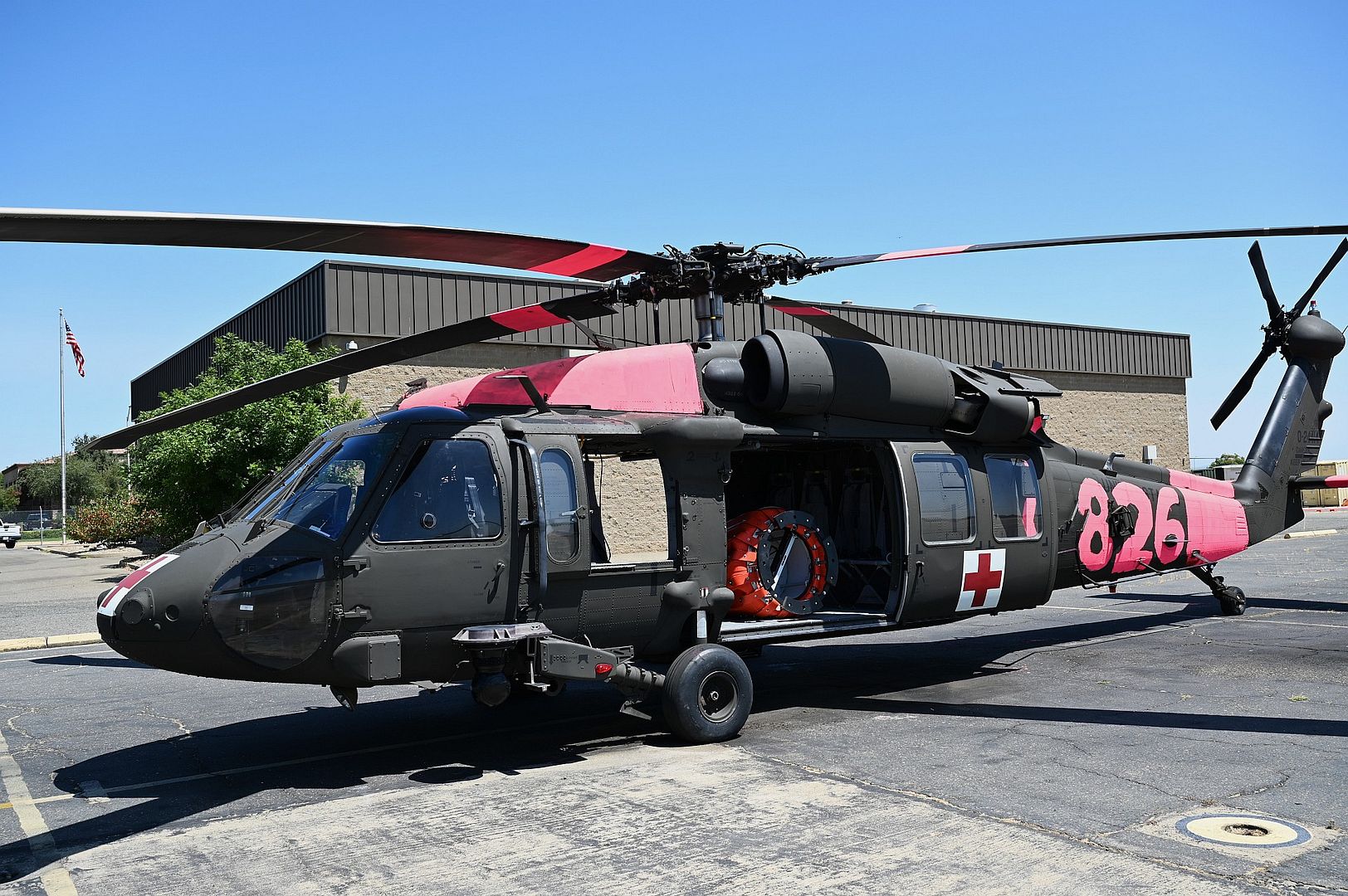
A U.S. Air Force B-1B Lancer assigned to the 37th Bomb Squadron prepares for takeoff during Red Flag 24-3 at Nellis Air Force Base, Nev., July 30, 2024. Red Flag builds partnerships and interoperability among the United States’ allies and partners and across domains that are vital to advancing American interests and security. (U.S. Air Force photo by Airman 1st Class Brittany Kenney)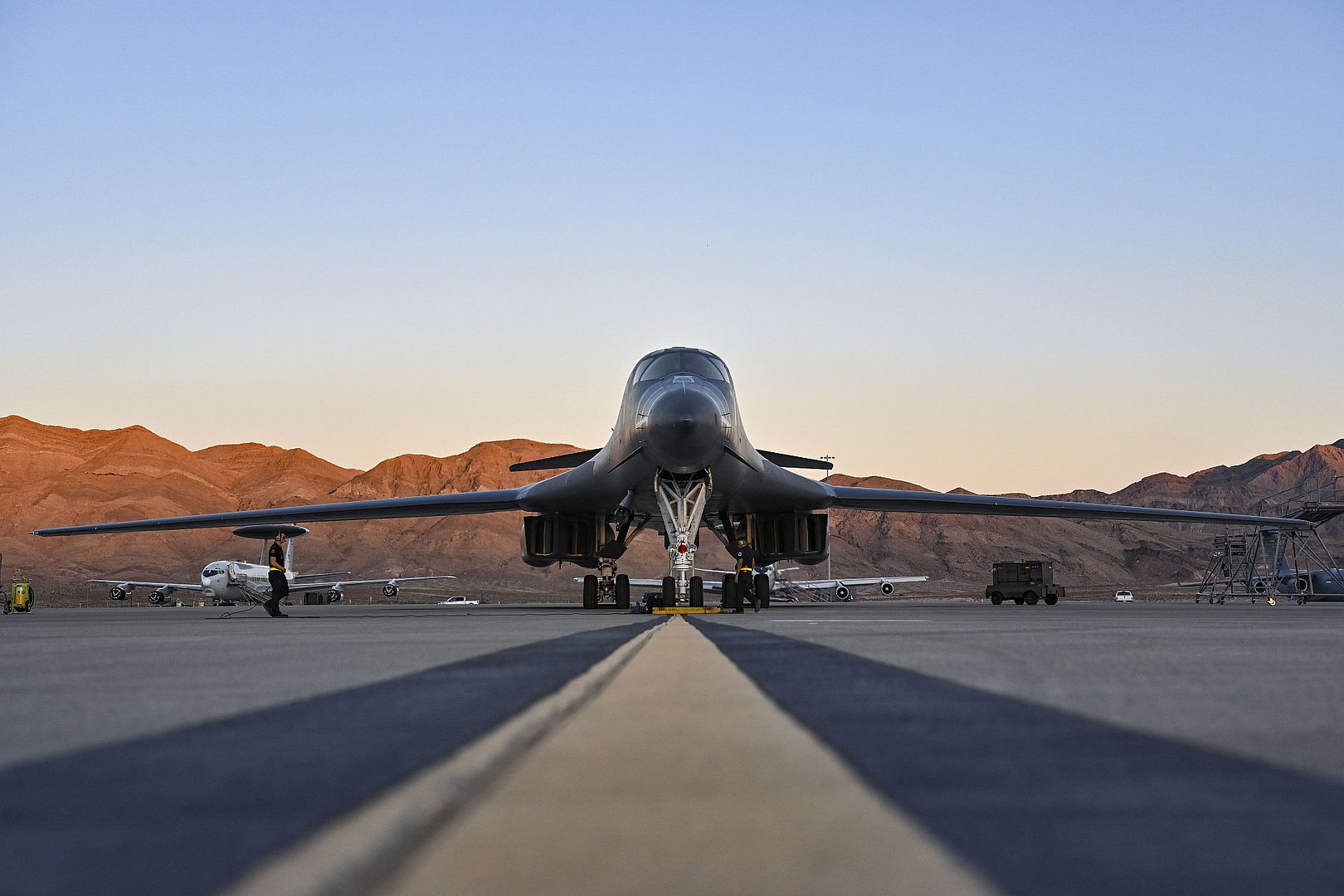
The United States Air Force Air Demonstration Squadron "Thunderbirds" refuel while traveling from Joint Base Elmendorf-Richardson, Alaska, to Cheyenne, Wyoming, on July 22, 2024. The Thunderbirds were refueled by a KC-135 Stratotanker based out of Fairchild Air Force Base, Washington. (U.S. Air Force photo by Staff Sgt. Dakota Carter)
-
 Main AdminA U.S. Army AH-64 Apache attached to 3rd Battalion, 25th Aviation Regiment, 25th Combat Aviation Brigade, 25th Infantry Division, hovers above the flight deck aboard the amphibious transport dock USS Somerset (LPD 25) during joint deck landing qualifications off the coast of Hawaii Aug. 2, 2024. Elements of the 15th Marine Expeditionary Unit are currently embarked aboard the Boxer Amphibious Ready Group conducting routine operations in U.S. 3rd Fleet. (U.S. Marine Corps photo by Sgt. Patrick Katz)
Main AdminA U.S. Army AH-64 Apache attached to 3rd Battalion, 25th Aviation Regiment, 25th Combat Aviation Brigade, 25th Infantry Division, hovers above the flight deck aboard the amphibious transport dock USS Somerset (LPD 25) during joint deck landing qualifications off the coast of Hawaii Aug. 2, 2024. Elements of the 15th Marine Expeditionary Unit are currently embarked aboard the Boxer Amphibious Ready Group conducting routine operations in U.S. 3rd Fleet. (U.S. Marine Corps photo by Sgt. Patrick Katz)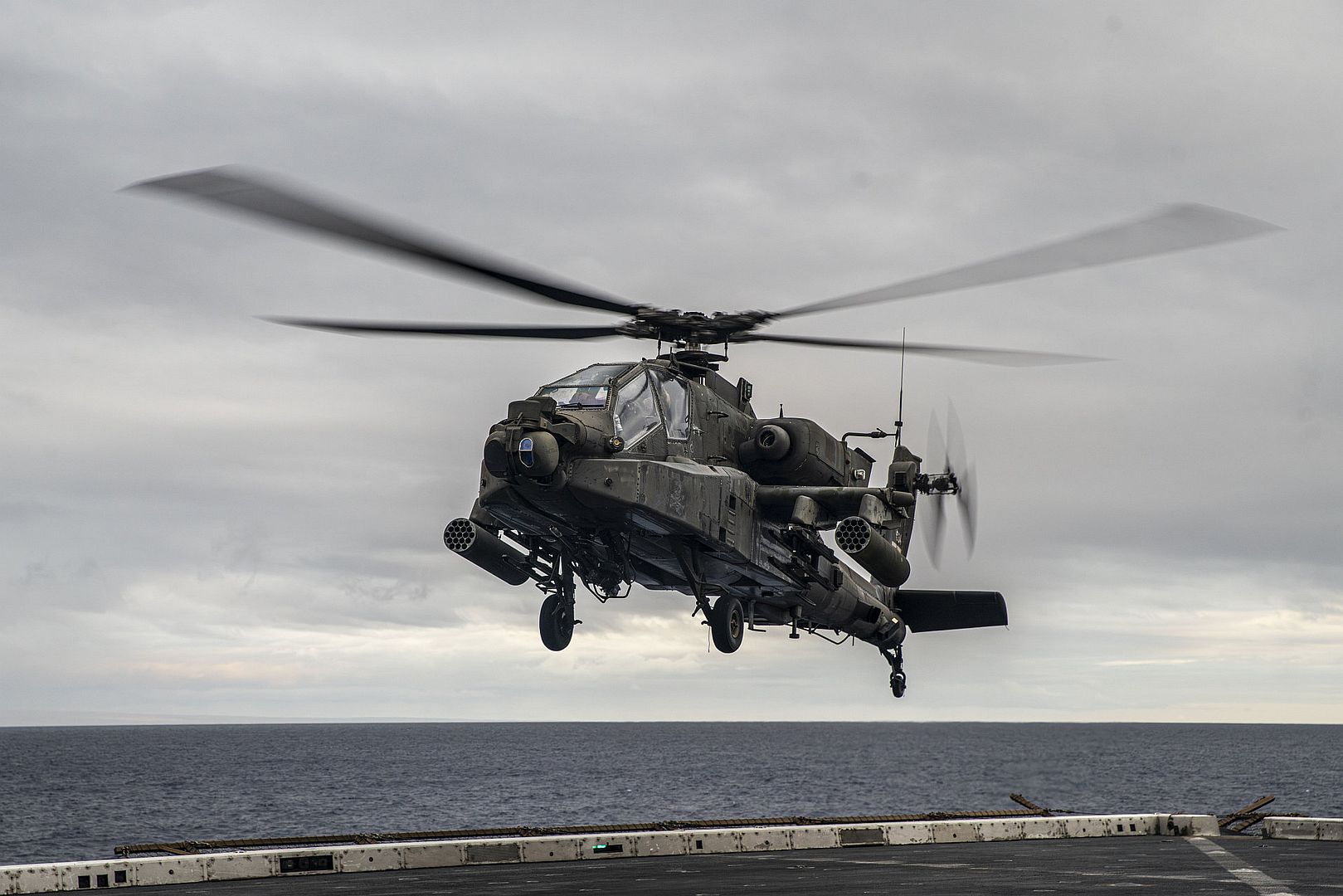
A U.S. Marine Corps AH-1Z Cobra helicopter with Marine Medium Tiltrotor Squadron 262 (Rein.), 31st Marine Expeditionary Unit, takes off from the amphibious transport dock ship USS Green Bay (LPD 20), during a close air support exercise off the coast of Okinawa, Japan, Aug. 3, 2024. The exercise was conducted to simulate providing security and supporting fires to forces on the ground. The 31st MEU is operating aboard ships of USS America Amphibious Ready Group in the 7th fleet area of operations to enhance interoperability with allies and partners and serve as a ready response force to defend peace and stability in the Indo-Pacific region. (U.S. Marine Corps photo by Cpl. Osmar Gutierrez)_31st_Marine_Expeditionary_Unit_takes_off_from_the_amphibious_transport_dock_ship_USS_Green_Bay.jpg?width=1920&height=1080&fit=bounds)
A Michigan Wing Civil Air Patrol Cessna 172 Skylane parks on the ramp at the Alpena Combat Readiness Training Center, Michigan during Northern Strike 24-2, Aug. 4, 2024. The Civil Air Patrol is the official auxiliary of the U.S. Air Force, which assists with emergency services and disaster relief missions nationwide. (U.S. Air National Guard photo by Tech. Sgt. Tristan D. Viglianco)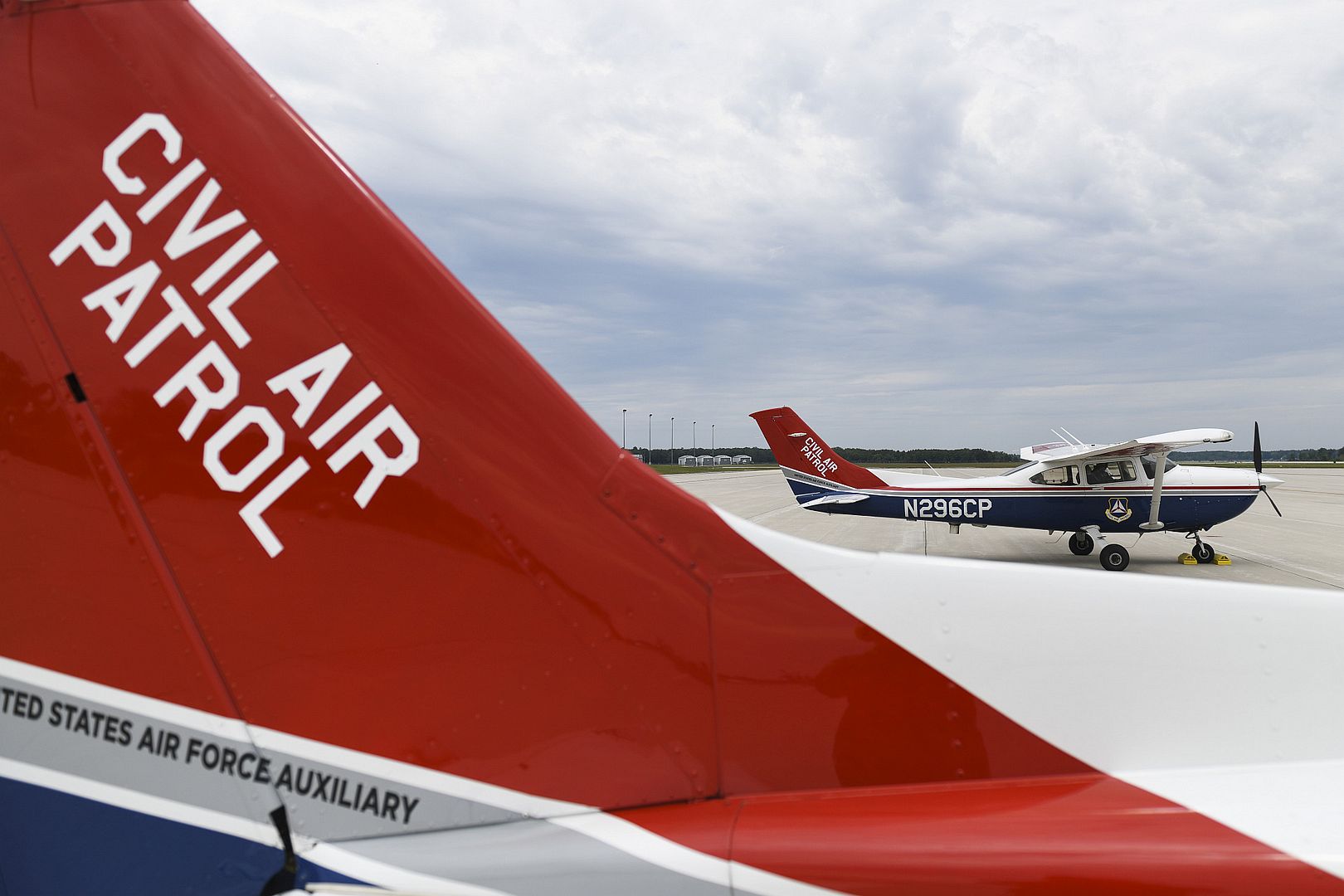
U.S. 5TH FLEET AREA OF OPERATIONS (Aug. 2, 2024) A MH-53E Sea Dragon helicopter, assigned to Helicopter Mine Countermeasures Squadron 15, lands on the flight deck of the Nimitz-class aircraft carrier USS Theodore Roosevelt (CVN 71), Aug. 2. Theodore Roosevelt is deployed to the U.S. 5th Fleet area of operations to support maritime security and stability in the U.S. Central Command area of responsibility. (Official U.S. Navy photo)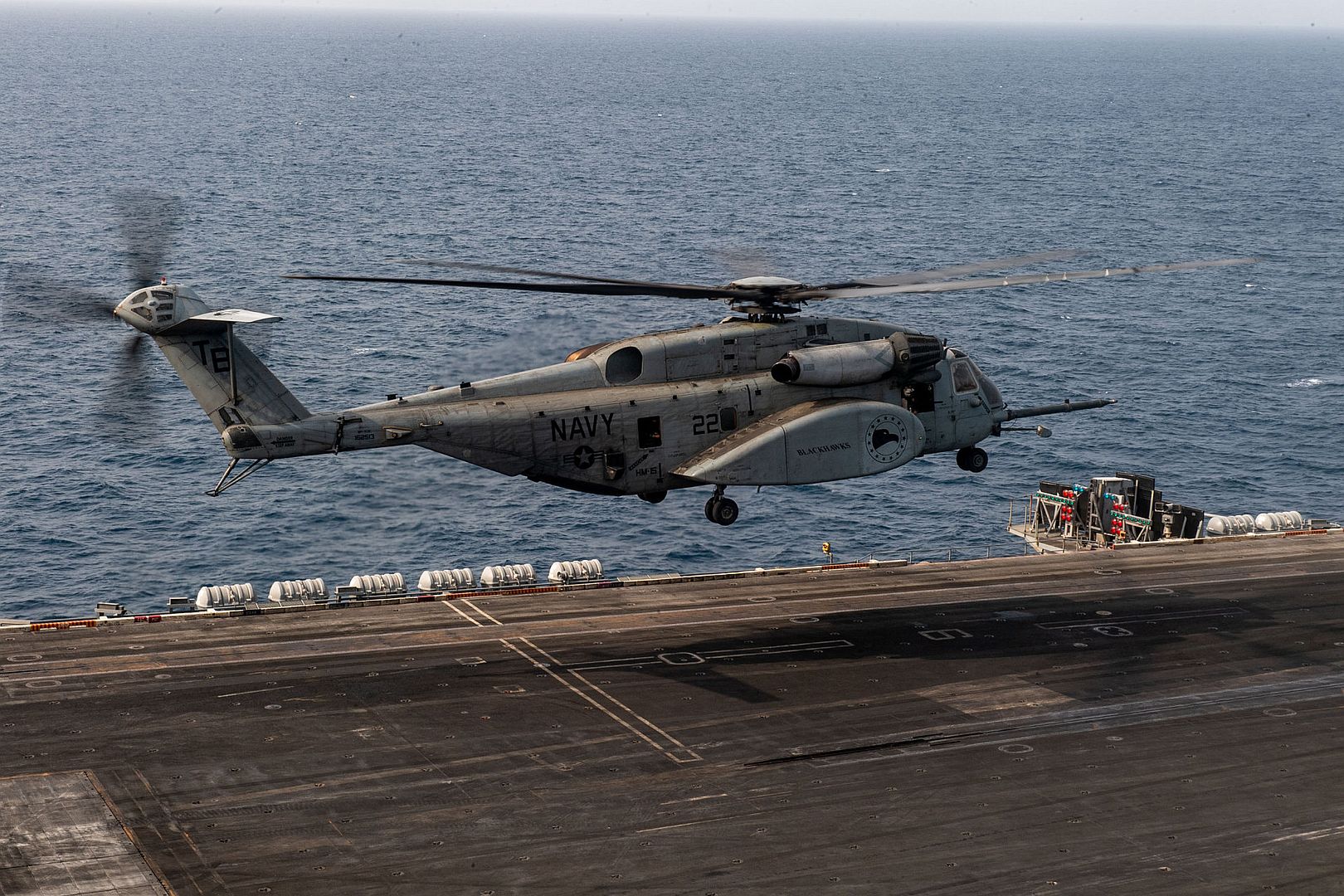
A 189th Airlift Wing C-130H cargo plane prepares to take off on Arkansas Highway 63 as part of a humanitarian training mission in conjunction with the multinational exercise Operation Emerald Warrior at Bono, Arkansas, August 4, 2024. Eight pilots participated in the training exercise to hone their skills for landing on a non-traditional runway. (U.S. Air National Guard photo by Airman 1st Class Samuel Zang)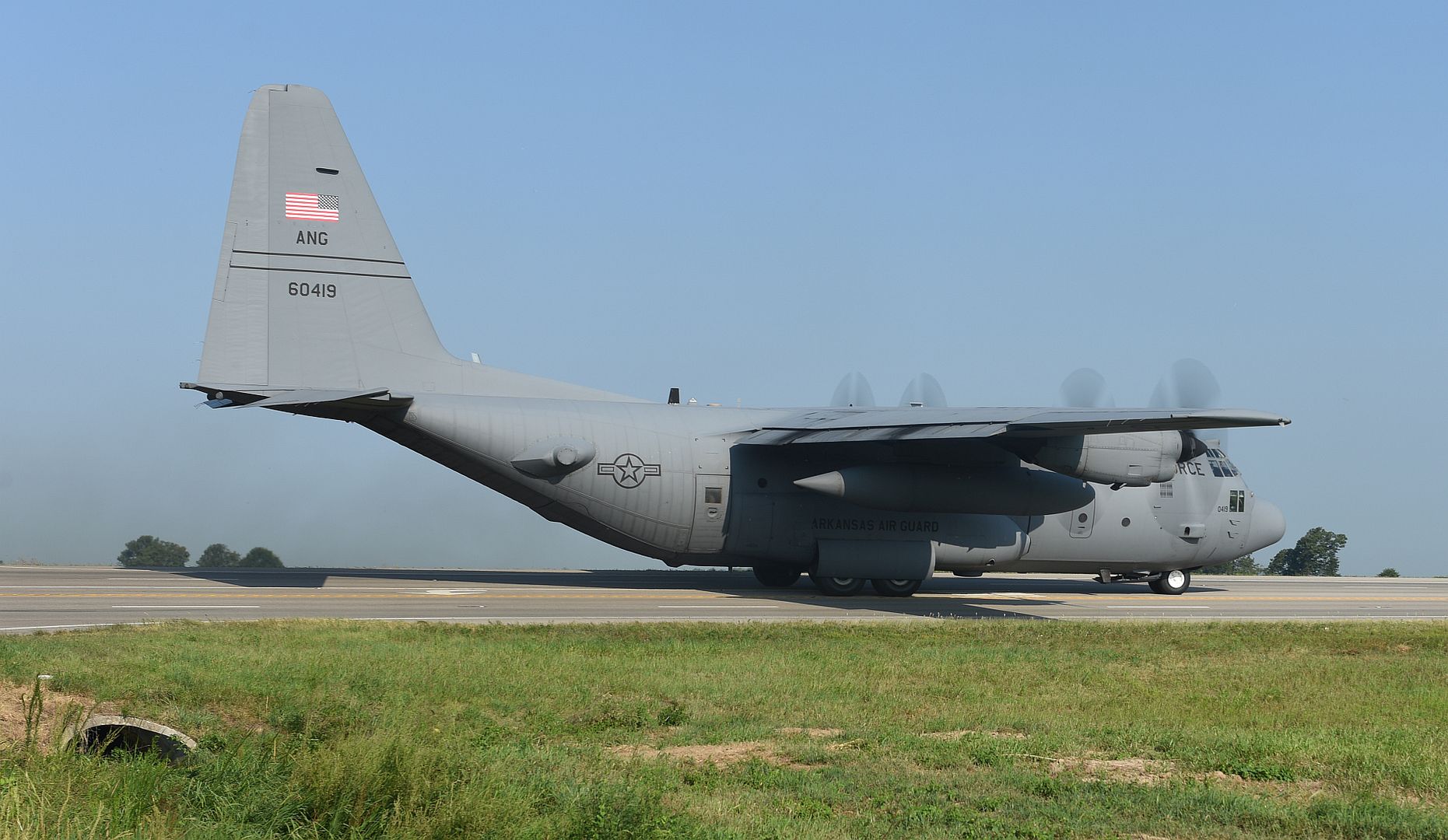
A U.S. Air Force C-146A Wolfhound, assigned to the 492d Special Operations Wing, lands on Highway 63 during Emerald Warrior 24 FTX II in Bono, Arkansas, August 4, 2024. The “Wolfhound’s” primary mission is to provide flexible and responsive operational movement of small teams and cargo in support of theater special operations commands. (U.S. Air Force photo by Senior Airman Ty Pilgrim)
U.S. Air Force A-10C Thunderbolt II assigned to the 25th Fighter Squadron conducts maneuvers over Rodriguez Live Fire Complex, South Korea, Aug. 2, 2024. (U.S. Army photo by Cpl. David Poleski)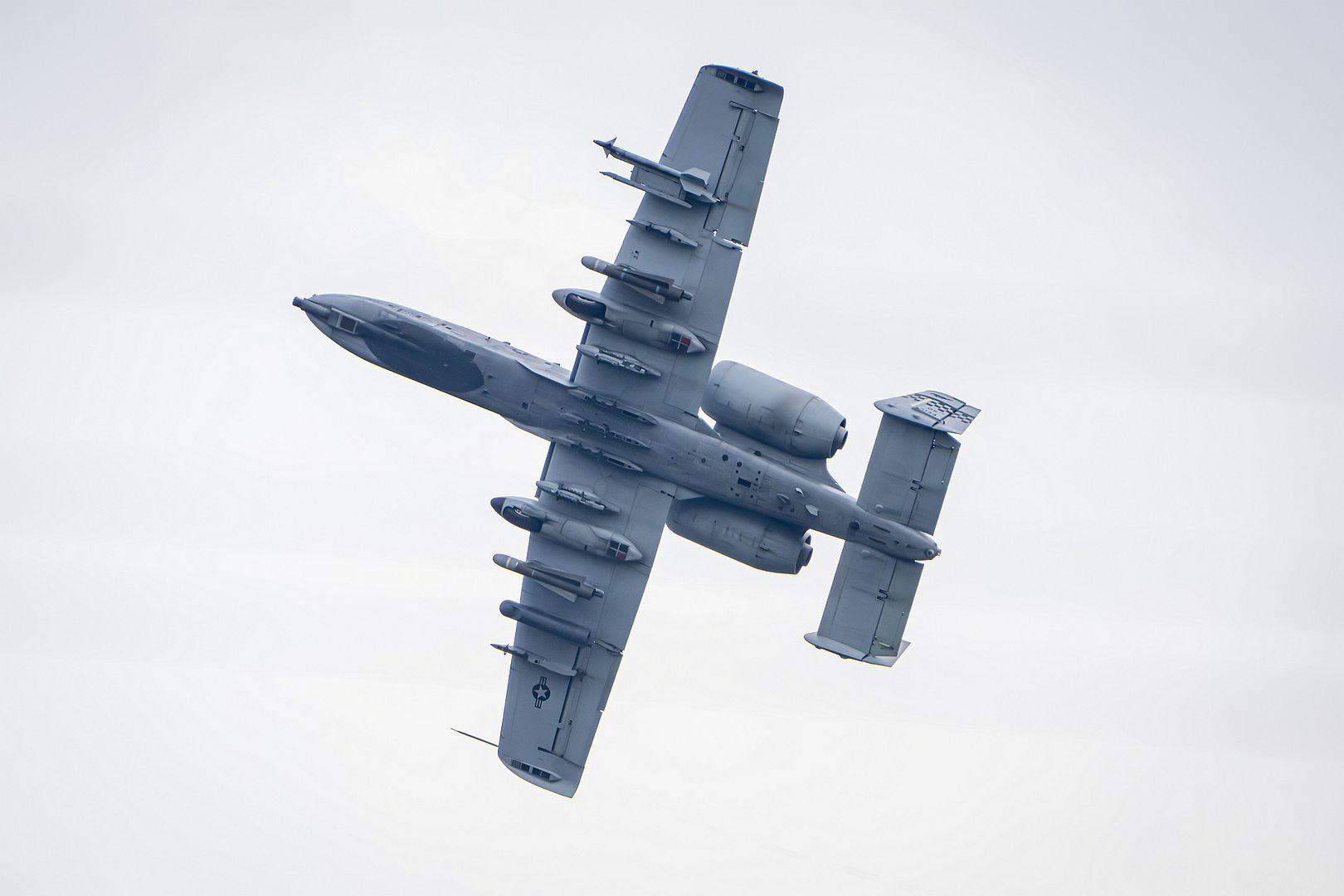
EDWARDS AIR FORCE BASE, Calif. --
The 412th Test Wing recently tested a new weapons pylon that could remove traditional weapon constraints. Known as the Load Adaptable Modular Pylon, the equipment recently flew attached to a B-1B test aircraft with the 419th Flight Test Squadron.
Designed by The Boeing Company and referred to as the LAM, the unique pylon is designed to carry a variety of standard and emerging weapons with seamless transition, allowing for maximum agility while also strengthening weapon test infrastructure. While the B-1B was chosen due to aircraft availability at Edwards, the LAM can be modified for attachment to a variety of other aircraft if the need were to arise.
The LAM testing is one of several ways teams at Edwards are working with private industry to provide an innovative increase in test infrastructure. The overall test portfolio continues to rapidly increase during an era of Global Power Competition. The project also gives test professionals valuable experience in applying engineering and analysis objectives that could be applied to future programs.
(Photo by Richard Gonzales)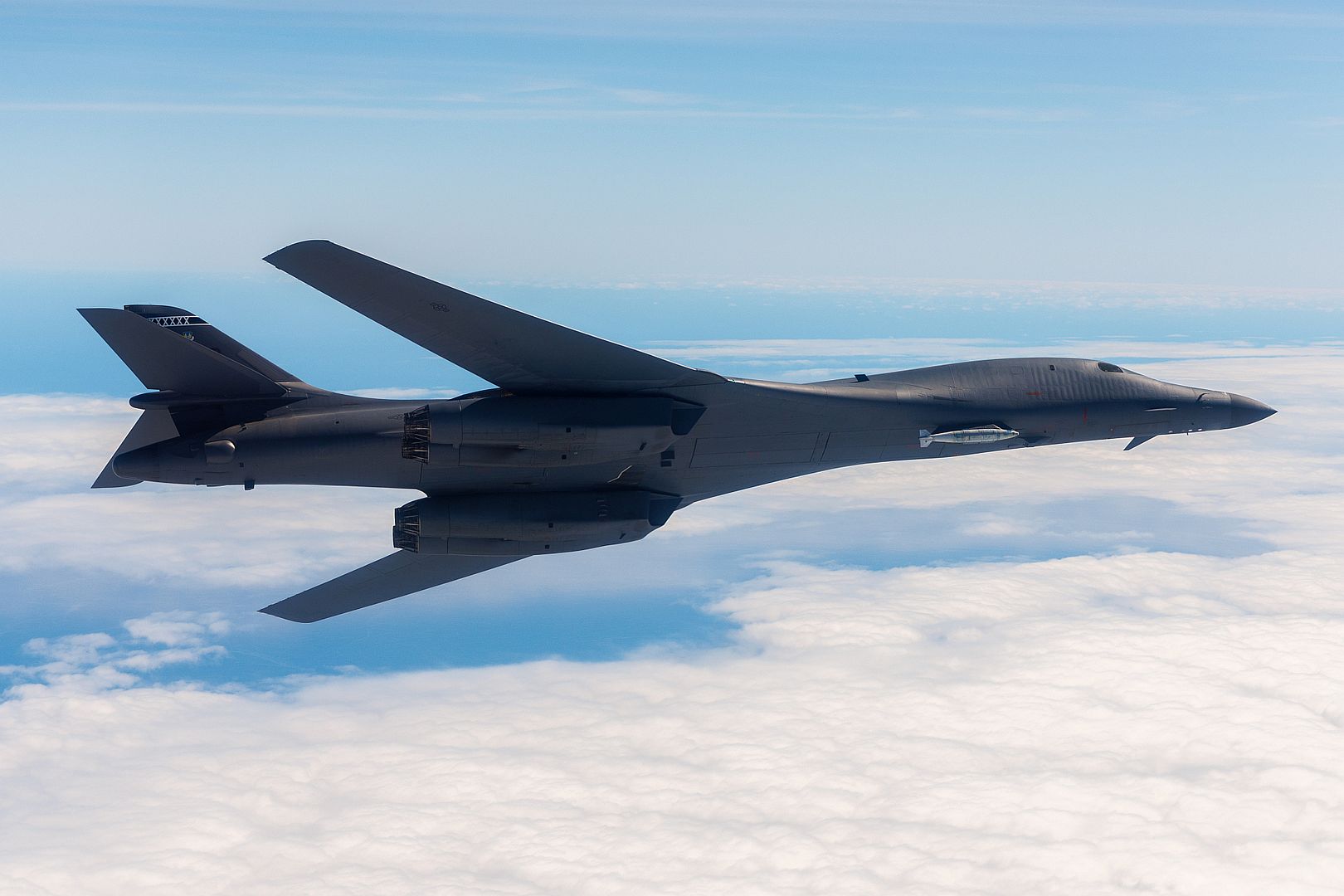
PHILADELPHIA, August 5, 2024 —Boeing [NYSE: BA] has delivered the first MH-139A Grey Wolf production aircraft to the U.S. Air Force. This aircraft, part of a Low Rate Initial Production order in 2023 for 13 helicopters, will be stationed at Malmstrom Air Force Base, Montana.
“This aircraft will directly support ongoing U.S. Air Force modernization efforts,” said Azeem Khan, MH-139 executive director and program manager. “Delivering this asset for the MH-139A fleet is critical to the future of national security as the Grey Wolf will play a crucial role in the U.S. nuclear triad for decades to come.”
In 2024, the U.S. Air Force awarded an additional seven MH-139As to Boeing. With six Research, Development, Test and Evaluation aircraft already delivered, Boeing currently has 26 aircraft on contract.
With a 50% increase in speed and range and a 5,000 pound-lb. increase in max gross weight compared it is predecessor, the MH-139A can execute multiple mission sets. Combined with lower operating costs, increased reliability and improved maintainability, the aircraft provides improved capability and greater flexibility for the U.S. Air Force.
The MH-139A team consists of Boeing as the prime contractor and Leonardo as an original equipment manufacturer. Leonardo produces the baseline helicopter at its plant in northeast Philadelphia, while Boeing is responsible for military equipment procurement and installation and post-delivery support of the aircraft.
# # #
As a leading global aerospace company, Boeing develops, manufactures and services commercial airplanes, defense products and space systems for customers in more than 150 countries. As a top U.S. exporter, the company leverages the talents of a global supplier base to advance economic opportunity, sustainability and community impact. Boeing's diverse team is committed to innovating for the future, leading with sustainability, and cultivating a culture based on the company's core values of safety, quality and integrity. Join our team and find your purpose at boeing.com/careers
São Paulo, Brazil – August 2, 2024 – Embraer returns to the Latin American Business Aviation Conference & Exhibition (LABACE) 2024 from August 6 to 8 in São Paulo. The company will showcase the newly announced entry-level Phenom 100EX alongside the Phenom 300E, the world’s best-selling light jet for 12 consecutive years, and the Praetor 600, the most disruptive and technologically advanced super-midsize jet..jpg?width=1920&height=1080&fit=bounds)
The Phenom 100 and Phenom 300 series have a significant presence in Brazil, with 115 Phenom 100s and over 80 Phenom 300s currently in operation throughout the country.
Heading into the tradeshow, Embraer continues its momentum with strong demand for its executive jets portfolio resulting in a historic backlog selling into 2026. In addition to strong sales and continued growth, the company continues ramping up sustainability efforts in order to achieve the company’s goal of zero emissions by 2040, as well as the industry’s goal of Net Zero aviation by 2050.
More information on each aircraft can be found below, in addition to images to be used for press purposes. For more information, please reach out to Lauren Merlino, Corporate Communications at Embraer, at @.
About the Phenom 100EX
The Phenom 100EX is an entry-level jet that represents the epitome of comfort, operational versatility and single-pilot-friendly technology. The aircraft features impressive ramp appeal with the most complete airstair in its class, largest entrance door, and the roomiest and most accessible baggage compartment. Onboard, craftsmanship meets innovation in a cabin space where comfort is paramount with the tallest and widest cross section in its class combined with abundant natural light through extra-large windows. The best-in-class, high-tech interior features ergonomic seating, upper tech panels, luxurious Embraer Design DNA interiors, baseline side-facing fifth seat and belted lavatory, and flush-to-the-wall tables..jpg?width=1920&height=1080&fit=bounds)
The cockpit is equally considerate with further pilot legroom provided by extended seat tracking, an open-concept cockpit for easier communication with the cabin, and enhanced safety as the first in its class to offer Runway Overrun Awareness and Alerting System (ROAAS). Additional avionics improvements, as part of the Prodigy Touch, based on the Garmin 3000, include FlightStream 510, stabilized approach, predictive windshear, automatic 3D volumetric scanning with lightning and hail prediction, and more..jpg?width=1920&height=1080&fit=bounds)
The aircraft is capable of flying at 41,000 feet (12,497 meters) and is powered by two Pratt & Whitney Canada PW617F1-E engines with 1,730 pounds of thrust each. In addition to a high-speed cruise of 406 knots and a four-occupant range of 1,178 nautical miles (2,182 km) with NBAA IFR reserves, the entry-level jet is capable of speeds up to Mach 0.70. Benefiting from the family’s reputation for high utilization and low maintenance costs, the entry-level jet is also one of the greenest dual-engine jets on the market, culminating in a versatile aircraft built to offer the highest level of operational flexibility..jpg?width=1920&height=1080&fit=bounds)
Fort Worth, TX (August 5, 2024) – Bell Textron Inc., a Textron Inc. (NYSE:TXT) company, announced today the United States Army has approved the Milestone B decision for the Future Long Range Assault Aircraft (FLRAA), marking the beginning of the weapon system’s Program of Record (PoR).
"This achievement marks a historic moment for both the U.S. Army and Bell,” said Ryan Ehinger, Bell’s Senior Vice President and Program Director, FLRAA program. “Now that the program has Milestone B approval, the course is set for delivering transformational capability to the warfighter. The FLRAA team remains laser-focused on working in tandem with the U.S. Army to execute the next phase of Engineering and Manufacturing Development (EMD).”
The Milestone B decision is a part of the Major Capability Acquisition process and comes after years of the Bell team working alongside the U.S. Army and Bell’s FLRAA teammates to decompose requirements, reduce risk and inform the weapon system acquisition. This includes the execution of the Preliminary Design Review (PDR) ensuring integration and effectiveness of the aircraft’s design including weapon system design, sustainment and system integrations that are integral to the U.S. Army’s special mission requirements.
“This significant milestone is made possible by the years of hard work and sacrifice by Team FLRAA and our teammates throughout the Army and the Department of Defense,” said COL Jeffrey Poquette, FLRAA Project Manager. “We are poised to deliver a truly transformational aircraft for the Army. The hard work continues into the Engineering and Manufacturing Development Phase where we will design, build and test FLRAA prototypes. It is certainly an exciting time for the program.”
Following the U.S. Army’s FLRAA contract award in December 2022, Bell established several new state-of-the-art facilities and established several new innovative manufacturing processes to drive cost, schedule and performance to support the program’s execution. As Bell and the FLRAA team enter into the EMD phase, Bell’s focus will be on continued design maturation and prototyping.
The U.S. Army’s new long-range assault aircraft will fly twice as far and twice as fast as the current fleet. By utilizing mature tiltrotor technology coupled with an innovative digital engineering approach and an open architecture, it will be the most reliable, affordable and high-performing long-range assault aircraft in the world..jpg?width=1920&height=1080&fit=bounds)
For the first time, French aviators made a stopover in the Philippines during the Pégas 24 mission.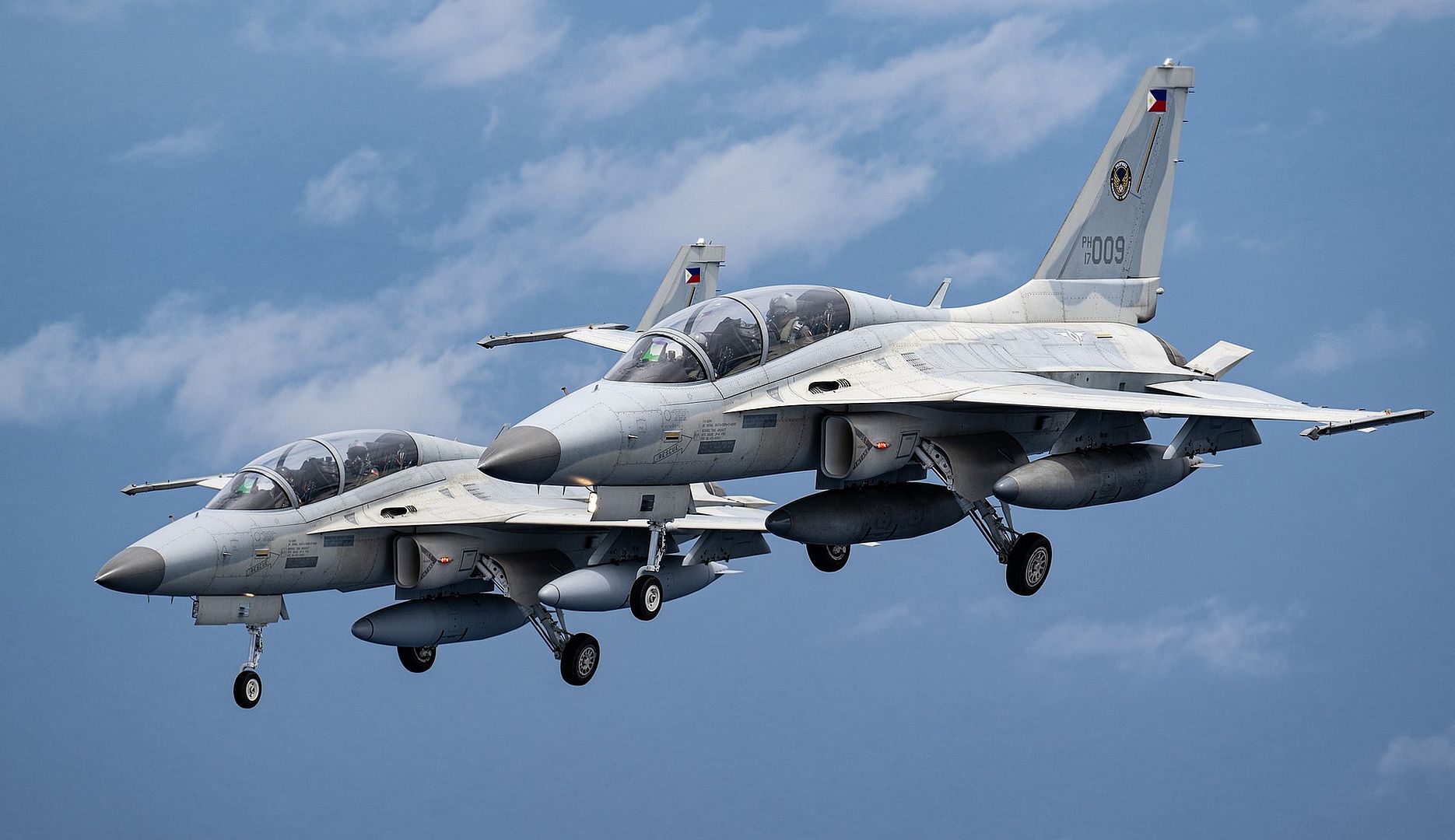
After a valued layover in Indonesia, our Aviators landed at Clark Air Base on July 27 for a four-day layover. A joint flight with two FA-50s, two Rafale and an A330 Phoenix MRTT marked the event. Filipino pilots also had the opportunity to fly aboard the French Rafale, A400M and A330 MRTT.
(Photos courtesy of the Armée de l'Air et de l'Espace)

-
1 year agoTue Aug 06 2024, 07:57pmDuggy
 Main AdminMaintainers from the 34th Fighter Generation Squadron recieve U.S. Air Force F-35A Lightning IIs after they land at Santa Maria Airport in Santa Maria, Calif., during Exercise Bamboo Eagle 24-3, Aug. 3, 2024. The 388th Fighter Wing deployed hundreds of pilots, maintainers, and support personnel for two back-to-back large force exercises. (U.S. Air Force photo by Micah Garbarino)
Main AdminMaintainers from the 34th Fighter Generation Squadron recieve U.S. Air Force F-35A Lightning IIs after they land at Santa Maria Airport in Santa Maria, Calif., during Exercise Bamboo Eagle 24-3, Aug. 3, 2024. The 388th Fighter Wing deployed hundreds of pilots, maintainers, and support personnel for two back-to-back large force exercises. (U.S. Air Force photo by Micah Garbarino)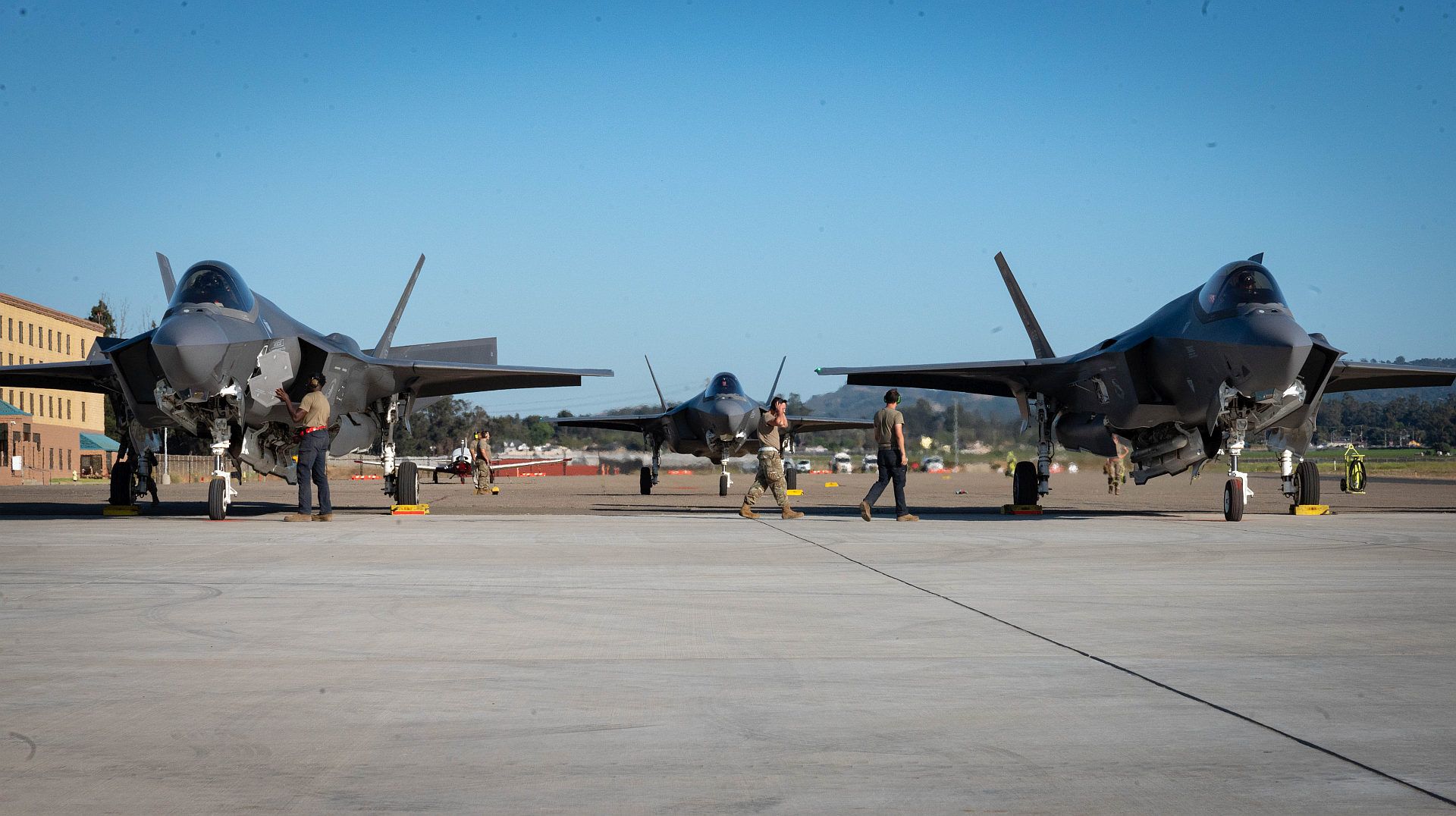
A U.S. Air Force F-35A Lightning II takes off at Santa Maria Airport during Exercise Bamboo Eagle 24-3, Aug. 5, 2024. (U.S. Air Force photo by 2nd Lt. Benjamin Williams)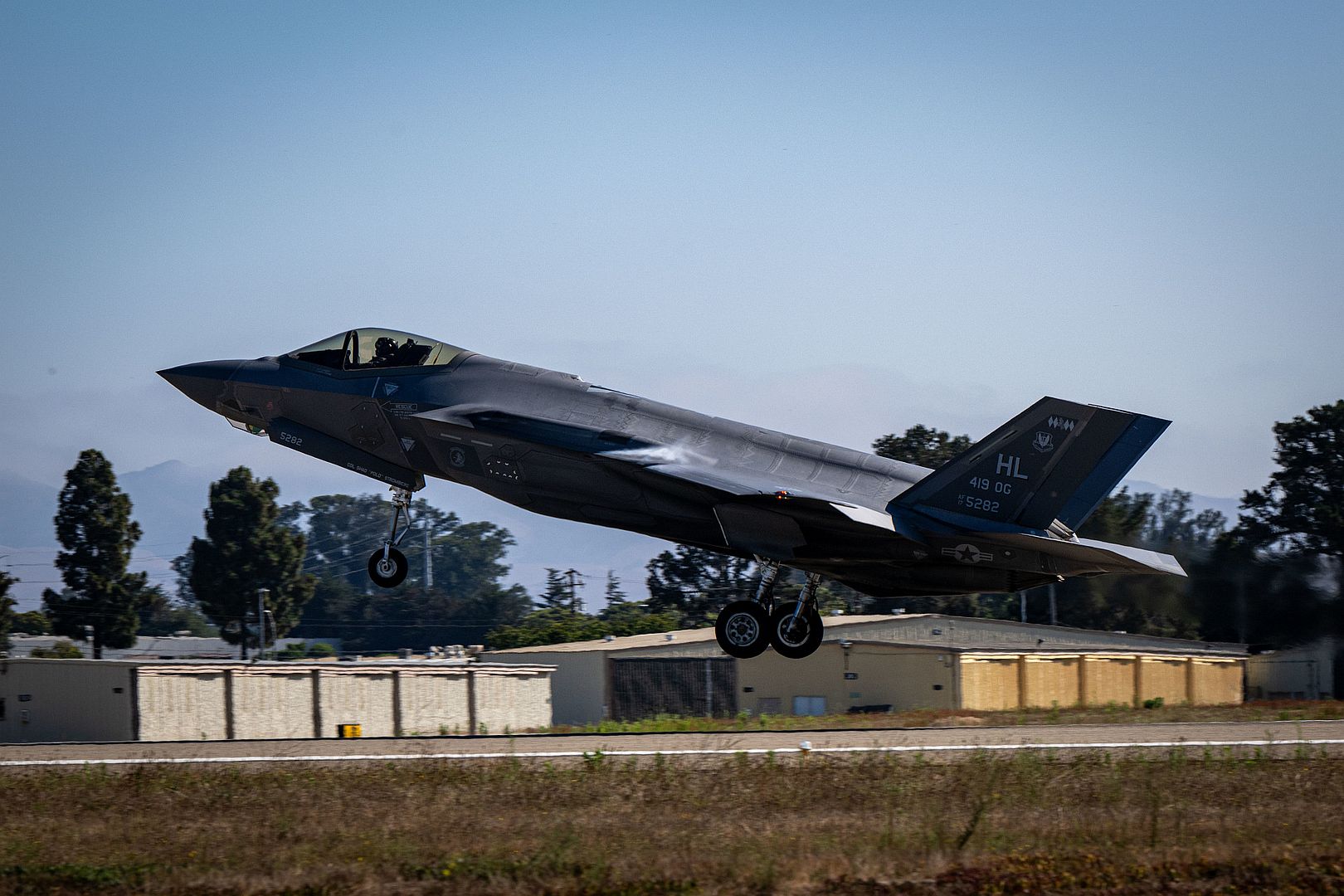
Three Aermacchi MB-339 jet trainers assigned to the Frecce Tricolori taxi at Stewart Air National Guard Base, Newburgh, New York, August 5, 2024. The Frecce Tricolori operated out of Stewart Air National Guard Base for the New York Air Show during their Canada and North America air show tour. (U.S. Air National Guard photo by 1st Lt. Briana Ross)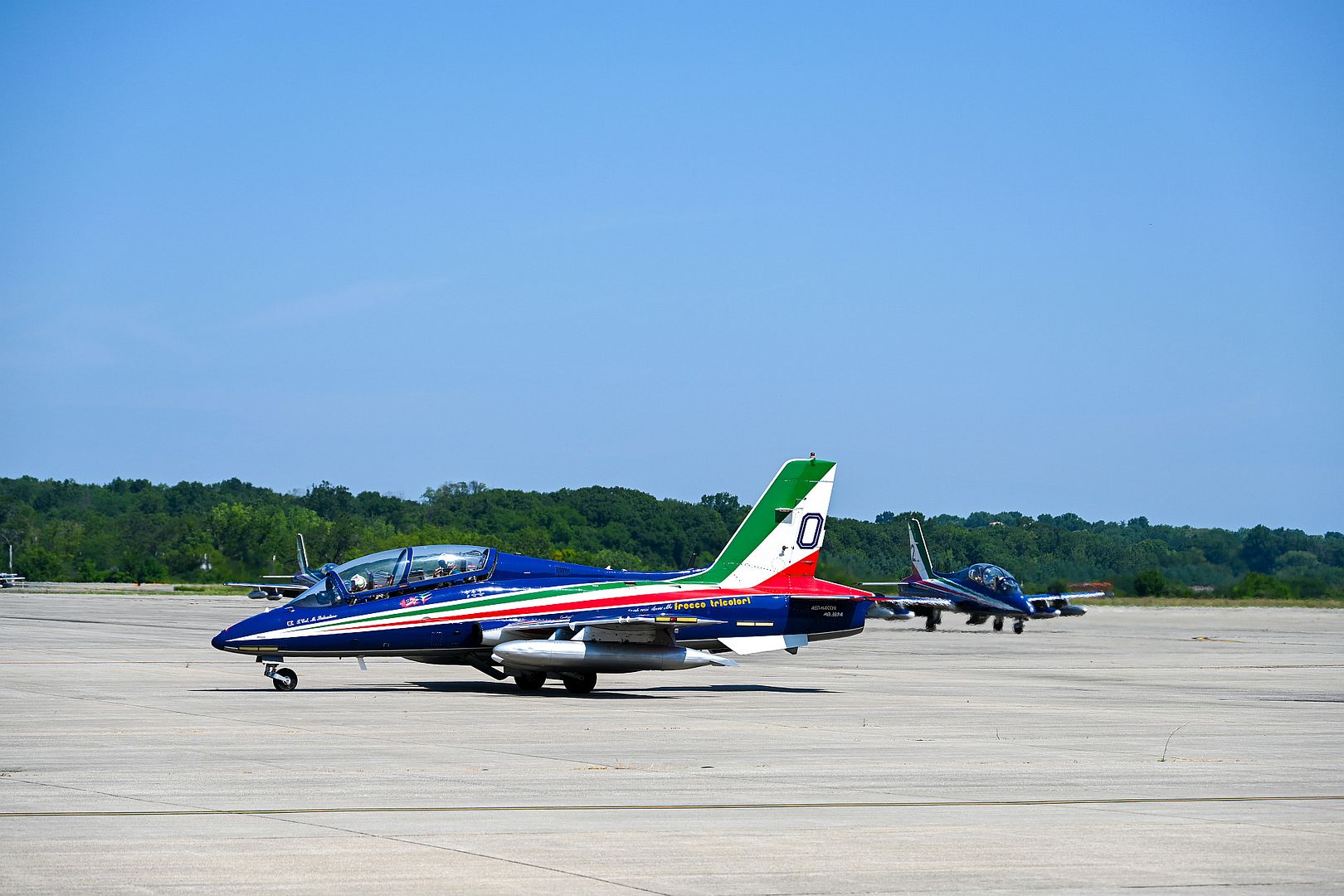
A U.S. Air Force C-17 Globemaster III shelters in a hangar at Joint Base Charleston, South Carolina, ahead of tropical storm Debby, Aug. 5, 2024. JB Charleston routinely takes measures to protect assets and return to operational status as soon as possible. (U.S. Air Force photo by Senior Airman Caleb Parker)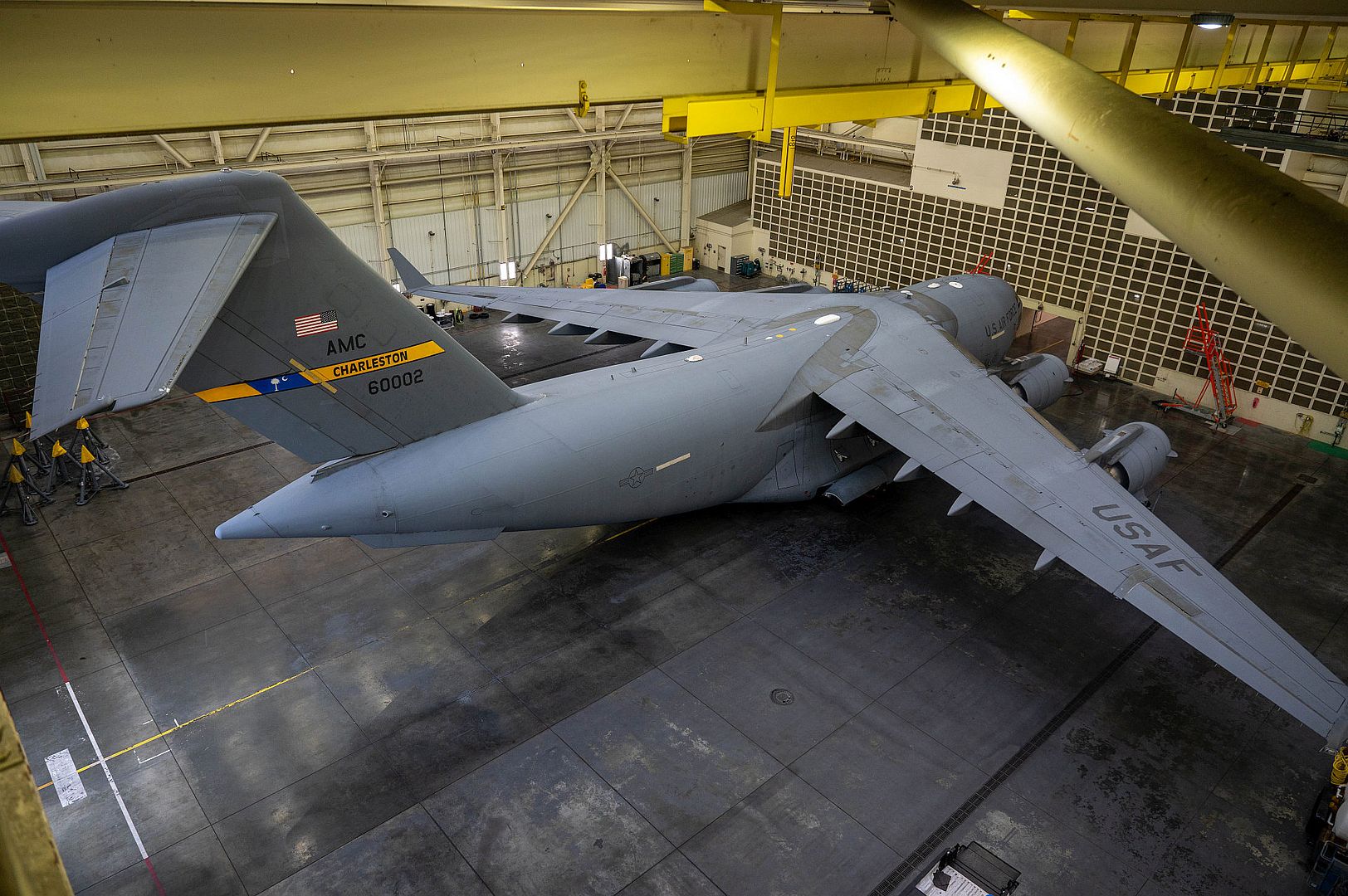
U.S. Air Force Airmen assigned to the 1st Special Operations Wing and 492d Special Operations Wing, participate in highway landings during Emerald Warrior 24 FTX II in Bono, Arkansas, August 4, 2024. The objective of the operation was to train aircrews on runway-agnostic operations to enable Air Commandos to effectively work in contested spaces where traditional airfields may be unavailable or under threat. (U.S. Air Force photo by Airman 1st Class Saisha Cornett)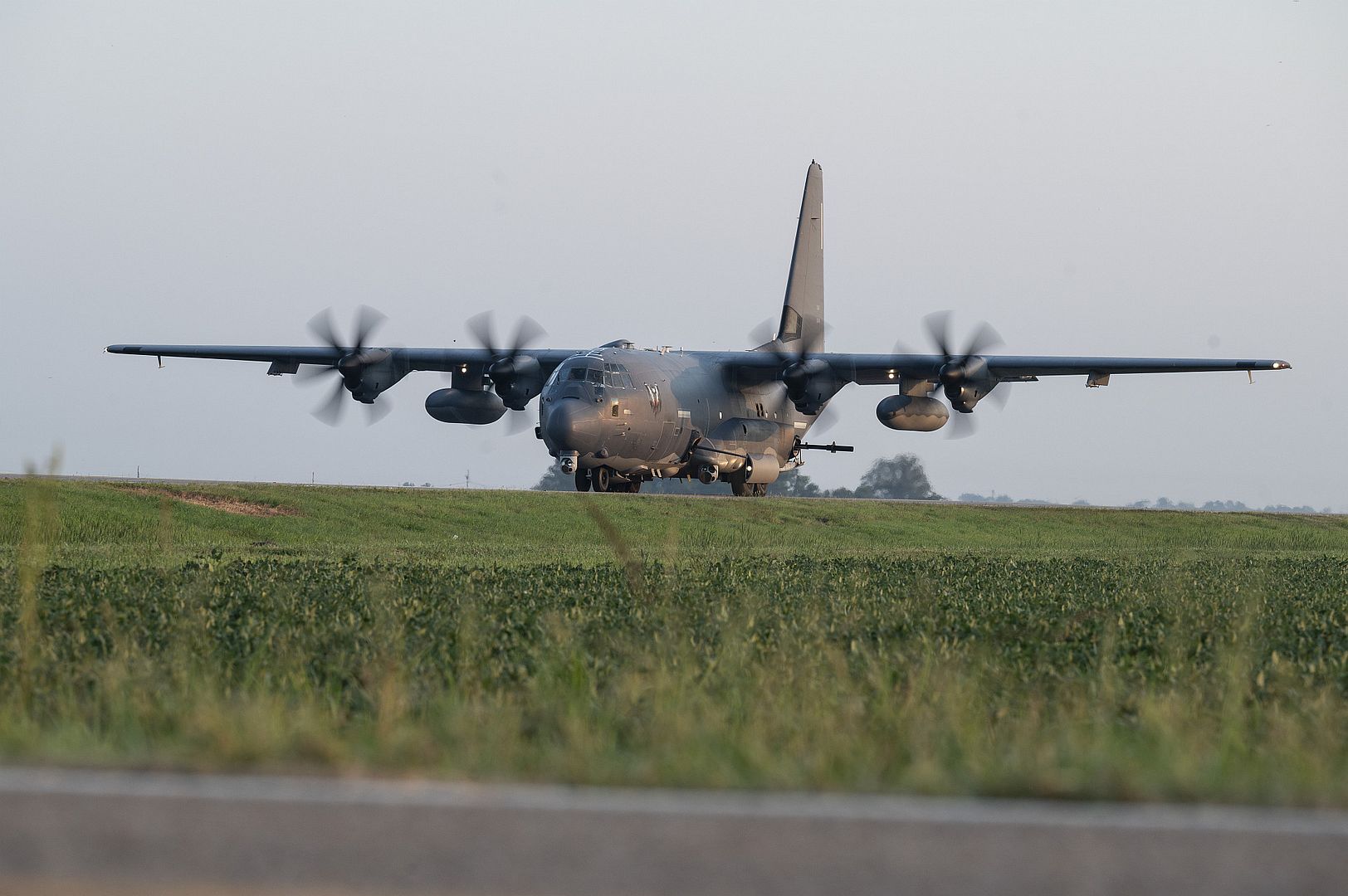
A U.S. Air Force F-16 Falcon assigned to the 162nd Wing of the Arizona Air National Guard lands at the Sioux City, Iowa airport where the aircraft will be painted at the Air National Guard paint facility August 6, 2024. The paint facility is colocated with the Iowa Air National Guard’s 185th Air Refueling Wing. U.S. Air National Guard photo Senior Master Sgt. Vincent De Groot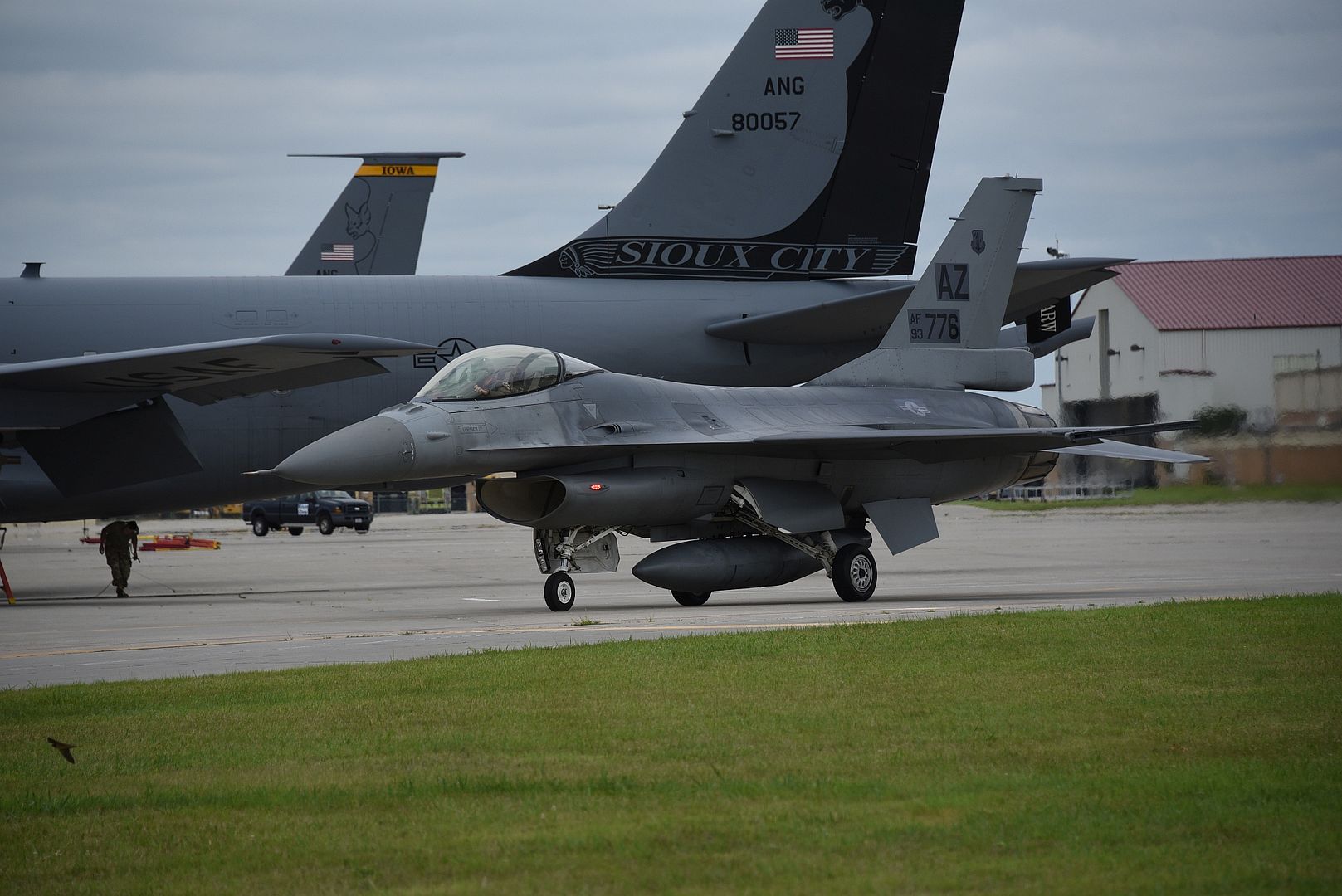
An F-35B Lightning II assigned to Marine Fighter Attack Squadron (VMFA) 122, Marine Corps Air Station Yuma, Arizona, taxis prior to taking off for a mission during Red Flag-Nellis 24-3, at Nellis AFB, Nevada, July 30, 2024. The 414th Combat Training Squadron at Nellis conducts Red Flag exercises to provide aircrews the experience of multiple, intensive air combat sorties in the safety of a training environment. (U.S. Air Force photo by William R. Lewis)_122_Marine_Corps_Air_Station_Yuma_Arizona.jpg?width=1920&height=1080&fit=bounds)
An F-16 Fighting Falcon assigned to the 77th Fighter Squadron, Shaw Air Force Base (AFB), South Carolina, takes off for a Red Flag-Nellis 24-3 at Nellis AFB, Nevada, July 30, 2024. Red Flag provides participants the opportunity to plan and employ together in the air, domain (supported by space, and cyber) in a contested, degraded and operationally limited environment. (U.S. Air Force photo by William R. Lewis)_South_Carolina_takes_off_for_a_Red_Flag-Nellis_24-3_at_Nellis_AFB_Nevada_July_30_2024..jpg?width=1920&height=1080&fit=bounds)
An F-35B Lightning II assigned to Marine Fighter Attack Squadron (VMFA) 542, Marine Corps Air Station Cherry Point, North Carolina, taxis prior to taking off for a mission during Red Flag-Nellis 24-3, at Nellis AFB, Nevada, July 30, 2024. Red Flag provides participants the opportunity to plan and employ together in the air, domain (supported by space, and cyber) in a contested, degraded and operationally limited environment.
(Photo by William Lewis)_542_Marine_Corps_Air_Station_Cherry_Point_North_Carolina.jpg?width=1920&height=1080&fit=bounds)
ARJ21 aircraft of Chengdu Airlines starts to operate in route of Kashi-Urumchi
Destinations of China-made regional jet covering 25 airports in Xinjiang
Chengdu Airlines officially opened the route of Kashi-Urumchi on July 24th, 2024, which is another new route operated by ARJ21 aircraft of Chengdu Airlines in Xinjiang, and indicates that ARJ21 aircraft of Chengdu Airlines has achieved a full coverage of 25 airports in operation in Xinjiang.
In the route of Kashi-Urumchi opened at this time, four round trips will be carried out on Monday, Wednesday, Friday and Sunday every week, and the flight number is EU3015/16. The aircraft is planned to take off from Kashi at 9:15 and land at Urumchi at 10:55 for the onward trip, and is planned to take off from Urumchi at 11:55 and land at Kashi at 13:45 for the return flight. The opening of this route further increases the density of Xinjiang airline network of China-made commercial aircraft, will provide more convenience for the personnel exchange and commercial intercourse between the two cities, and will contribute to the high-quality economic and social development of the two places.
It is reported that since the ARJ21 aircraft of Chengdu Airlines was put into operation in Xinjiang more than one year ago, Chengdu Airlines has continually improved the coverage and accessibility of the "border express" network, set up three bases in Turpan, Yining and Kashi, put nine ARJ21 aircraft into service, maintained more than 40 routes in operation, successfully realized the operational goals of "flying in plateau, flying in Central Asia, and having a full coverage", and provided more convenient air travel services for people of all nationalities in Xinjiang and people coming to Xinjiang for tourism, on official business and for work.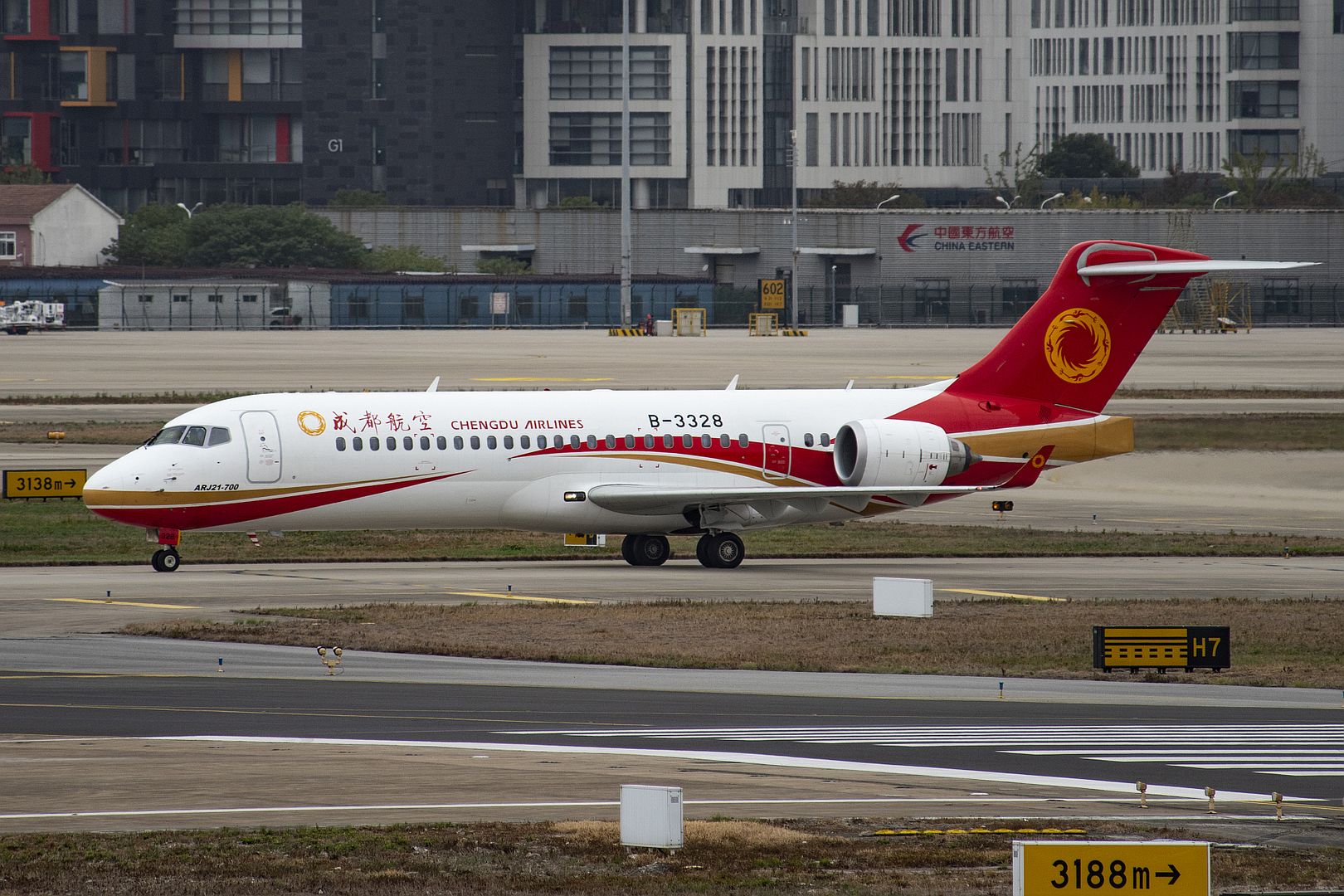
After three weeks in Australia on Exercise #PitchBlack24, the RAF detachment that has been taking part returns to the UK.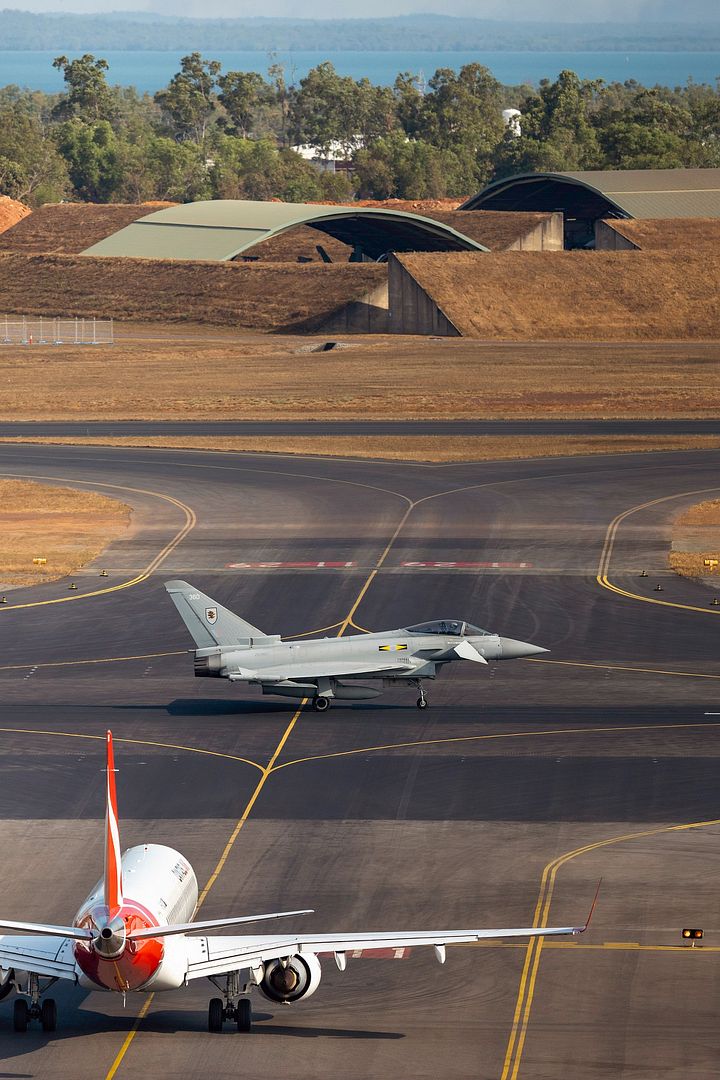
The detachment consisted of six Typhoons from Royal Air Force Coningsby based XI (F) Squadron and a Voyager from the Air Mobility Force based at RAF Brize Norton, as well as supporting elements from across the RAF. The overarching aim of the exercise was to practice Offensive Counter Air & Defensive Counter Air combat in an airspace that's larger than the UK.
(Photos courtesy of the RAF)
-
 Main AdminA U.S. Navy P-8 Poseidon parks on the ramp during Exercise Northern Strike 2024-2, at the Alpena Combat Readiness Training Center, Michigan, Aug. 6, 2024. The P-8 is a maritime patrol and reconnaissance aircraft enabling search-and-rescue training in Lake Huron.
Main AdminA U.S. Navy P-8 Poseidon parks on the ramp during Exercise Northern Strike 2024-2, at the Alpena Combat Readiness Training Center, Michigan, Aug. 6, 2024. The P-8 is a maritime patrol and reconnaissance aircraft enabling search-and-rescue training in Lake Huron.
NS24-2, one of the Department of Defense's largest reserve component readiness exercises, is scheduled to take place at Michigan's National All Domain Warfighting Center (NADWC) from Aug. 3-17, 2024. Over 6,300 participants from 32 states and territories and several international participants will converge at the NADWC. Exercise Northern Strike is the premier reserve component training event designed to build readiness with joint and partner forces in all domains of warfare. (U.S. Air National Guard photo by Tech. Sgt. Tristan D. Viglianco)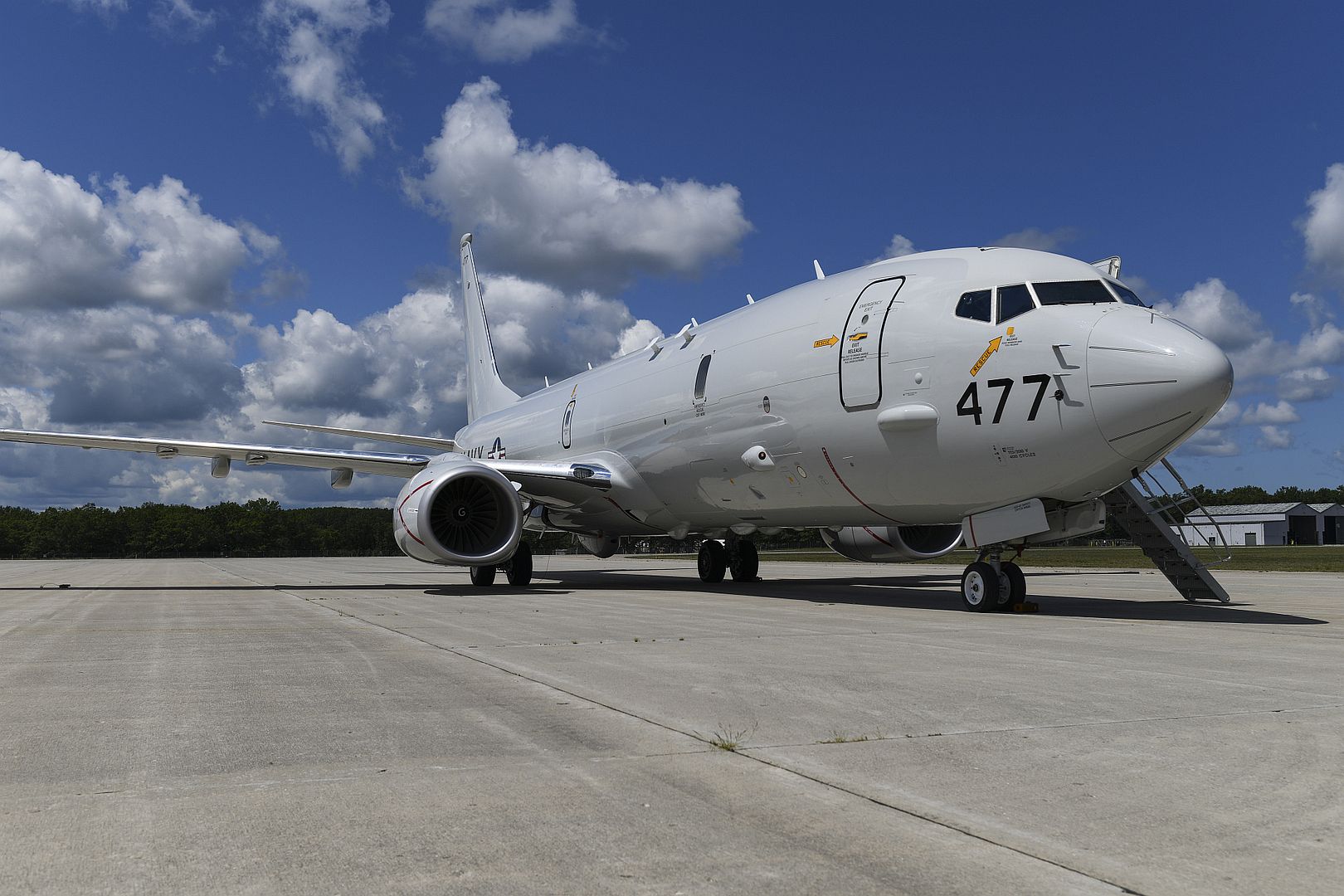
An F-16 Fighting Falcon, assigned to the Ohio National Guard’s 180th Fighter Wing, takes off during a training exercise, as part of exercise Northern Lightning at Volk Field Air National Guard Base in Camp Douglas, Wis., Aug., 6 2024. Northern Lightning is a joint training exercise, emphasizing user-defined objectives resulting in tailored, scenario-based, full spectrum, high-end training.
(Photo by Senior Airman Nicholas Battani)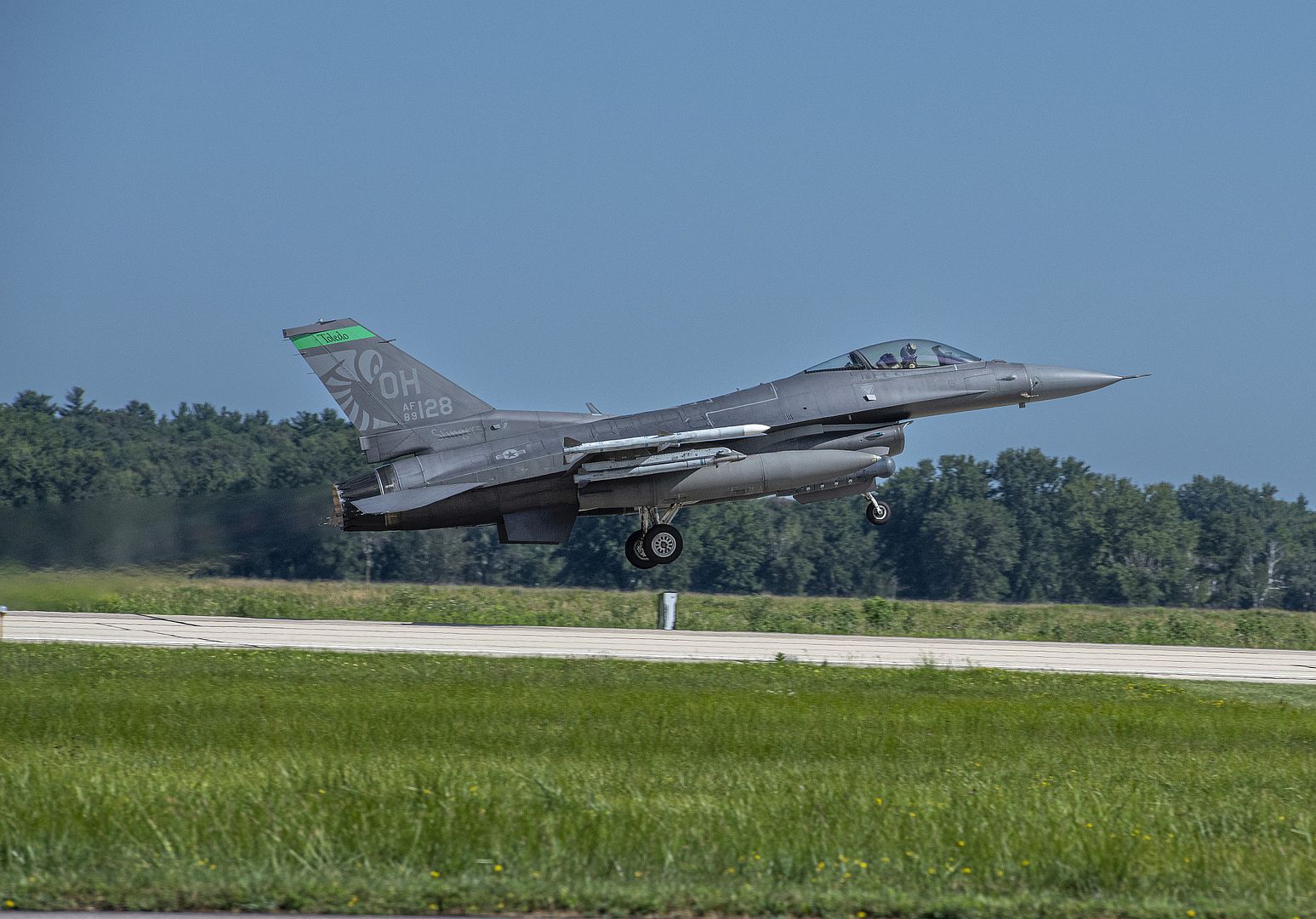
A KC-135 Stratotanker assigned to the 350th Expeditionary Air Refueling Squadron takes off from an undisclosed location within the U.S. Central Command area of responsibility, Aug. 6th, 2024. The KC-135 is deployed within the CENTCOM AOR to help defend U.S. and coalition interests, promote regional security, and deter potential adversaries in the region. (U.S. Air Force photo)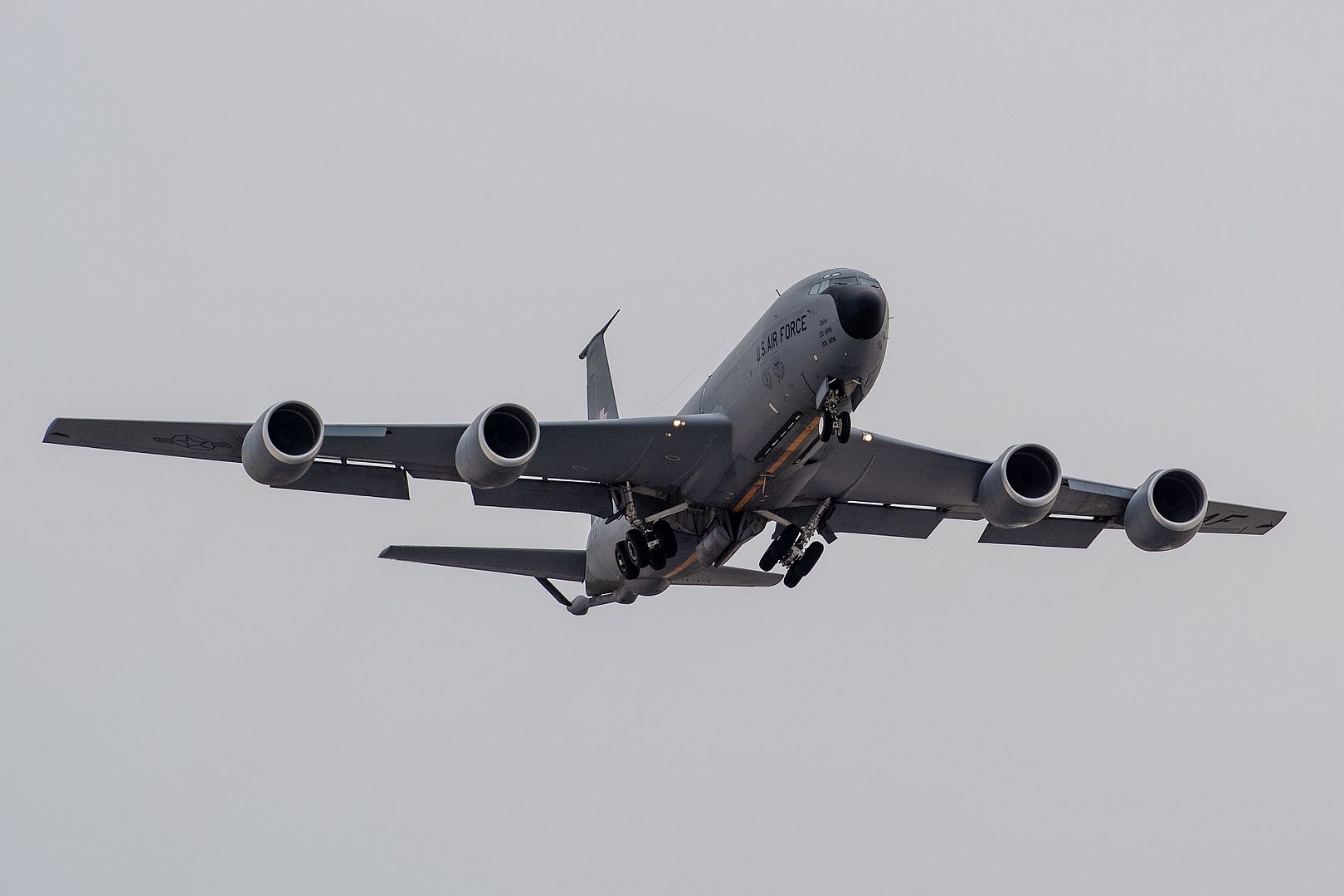
A U.S. Air Force HH-60W Jolly Green II search and rescue helicopter assigned to the 106th Rescue Wing based at Francis S. Gabreski Air National Guard Base, Westhampton Beach, N.Y., flies over the north shore of Long Island, August 4, 2024. 106th aircrew demonstrated the upgraded functions of the aircraft over land and water during the wing’s historic first HH-60W flight.
(U.S. Air National Guard photo by Senior Airman Sarah McKernan)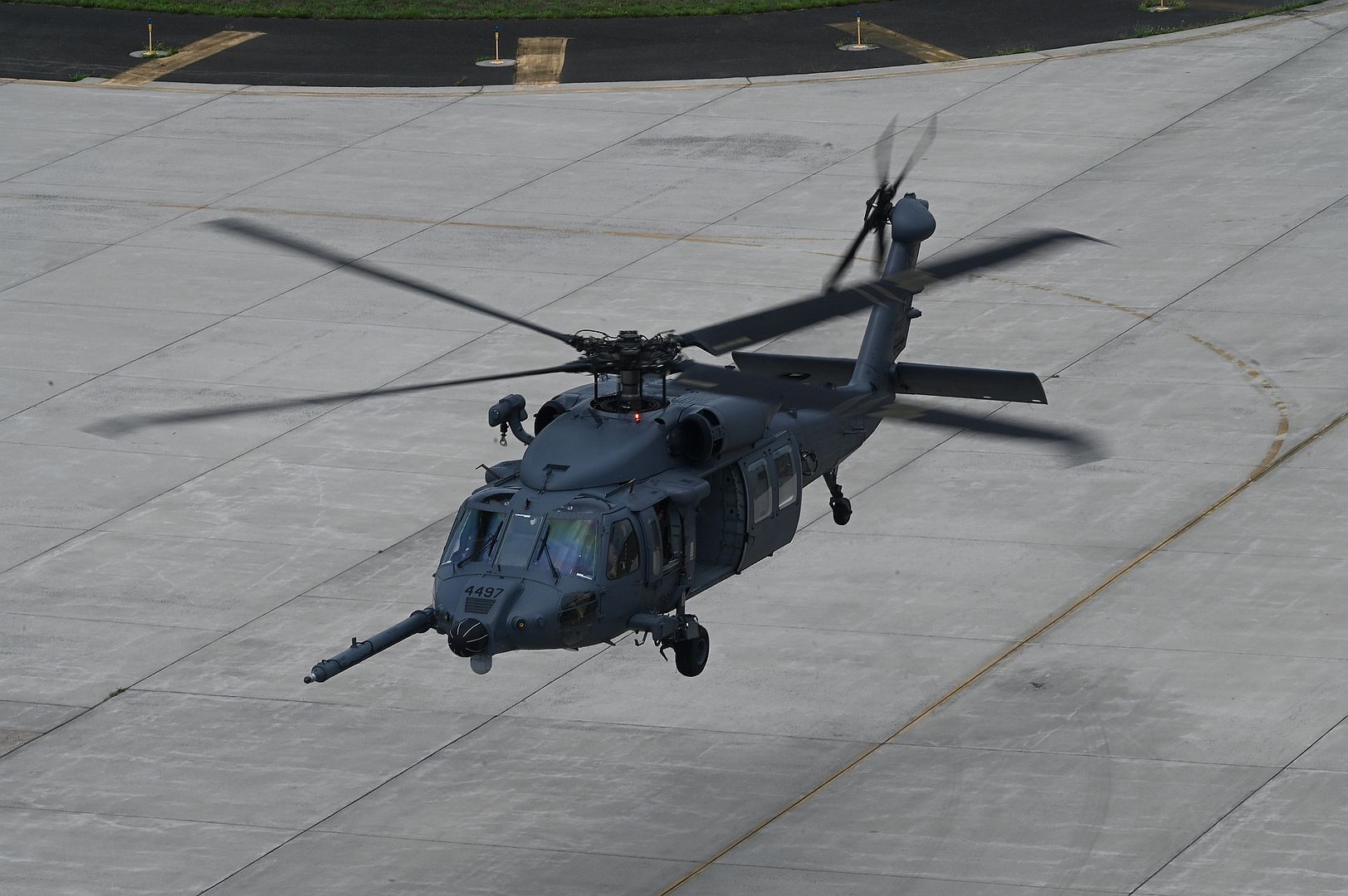
A U.S. Navy F/A-18E Super Hornet lands at an undisclosed location in the U.S. Central Command area of responsibility, Aug. 3, 2024. To maintain maritime security and international freedom of navigation, U.S. Naval Forces Central and Ninth Air Force conduct Maritime Surface Warfare operations to bolster coalition presence and protection of civilian vessels transiting through the region. (U.S. Air Force photo)
A U.S. Navy F/A-18E Super Hornet taxis at an undisclosed location in the U.S. Central Command area of responsibility, Aug. 3, 2024. To maintain maritime security and international freedom of navigation, U.S. Naval Forces Central and Ninth Air Force conduct Maritime Surface Warfare operations to bolster coalition presence and protection of civilian vessels transiting through the region. (U.S. Air Force photo)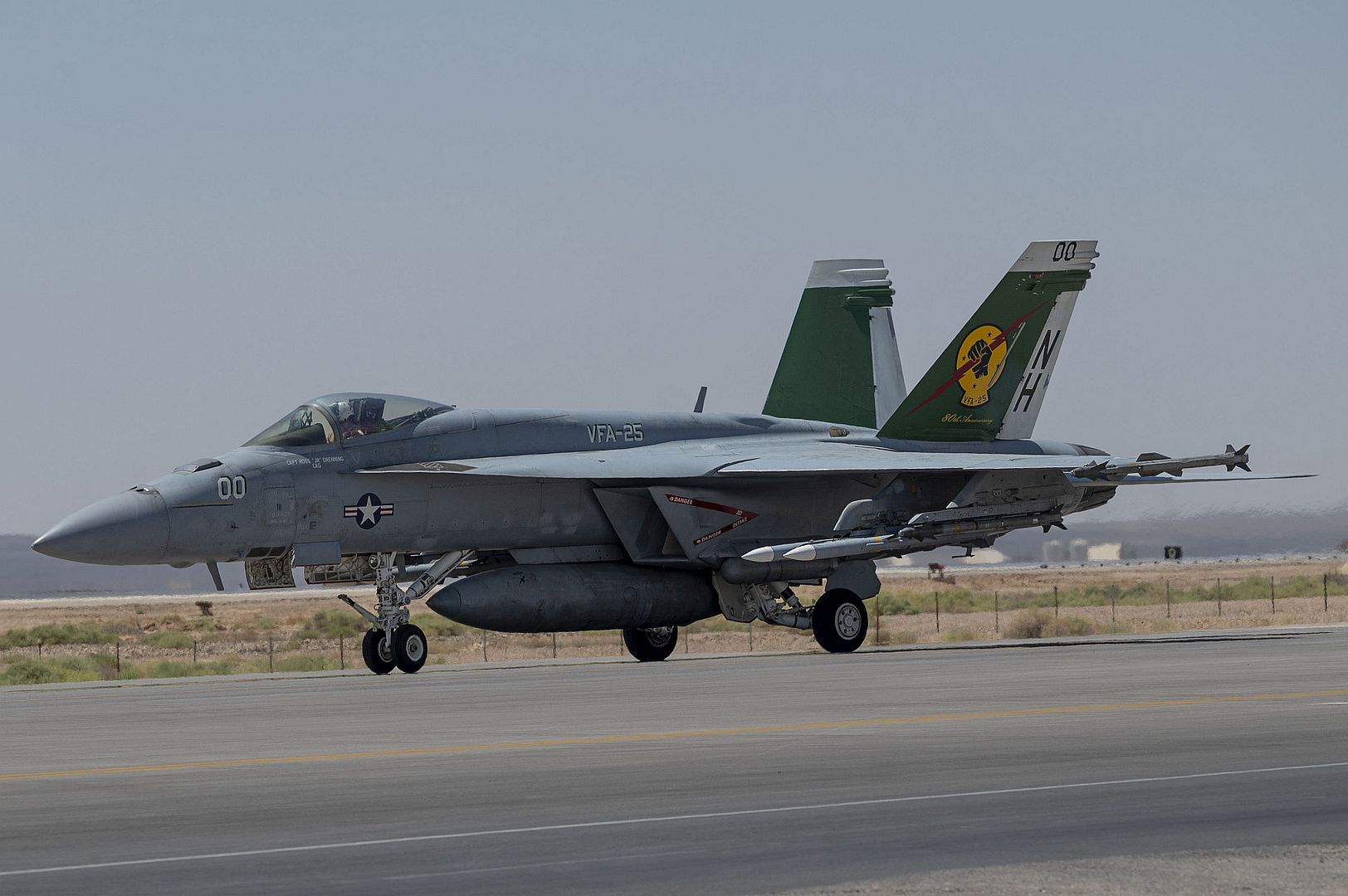
Team Travis welcome sits seventh KC-46A Pegasus to Travis Air Force Base, California on Aug. 2, 2024. (US Air Force photo by Brittany Lauro)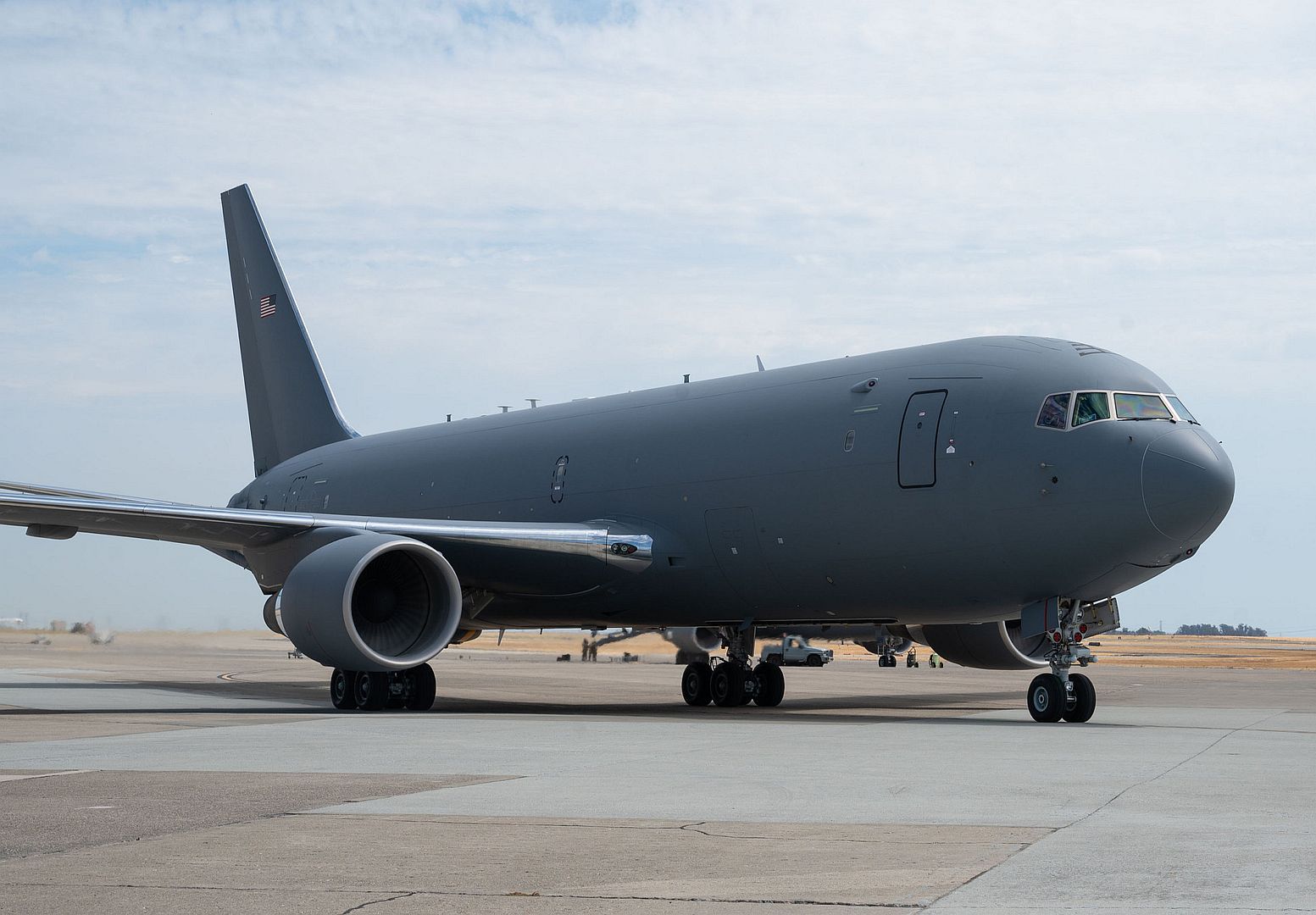
U.S. Air Force F-22 Raptors assigned to the 3rd Wing taxi to where Airmen are prepared to re-arm and conduct Forward Arming and Refueling Point (FARP) operations during Exercise Hungry Hungry Halibut at Joint Base Elmendorf-Richardson, Aug. 1, 2024. Alaska Air National Guard, active duty, and Air Reserve Airmen from across the 477th Fighter Group, 3rd Wing, 176th Wing, 144th Airlift Squadron, 673rd Air Base Wing, and other units participated in Hungry Hungry Halibut with a goal of building camaraderie and trust while training contingency combat response skills, rescue and recovery proficiency, amongst other tactical and operational capabilities. (U.S. Air Force photo by Senior Airman Julia Lebens)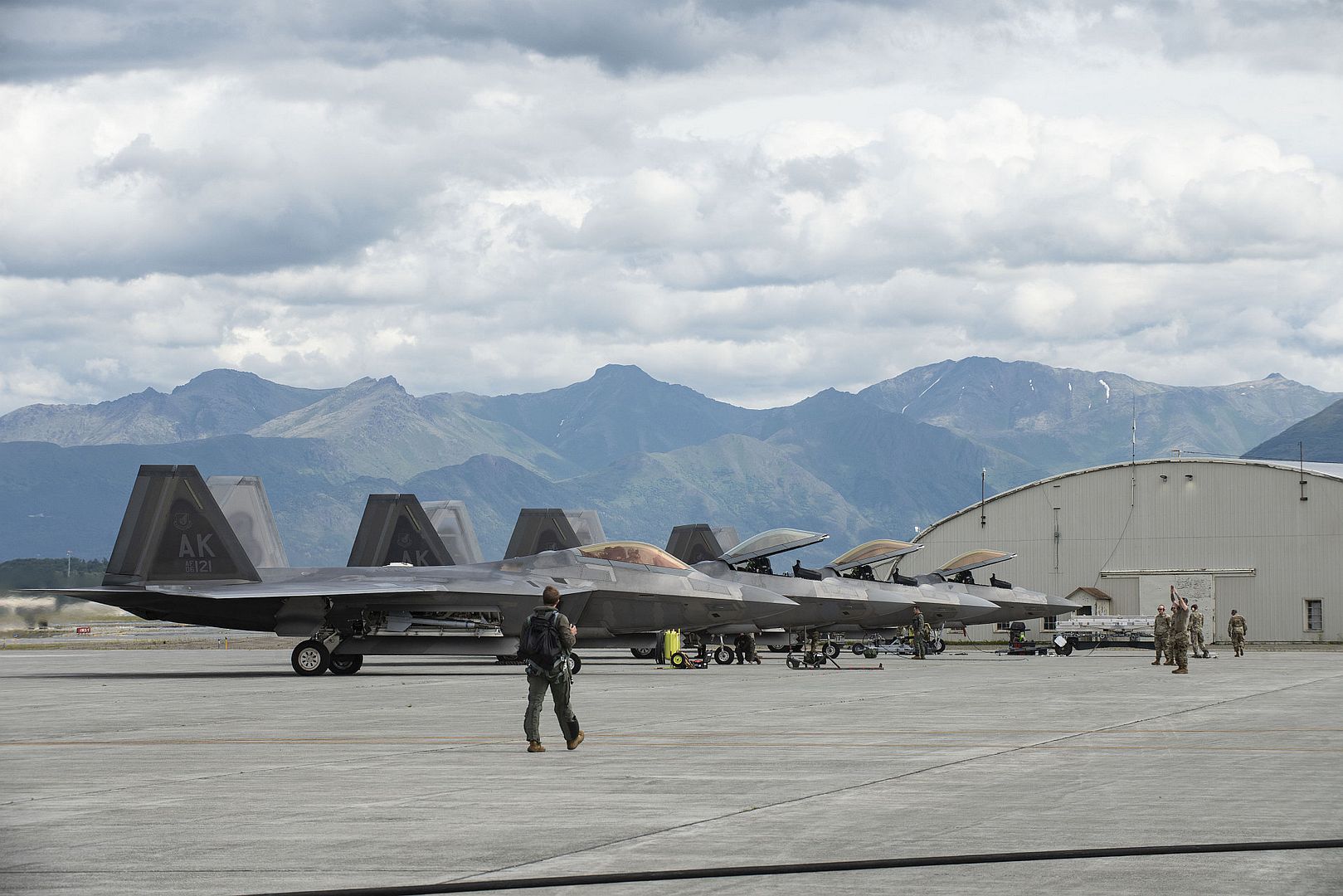
First Alpha Scramble for Eurofighter aircraft of the MilitaryAeronautica engaged in NATO Air Policing mission in Lithuania.
The Air Task Force of the 36th Wing based at Siauliai base, Lithuania, carried out the first interception of unidentified aircraft in Baltic airspace with a pair of Eurofighter fighters.
The immediate take-off order started from the Combined Air Operations Centre in Uedem in Germany, one of the NATO entities assigned to control and monitor radar tracks that affect the airspace of the North Atlantic Alliance.
(Photo courtesy of the Aeronautica Militare )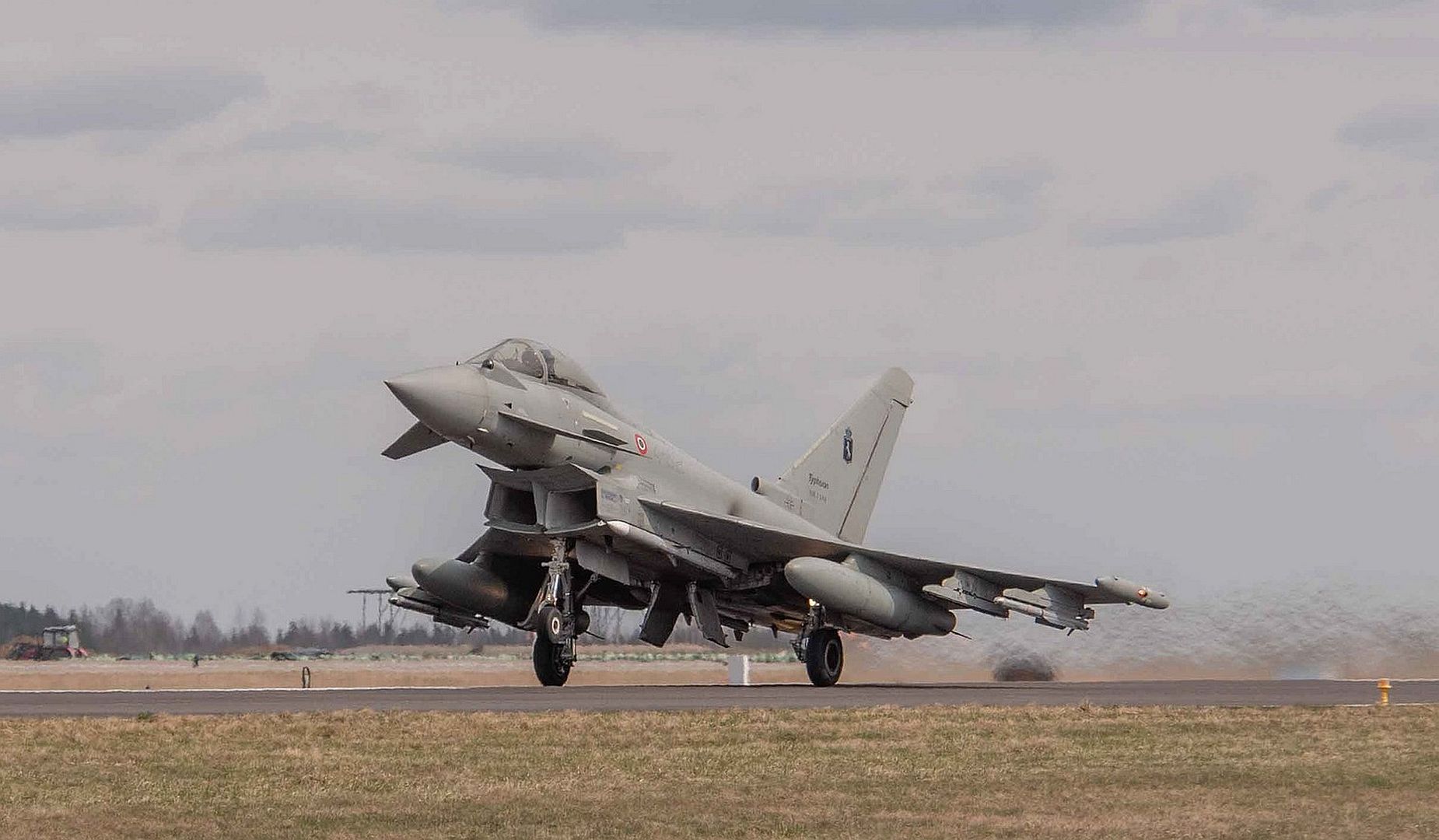
Toulouse, 7 August 2024 - Hong Kong’s Cathay Group has placed a firm order with Airbus for 30 A330-900 widebody aircraft. The order follows a thorough evaluation by the airline under its mid-size widebody fleet renewal programme.
The newly-ordered aircraft will enable Cathay to modernise its earlier generation A330-300 fleet and expand its operations on high capacity regional routes. The aircraft will also offer flexibility to serve longer range destinations. As with all A330neo aircraft, the fleet will be powered by the latest generation Rolls-Royce Trent 7000 engines.
Ronald Lam, Cathay Group Chief Executive Officer said: “As Cathay completes the final stretch of its rebuilding journey, we are turning the page to modernisation and growth, both in terms of scope and quality. We are delighted to announce this new order for state-of-the-art A330neo aircraft. This substantial investment reflects not only our immense confidence in Hong Kong’s leading international aviation hub status, but also represents our commitment to fostering our home city’s ongoing development.”
“The A330 is an aircraft type that has been serving Cathay Pacific well for nearly 30 years. These new aircraft will principally serve our regional destinations in Asia, while also providing the flexibility to serve longer-haul destinations as required. The improved fuel efficiency of these A330neos, together with their high standards of comfort, will enable us to further elevate the experience we provide for our customers while also contributing towards our goal of net-zero carbon emissions by 2050.”
Christian Scherer, Airbus Chief Executive Officer, Commercial Aircraft said: "This latest order from Cathay, one of the world’s most experienced A330 operators, is a major endorsement of the latest generation A330neo. It is the natural successor for existing A330 fleets, bringing the highest levels of technical and operational commonality, and significant reductions in fuel consumption and carbon emissions. In addition, the award-winning Airspace cabin provides a whole new flight experience.”
“At Cathay, the A330neo will become the backbone of its regional widebody operations, with the versatility to operate on longer routes. Together with its A320 Family and A350 fleets, the airline will be able to take full benefit from the unique synergies of the latest generation Airbus product line.”
The A330-900 is capable of flying 7,200 nm / 13,330 km non-stop and features the award-winning Airspace cabin, offering a superior flight experience. As with all Airbus aircraft, the A330neo is already able to operate with up to 50% Sustainable Aviation Fuel (SAF), with the aim to increase this to 100% by 2030.
At the end of July, the A330 Family had won 1,805 firm orders from more than 130 customers worldwide, with 1,469 aircraft in service on long, medium and short haul routes around the world.
-
 Main AdminATLANTIC OCEAN (Aug. 6, 2024) An E/A-18G Growler, attached to the “Main Battery” of Electronic Attack Squadron (VAQ) 144, takes off from the flight deck of the Nimitz-class aircraft carrier USS Harry S. Truman (CVN 75), Aug. 6. The Harry S. Truman Carrier Strike Group is underway in the Atlantic Ocean completing integrated naval warfighting training. Composite Unit Training Exercises are an intense, multi-week exercise designed to fully integrate a carrier strike group as a cohesive, multi-mission fighting force, to assess their ability to carry out sustained combat operations from the sea, and drive future warfighting development. (U.S. Navy Photo by Mass Communication Specialist 2nd Class Hunter Day)
Main AdminATLANTIC OCEAN (Aug. 6, 2024) An E/A-18G Growler, attached to the “Main Battery” of Electronic Attack Squadron (VAQ) 144, takes off from the flight deck of the Nimitz-class aircraft carrier USS Harry S. Truman (CVN 75), Aug. 6. The Harry S. Truman Carrier Strike Group is underway in the Atlantic Ocean completing integrated naval warfighting training. Composite Unit Training Exercises are an intense, multi-week exercise designed to fully integrate a carrier strike group as a cohesive, multi-mission fighting force, to assess their ability to carry out sustained combat operations from the sea, and drive future warfighting development. (U.S. Navy Photo by Mass Communication Specialist 2nd Class Hunter Day)_144_takes_off_from_the_flight_deck_of_the_Nimitz-class_aircraft_carrier_USS_Harry_S._Truman.jpg?width=1920&height=1080&fit=bounds)
A U.S. Air Force F-22 Raptor, deployed from 3rd Wing, taxis at RAF Lakenheath, England, Aug. 6, 2024. The rapid deployment and integration of F-22s into Coalition operations demonstrates the United States’ dedication to deterring aggression and maintaining stability in the region. (U.S. Air Force photo by Airman 1st Class Alexander Vasquez)
A U.S. Air Force F-22 Raptor, deployed from 3rd Wing, sits on the flightline at RAF Lakenheath, England, Aug. 6, 2024. The rapid deployment and integration of F-22s into Coalition operations demonstrates the United States’ dedication to deterring aggression and maintaining stability in the region. (U.S. Air Force photo by Airman 1st Class Alexander Vasquez)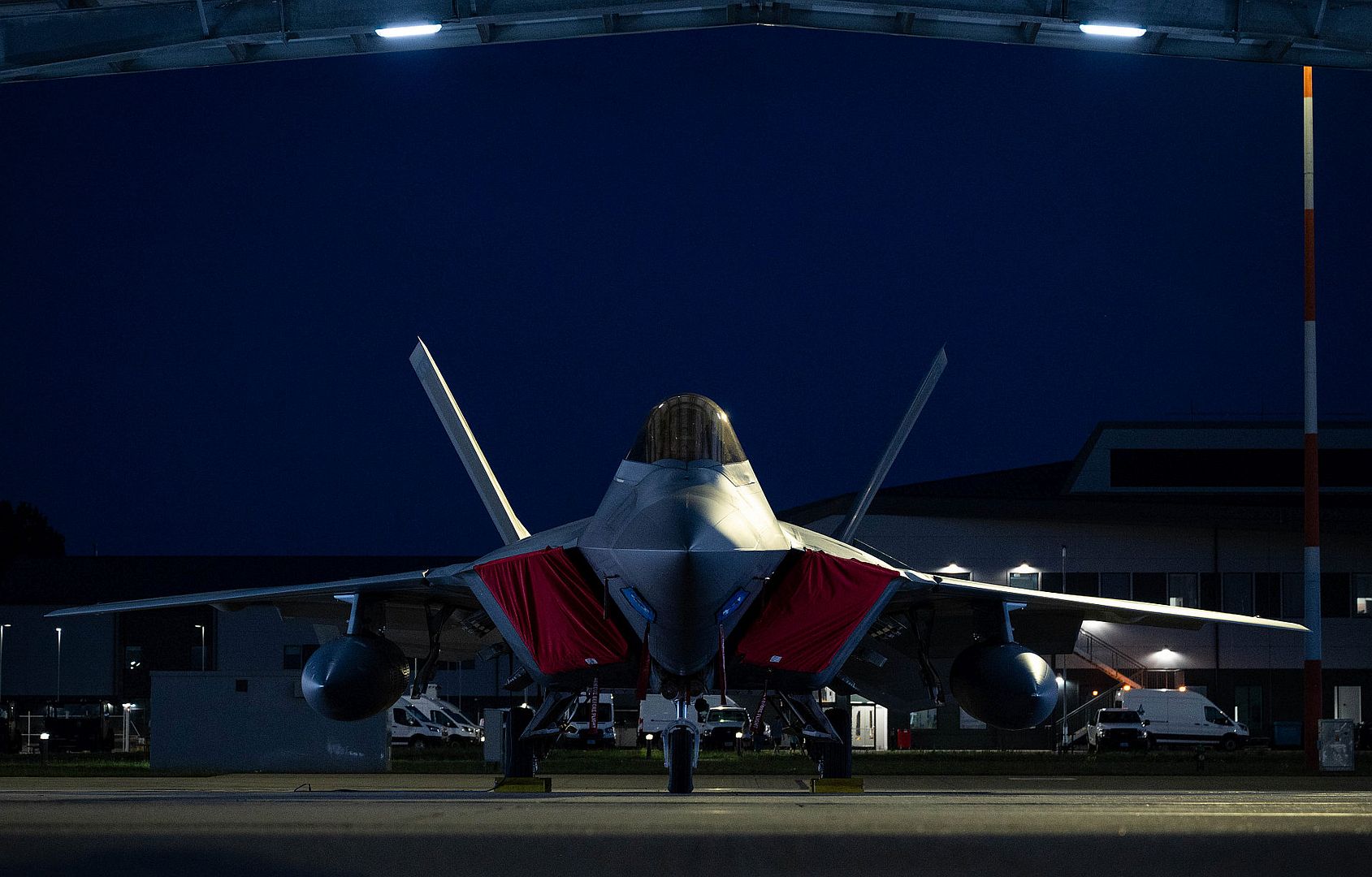
A U.S. Air Force Agile Combat Employment maintenance team, from the 180th Maintenance Group, 180th Fighter Wing, Ohio Air National Guard, performs an integrated combat turn on a 180th FW F-16 Fighting Falcon during Exercise Northern Strike 2024-2, at Oscoda-Wurtsmith Airport, Michigan, Aug. 7, 2024. The integrated combat turn allows the rapid production of sorties and can be performed on airfields set up in expeditionary locations.
NS24-2, one of the Department of Defense's largest reserve component readiness exercises, is scheduled to take place at Michigan's National All Domain Warfighting Center (NADWC) from Aug. 3-17, 2024. Over 6,300 participants from 32 states and territories and several international participants will converge at the NADWC. Exercise Northern Strike is the premier reserve component training event designed to build readiness with joint and partner forces in all domains of warfare. (U.S. Air National Guard photo by Tech. Sgt. Tristan D. Viglianco)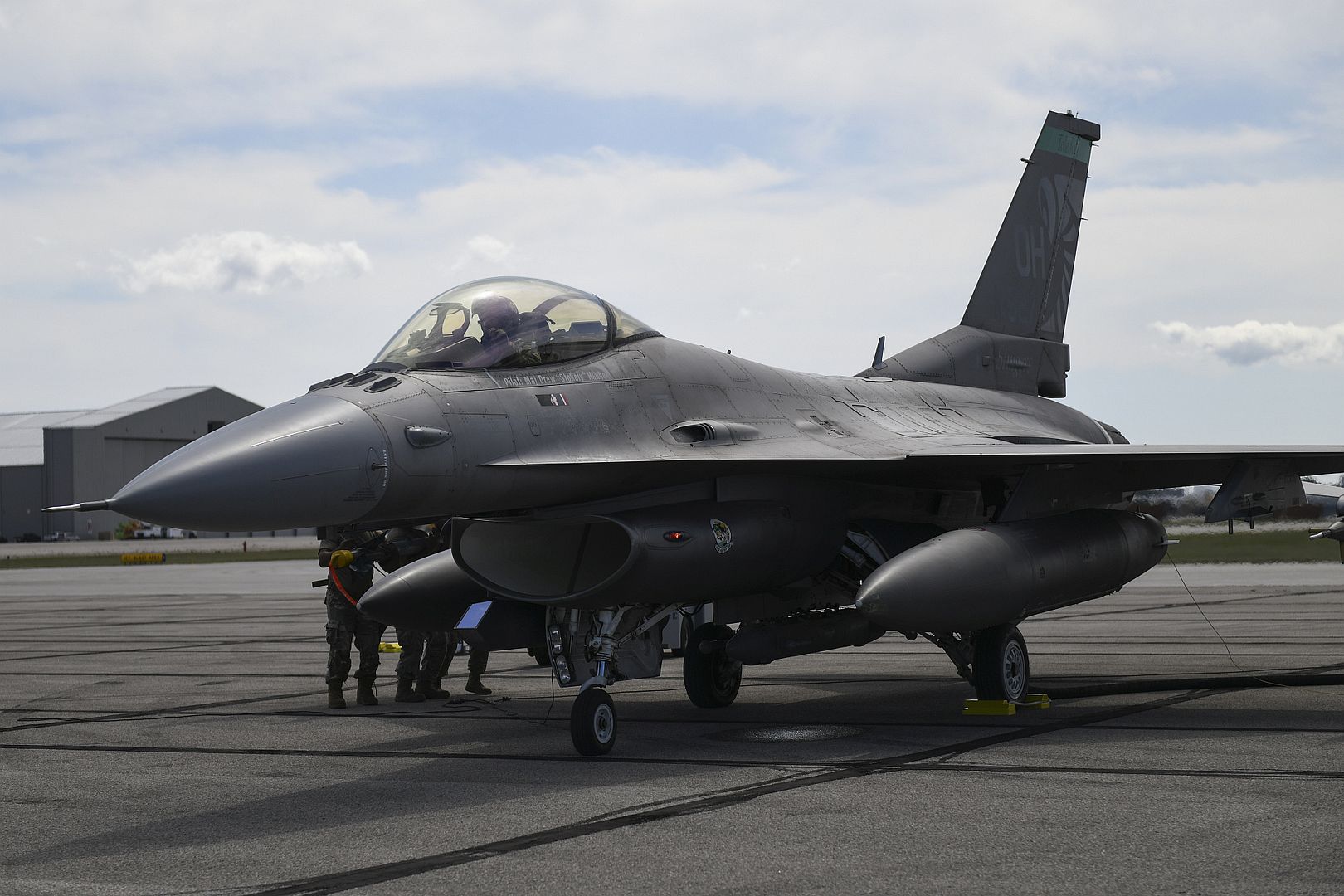
A U.S. Air Force B-1B Lancer taxis on the runway after returning from a CONUS-to-CONUS bomber mission at Ellsworth Air Force Base, S.D., Aug. 2, 2024. These bomber missions enable aircrews to maintain a high state of readiness and proficiency, and validate our always-ready, global strike capability. (U.S. Air Force photo by Staff Sgt. Jake Jacobsen)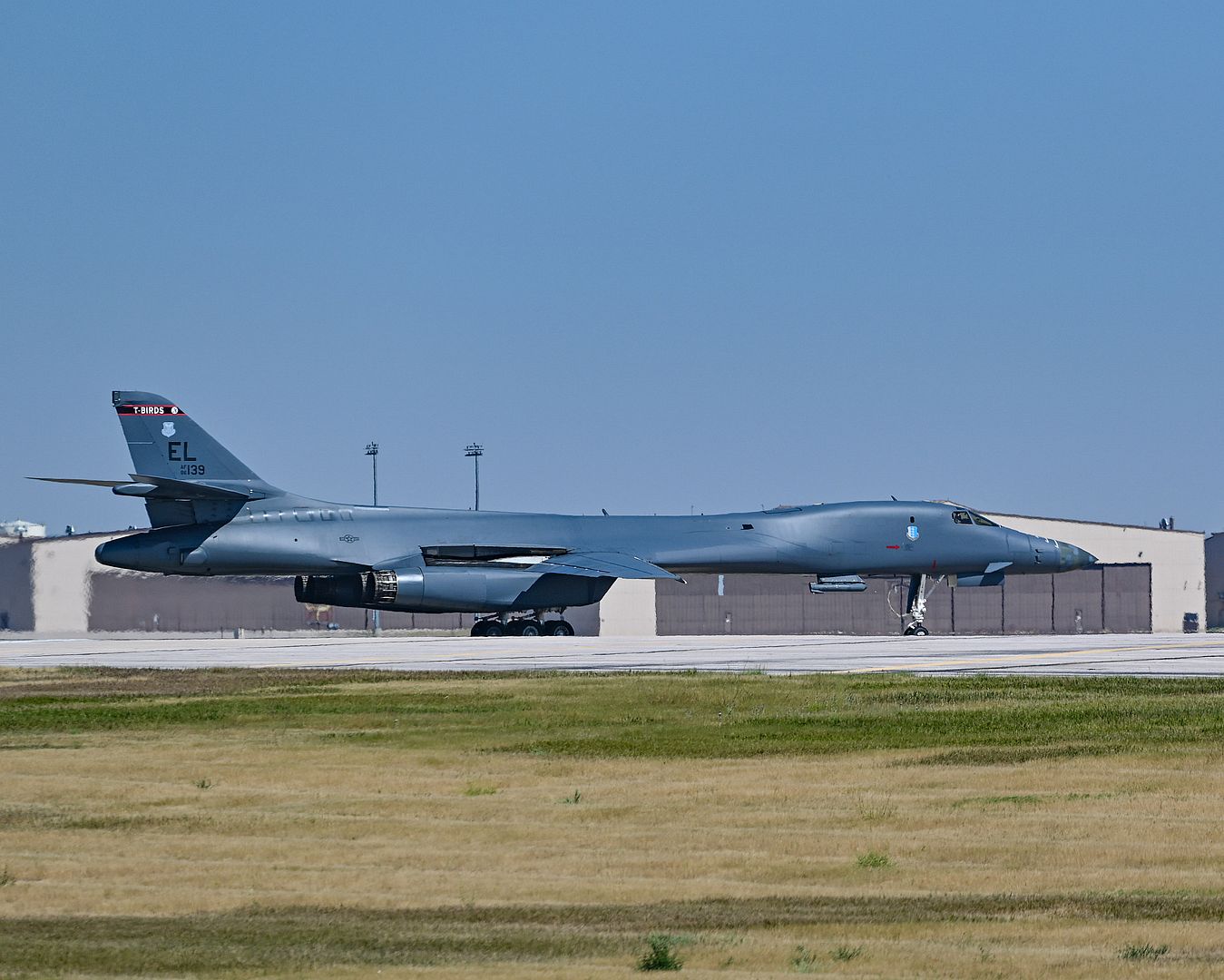
U.S. Air Force F-15E Strike Eagles assigned to the 336th Fighter Squadron are parked on the flight line during Exercise Bamboo Eagle 24-3 at Travis Air Force Base, California, Aug. 3, 2024. During Bamboo Eagle, Air Mobility Command assets supported warfighters implementing all-domain combat-power generation from disaggregated basing locations throughout the western part of the U.S., along with distributed command and control, agile logistics and tactical air-to-air refueling. (U.S. Air Force photo by Kenneth Abbate)
-
1 year agoFri Aug 09 2024, 05:19pmDuggy
 Main AdminA U.S. Marine with Marine Fighter Attack Squadron 242, Marine Aircraft Group 12, 1st Marine Aircraft Wing, signals to an F-35B Lighting II STOVL Stealth Fighter participating in field carrier landing practice during exercise Resolute Dragon 24 at Ie Shima Training Facility, Okinawa, Japan, Aug. 7, 2024. RD 24 is an annual bilateral exercise in Japan that strengthens the command, control, and multi-domain maneuver capabilities of U.S. Marines in III Marine Expeditionary Force and Japan Self-Defense Force personnel, with a focus on controlling and defending key maritime terrain. (U.S. Marine Corps photo by Cpl. Kyle Chan)
Main AdminA U.S. Marine with Marine Fighter Attack Squadron 242, Marine Aircraft Group 12, 1st Marine Aircraft Wing, signals to an F-35B Lighting II STOVL Stealth Fighter participating in field carrier landing practice during exercise Resolute Dragon 24 at Ie Shima Training Facility, Okinawa, Japan, Aug. 7, 2024. RD 24 is an annual bilateral exercise in Japan that strengthens the command, control, and multi-domain maneuver capabilities of U.S. Marines in III Marine Expeditionary Force and Japan Self-Defense Force personnel, with a focus on controlling and defending key maritime terrain. (U.S. Marine Corps photo by Cpl. Kyle Chan)
A U.S. Marine Corps an F-35B Lighting II STOVL Stealth Fighter assigned to Marine Fighter Attack Squadron 242, Marine Aircraft Group 12, 1st Marine Aircraft Wing, takes off while participating in field carrier landing practice during exercise Resolute Dragon 24 at Ie Shima Training Facility, Aug. 7, Okinawa, Japan, 2024. RD 24 is an annual bilateral exercise in Japan that strengthens the command, control, and multi-domain maneuver capabilities of U.S. Marines in III Marine Expeditionary Force and Japan Self-Defense Force personnel, with a focus on controlling and defending key maritime terrain. (U.S. Marine Corps photo by Cpl. Kyle Chan)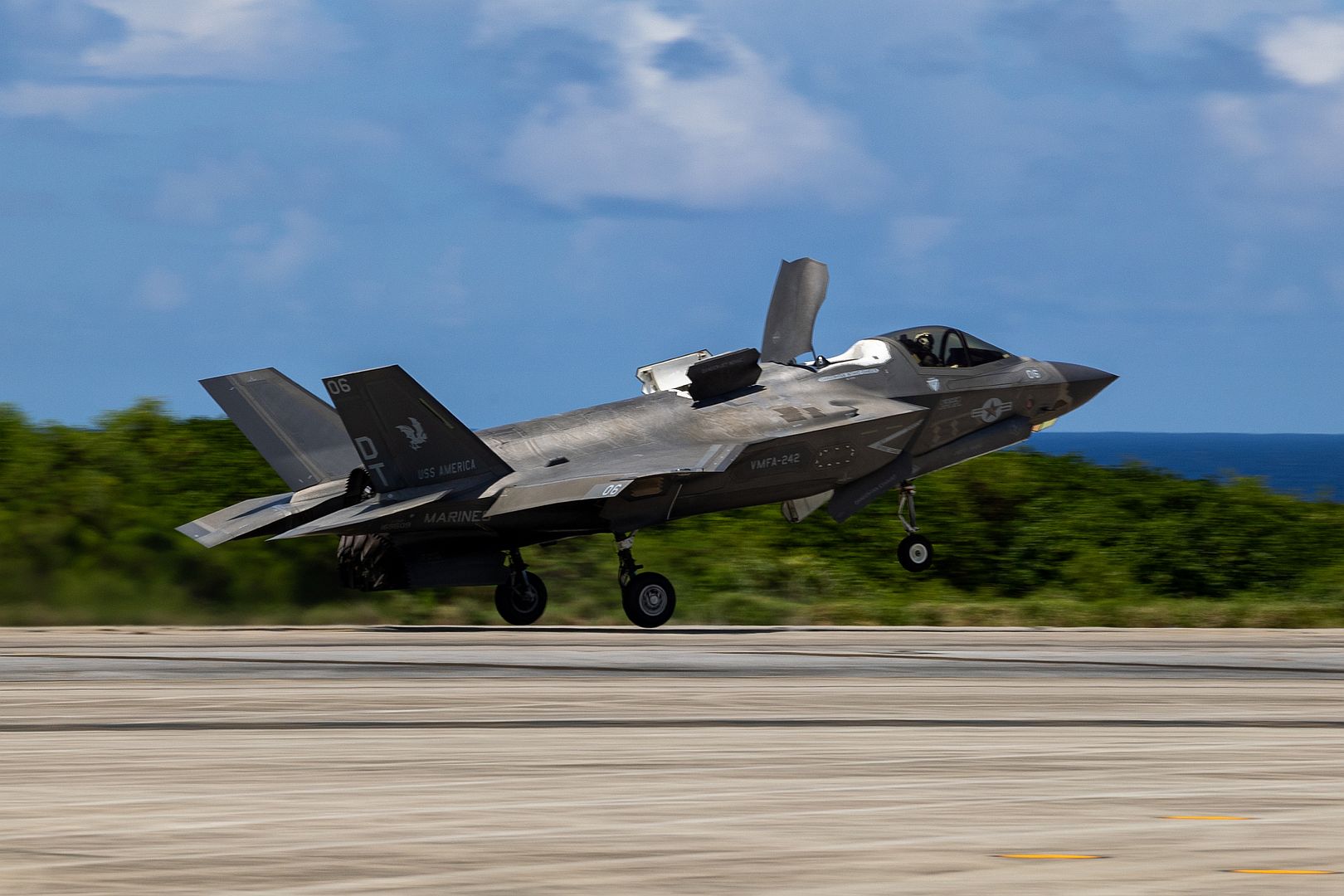
PHILIPPINE SEA (August 7, 2024) An AH-1Z Viper attack helicopter, from VMA 262 takes off from the flight deck of the forward-deployed amphibious assault ship USS America (LHA 6), during routine operations in the Philippine Sea, August 7. America, lead ship of the America Amphibious Ready Group, along with the 31st Marine Expeditionary Unit, are underway conducting routine operations in the U.S. 7th Fleet area of operations. U.S. 7th Fleet is the U.S. Navy’s largest forward-deployed numbered fleet, and routinely interacts and operates with allies and partners in preserving a free and open Indo-Pacific region (U.S. Navy photo by Mass Communication Specialist Seaman Jeadan Andre)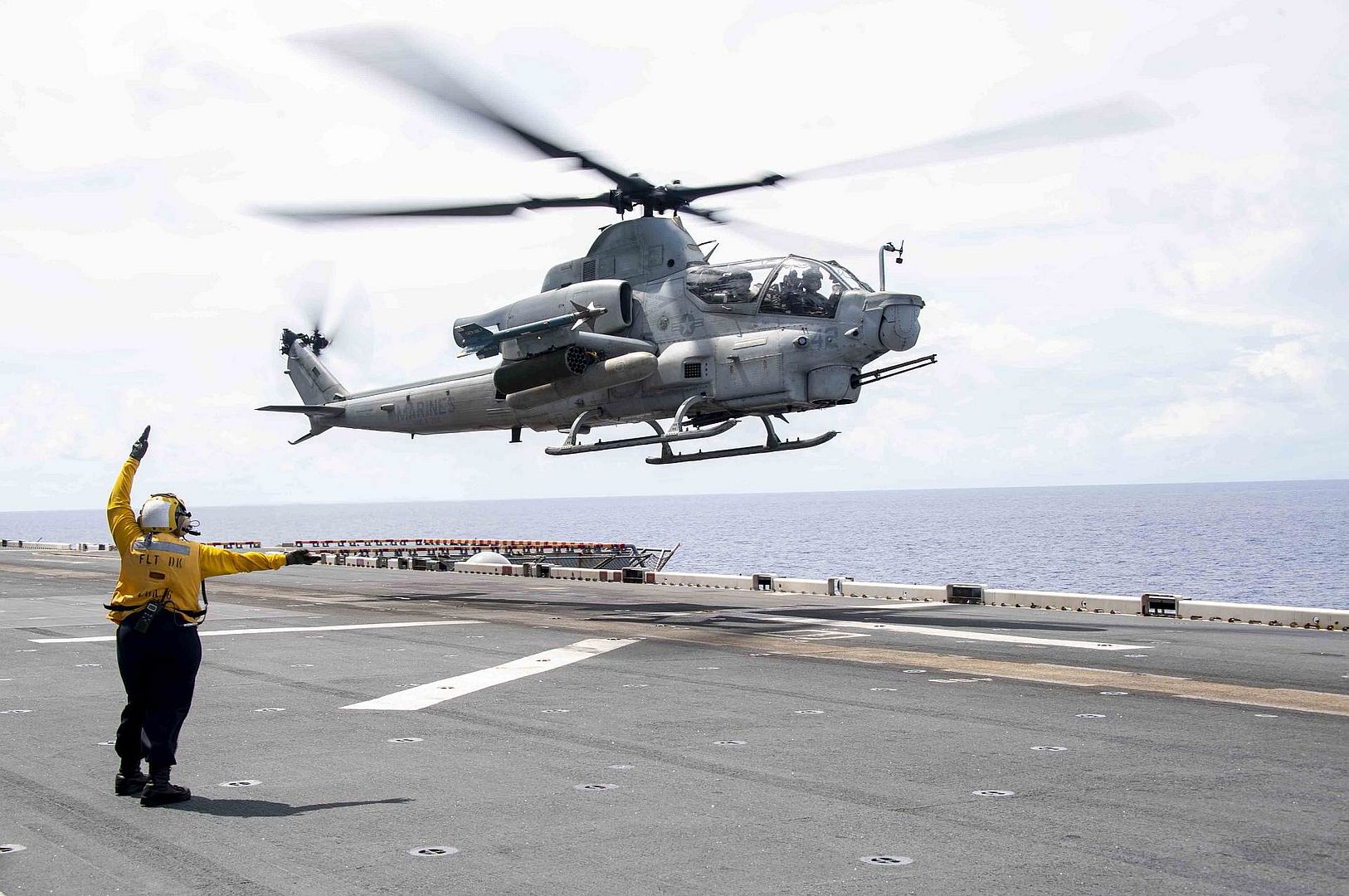
An F-15E Strike Eagle assigned to the 336th Fighter Squadron, Seymour Johnson Air Force Base, North Carolina approaches a KC-135 Stratotanker assigned to the 91st Air Refueling Squadron over the Southeast Pacific Ocean during Exercise Bamboo Eagle 24-3, Aug. 7, 2024. Through employment of the KC-135 aircraft, the 91st ARS extends U.S. global power and global reach by planning and executing aerial refueling missions for U.S. and allied combat and support aircraft. During Bamboo Eagle, Air Mobility Command assets will support warfighters implementing all-domain combat-power generation from disaggregated basing locations throughout the western part of the U.S., along with distributed command and control, agile logistics, and tactical air-to-air refueling. Bamboo Eagle provides participating units opportunities to reoptimizing for Great Power competition and to focus on mission readiness by to deliver cross-functional and lethal combat capabilities with the speed and agility required to meet pacing challenges. (U.S. Air Force photo by Tech. Sgt. Alexander Cook)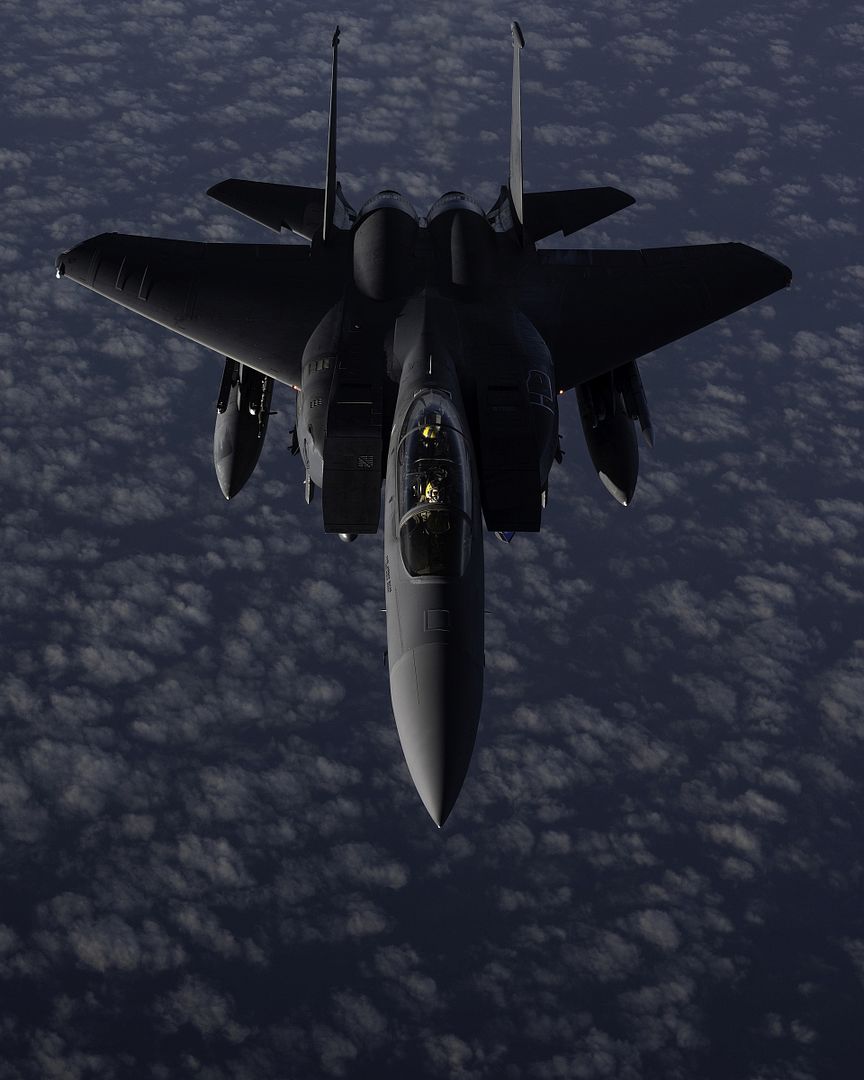
An F-15E Strike Eagle assigned to the 336th Fighter Squadron, Seymour Johnson Air Force Base, North Carolina receives fuel from a KC-135 Stratotanker assigned to the 91st Air Refueling Squadron over the Southeast Pacific Ocean during Exercise Bamboo Eagle 24-3, Aug. 7, 2024. Through employment of the KC-135 aircraft, the 91st ARS extends U.S. global power and global reach by planning and executing aerial refueling missions for U.S. and allied combat and support aircraft. During Bamboo Eagle, Air Mobility Command assets will support warfighters implementing all-domain combat-power generation from disaggregated basing locations throughout the western part of the U.S., along with distributed command and control, agile logistics, and tactical air-to-air refueling. Bamboo Eagle 24-3 is an example of how the Air Force implements large scale exercises and mission-focused training encompassing multiple operational plans to demonstrate and rehearse for complex, large-scale military operations. (U.S. Air Force photo by Tech. Sgt. Alexander Cook)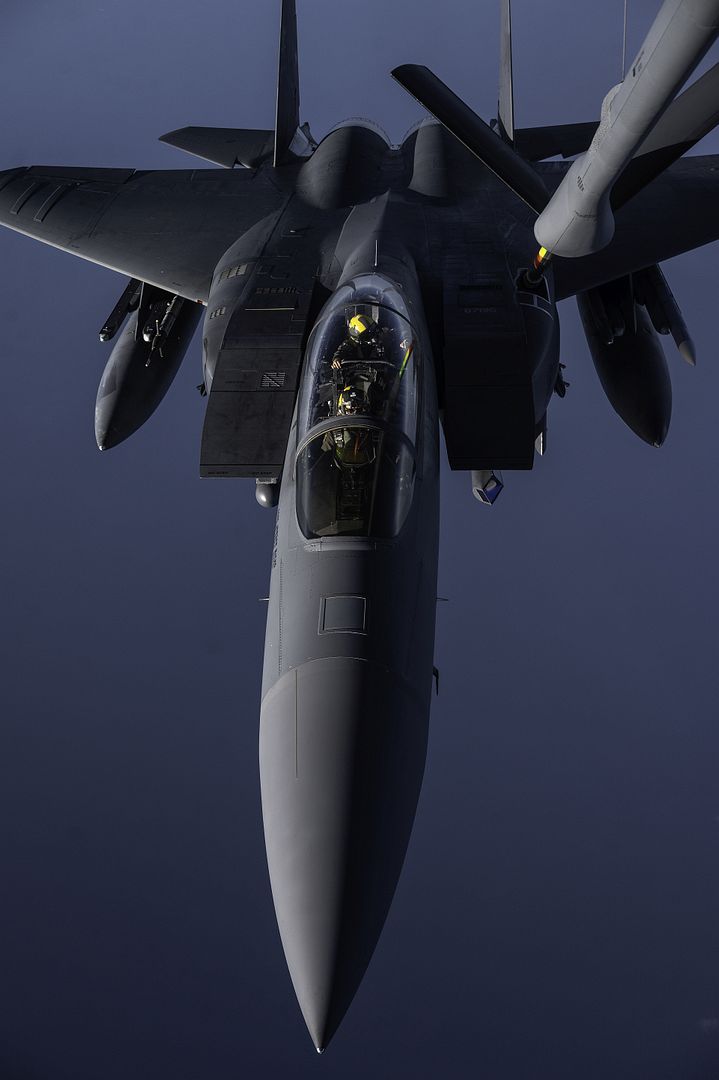
An F-16 Fighting Falcon assigned to the 480th Fighter Squadron, Spangdahlem Air Base, Germany, approaches a KC-135 Stratotanker assigned to the 91st Air Refueling Squadron over the Southeast Pacific Ocean during Exercise Bamboo Eagle 24-3, Aug. 7, 2024. Through employment of the KC-135 aircraft, the 91st ARS extends U.S. global power and global reach by planning and executing aerial refueling missions for U.S. and allied combat and support aircraft. During Bamboo Eagle, Air Mobility Command assets will support warfighters implementing all-domain combat-power generation from disaggregated basing locations throughout the western part of the U.S., along with distributed command and control, agile logistics, and tactical air-to-air refueling. Bamboo Eagle provides participating units opportunities to reoptimizing for Great Power competition and to focus on mission readiness by to deliver cross-functional and lethal combat capabilities with the speed and agility required to meet pacing challenges. (U.S. Air Force photo by Tech. Sgt. Alexander Cook)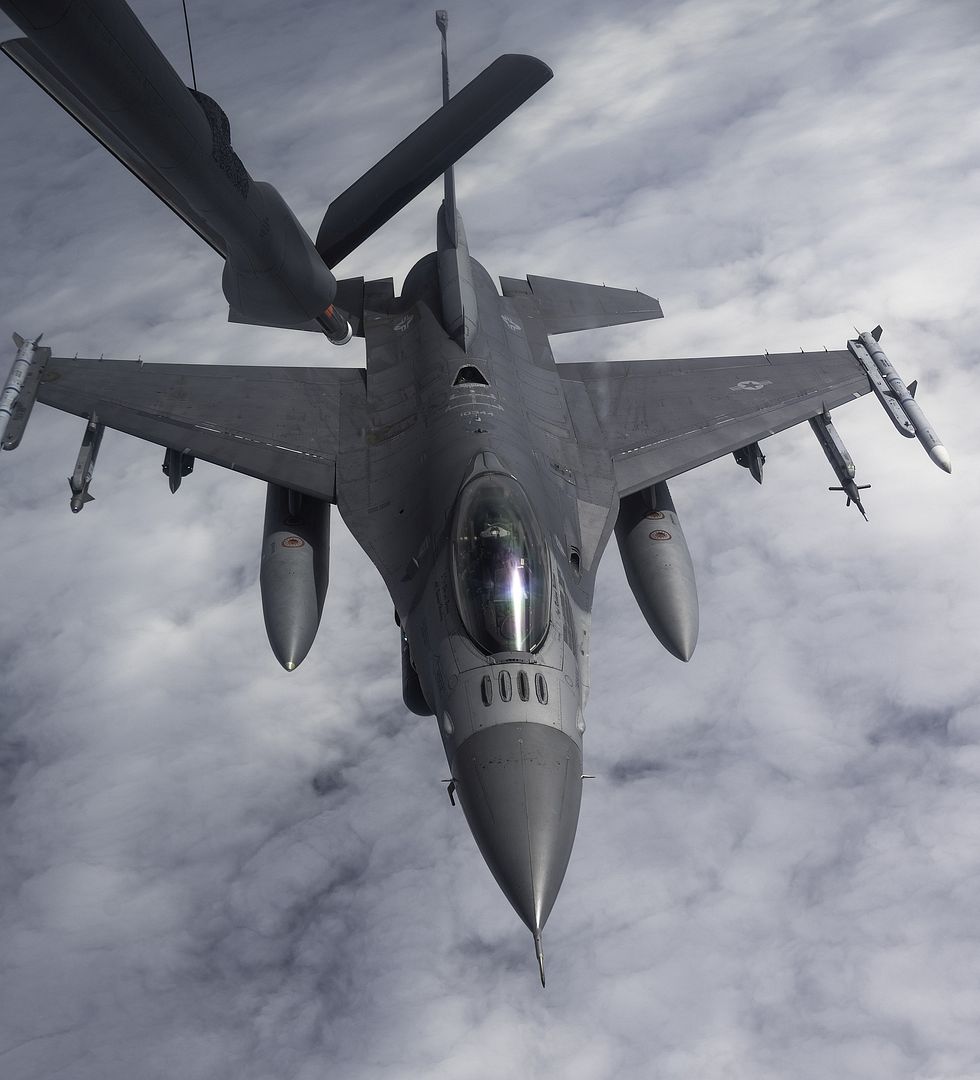
U.S. Air Force airmen from the 122nd Fighter Wing, Indiana Air National Guard perform an integrated combat turn on two F-16 Falcons during Exercise Northern Strike 24-2 at Alpena Combat Readiness Training Center, Michigan, Aug. 7, 2024. Northern Strike 24-2, one of the Department of Defense's largest reserve component readiness exercises, is scheduled to take place at Michigan's National All Domain Warfighting Center (NADWC) from Aug. 3-17, 2024. Over 6,300 participants from 32 states and territories and several international participants will converge at the NADWC. Northern Strike is the premier reserve component training event designed to build readiness with joint and partner forces in all domains of warfare. (U.S. Air National Guard photo by Tech. Sgt. Madison Scaringe)
A maintainer from the 34th Fighter Generation Squadron marshals a jet on the tarmac at Santa Maria Airport, Calif., during Bamboo Eagle 24-3. During Bamboo Eagle, the 388th Fighter Wing is functioning as a force element at a “spoke location,” providing fifth-generation airpower to a larger force operating in the eastern Pacific region. The spoke locations are smaller than an airbase, a cluster of tents, a small footprint of equipment and personnel. (U.S. Air Force photo by Micah Garbarino)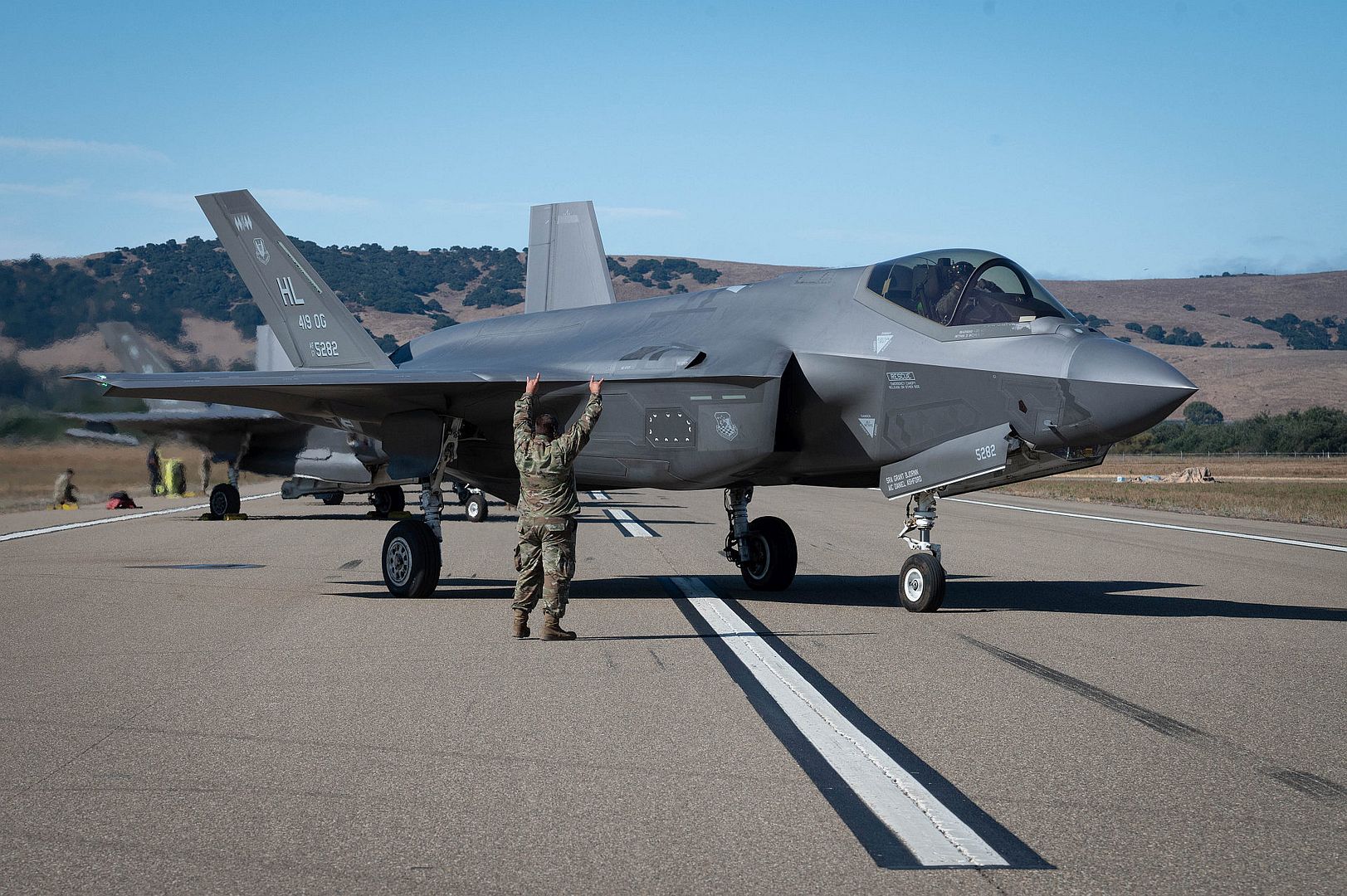
Four U.S. Air Force F-16 Fighting Falcons assigned to the 92nd Fighter Squadron, Shaw Air Force Base, South Carolina, fly alongside a KC-135 Stratotanker assigned to the 91st Air Refueling Squadron over the western United States during Exercise Bamboo Eagle 24-3, Aug. 5, 2024. Through employment of the KC-135 aircraft, the 91st ARS extends U.S. global power and global reach by planning and executing aerial refueling missions for U.S. and allied combat and support aircraft. During Bamboo Eagle, Air Mobility Command assets will support warfighters implementing all-domain combat-power generation from disaggregated basing locations throughout the western part of the U.S., along with distributed command and control, agile logistics, and tactical air-to-air refueling. Bamboo Eagle provides participating units opportunities to reoptimizing for Great Power competition and to focus on mission readiness by to deliver cross-functional and lethal combat capabilities with the speed and agility required to meet pacing challenges. (U.S. Air Force photo by Tech. Sgt. Alexander Cook)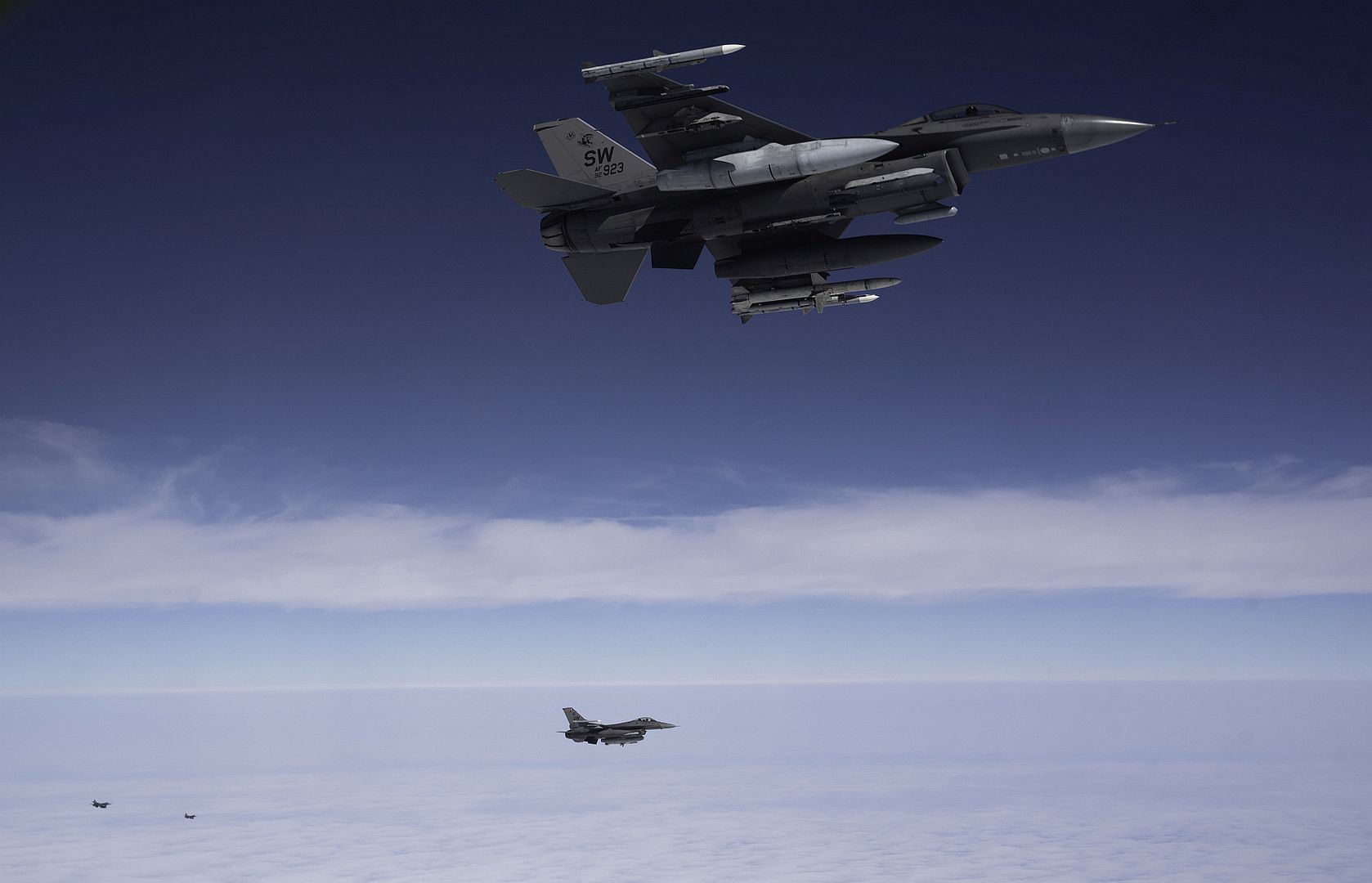
A U.S. Air Force B-52H Stratofortress prepares to take off at Barksdale Air Force Base, La., during Bamboo Eagle 24-3, August 5, 2024. Bamboo Eagle employs the operation of 150 aircraft at multiple locations to enhance interoperability and warfighting capabilities. (U.S. Air Force photo by Airman 1st Class Laiken King)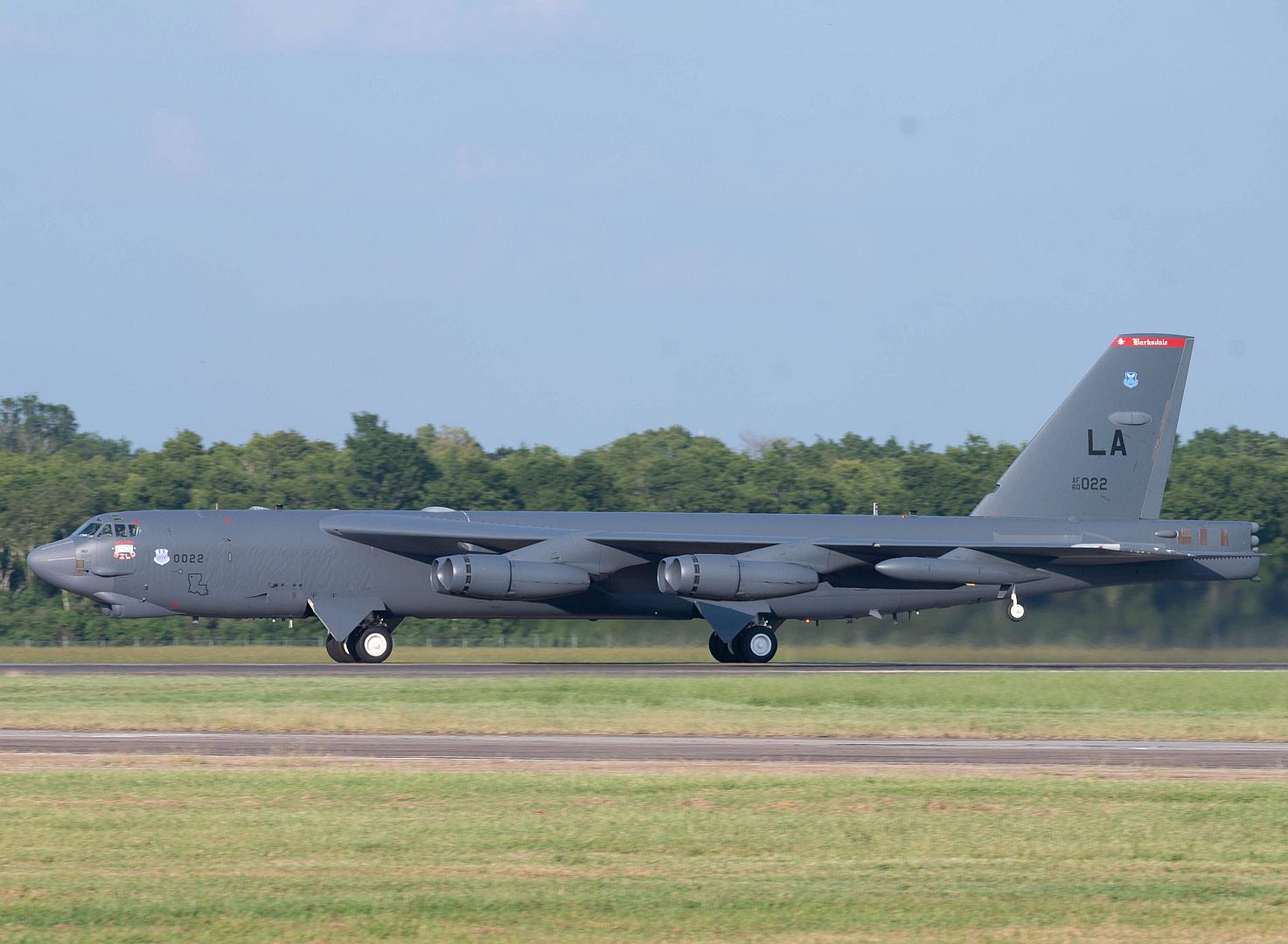
The RAF detachment returning from Australia has stopped off in India to join Exercise Tarang Shakti, the first ever Multi-National air exercise organised by the Indian Air Force.
The RAF detachment, consisting of six Typhoons from Royal Air Force Coningsby based XI (Fighter) Squadron, arrived at the Indian Air Force base at Sulur Air Force Station in Tamil Nadu, Southern India. They'll be supported by two Voyagers & an Atlas from the RAF’s Air Mobility Force.
The RAF detachment is joining contingents from the Bundeswehr, Ejército del Aire, and Armée de l'Air et de l'Espace on the Indian exercise before they all return to Europe.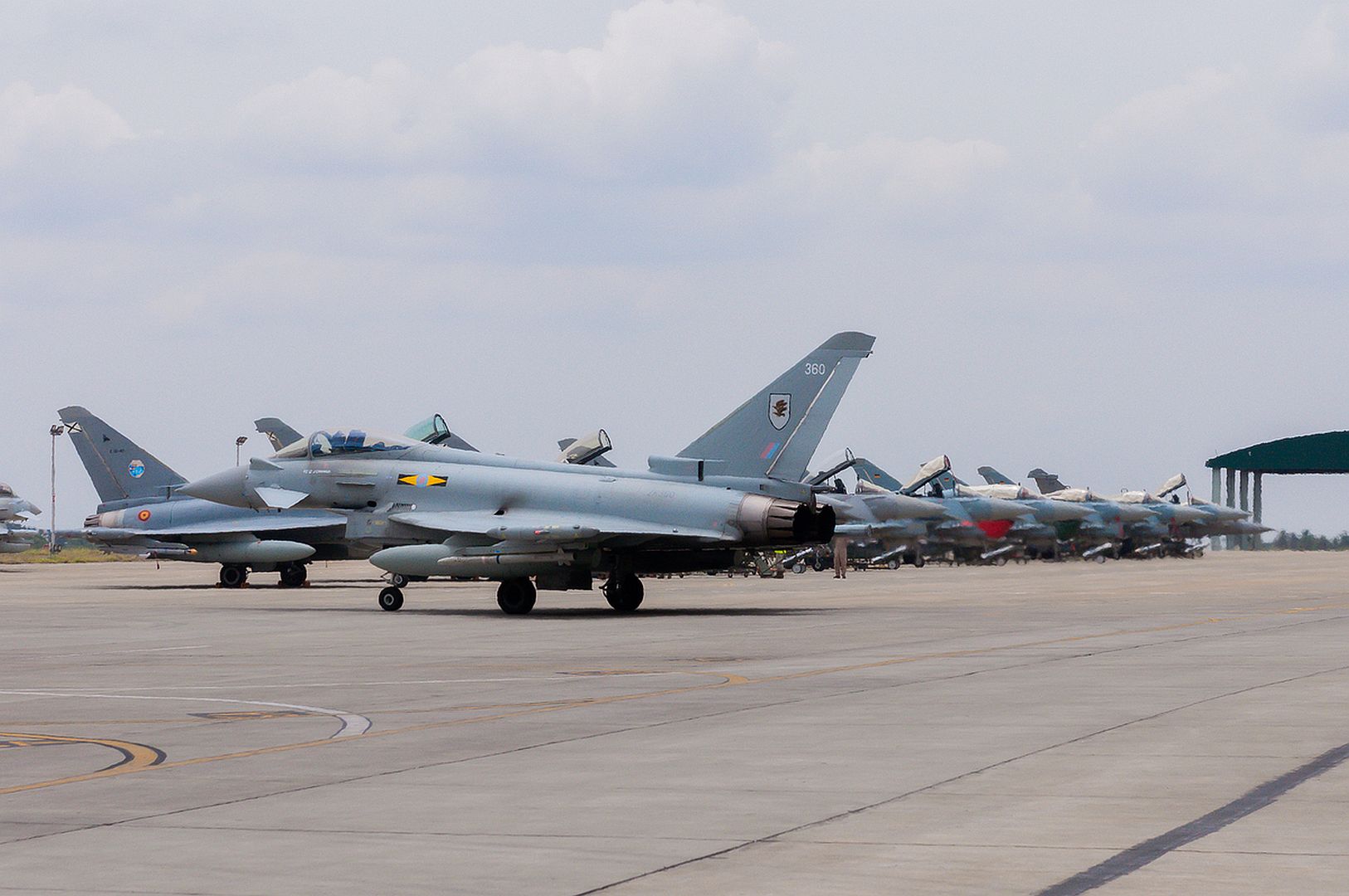
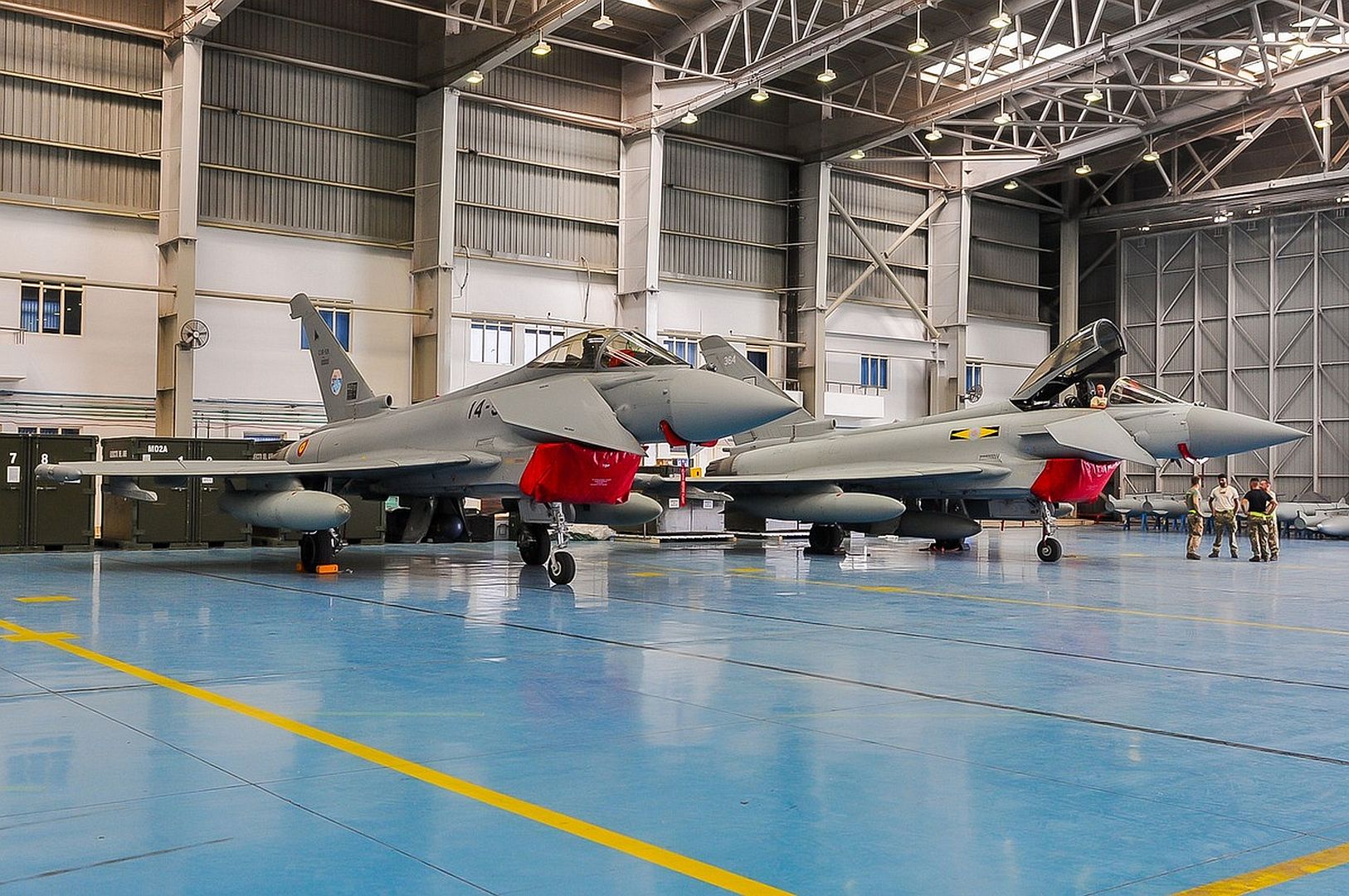
Exercise Tarang Shakti is designed to give the RAF & the other European countries the opportunity to fly with the Indian Air Force (IAF) in a complex air environment. The exercise also demonstrates the growing relationship between the RAF & the IAF, & follows the IAF’s participation last year on RAF led Exercise Cobra Warrior.
(Photos courtesy of the RAF)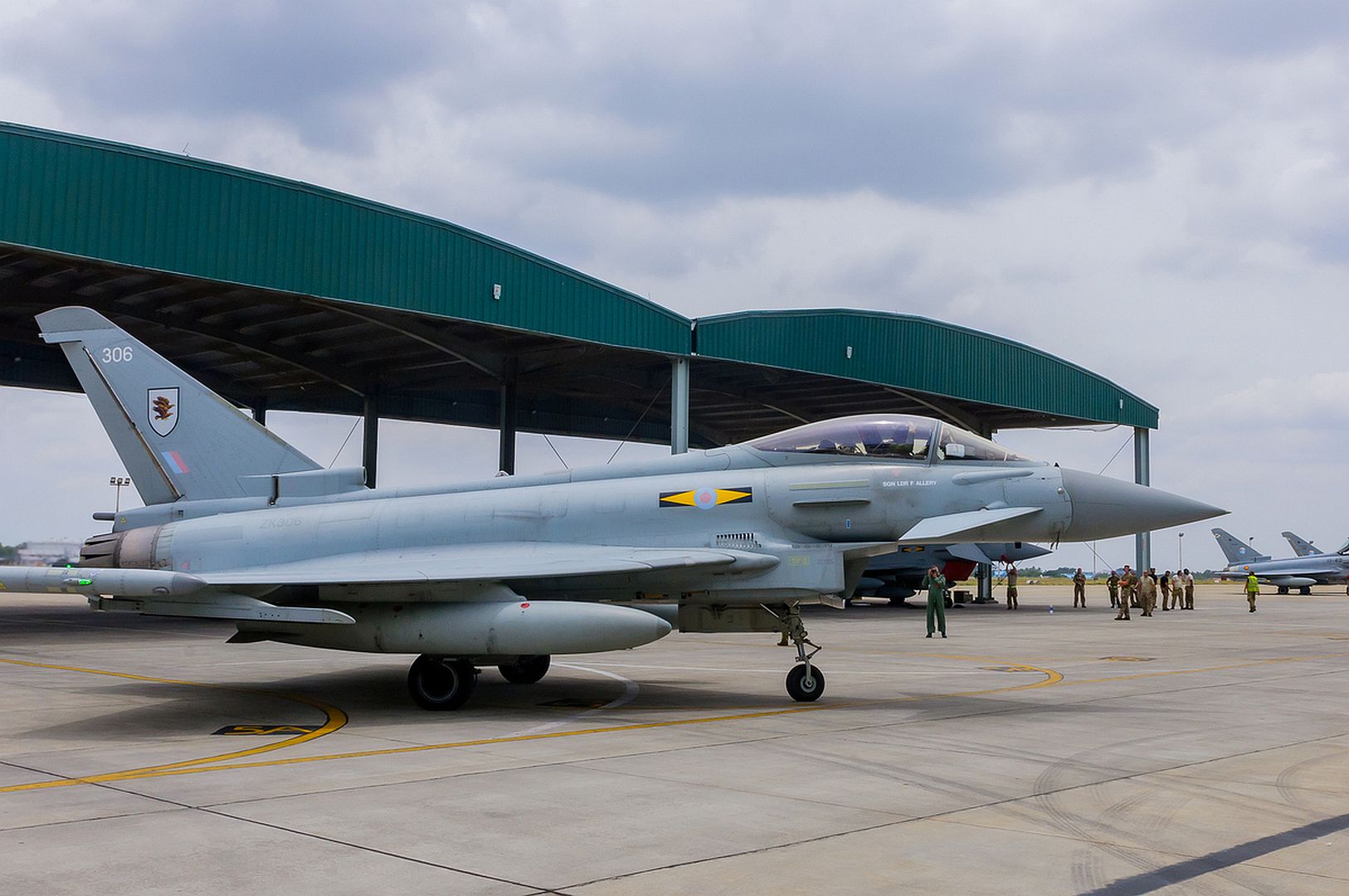
Some photos from Rimpac 24, where the Luftwaffe with three Euro fighters and an A400M, flew from Japan to Hawaii landing at Pearl Harbor. For this, the German pilots flew 10.5 hours straight, which is a new record for the German Eurofighters.
(Photos courtesy of the Bundeswehr )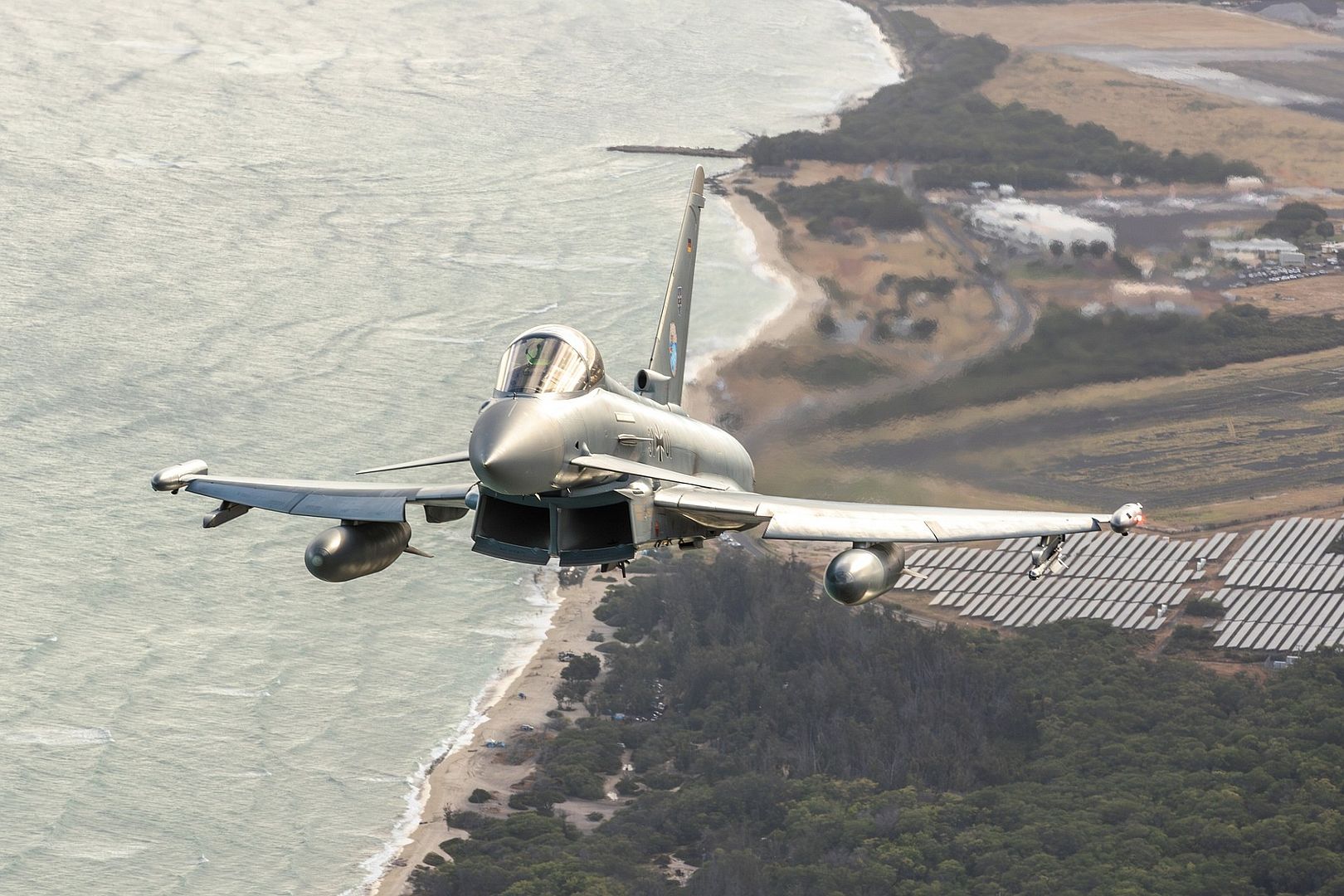
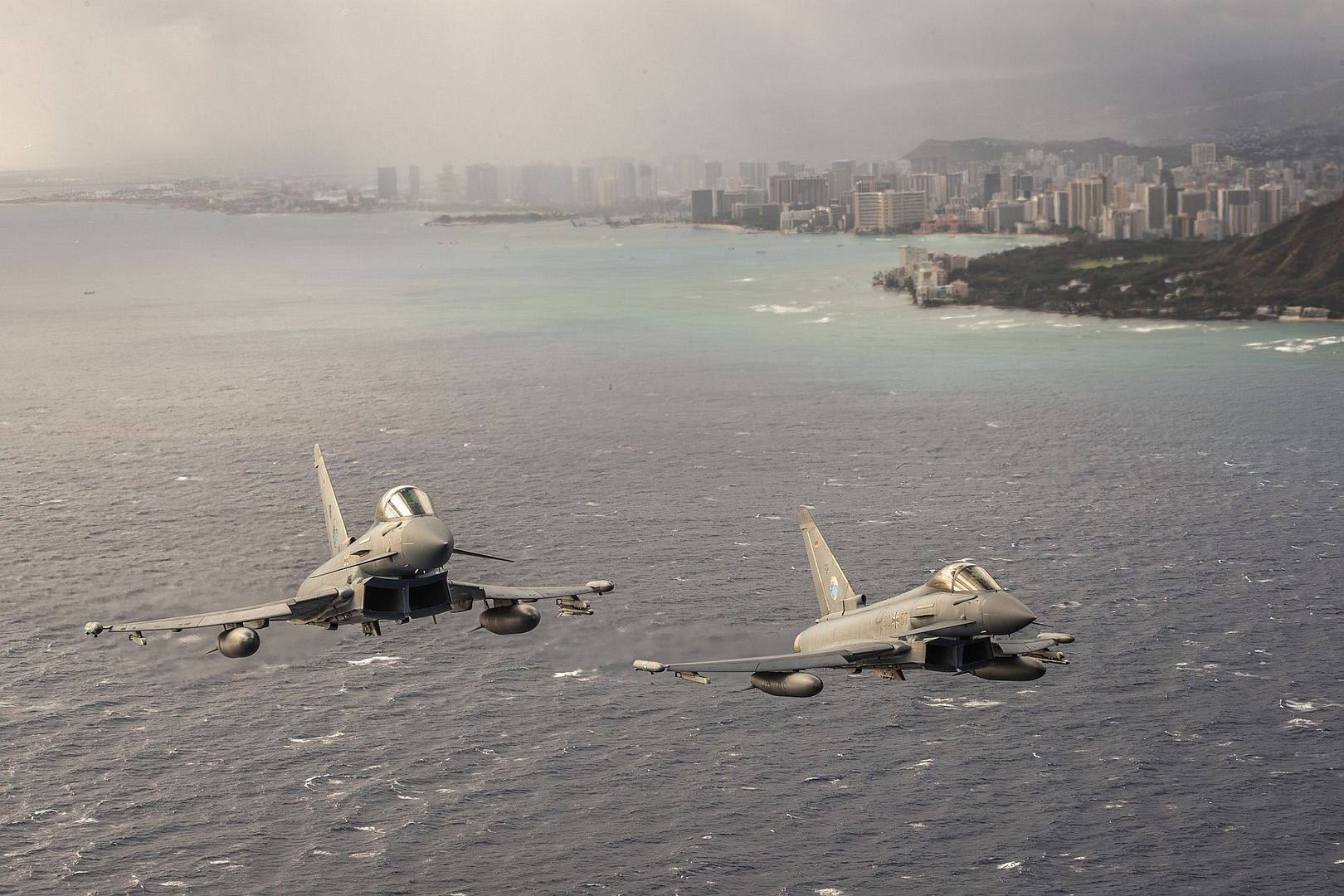

-
 Main AdminA U.S. Air Force F-16 Fighting Falcon assigned to the 706th Aggressor Squadron lands on the runway after a Bamboo Eagle (BE) 24-3 mission at Nellis Air Force Base, Nevada, Aug. 9, 2024. Through the use of designated air space, BE provides Airmen, allies and partners a flexible, combat-representative, multidimensional battle space to conduct testing tactics development, and advanced training in support of U.S. national interests. (U.S. Air Force photo by Staff Sgt. Jose Miguel T. Tamondong)
Main AdminA U.S. Air Force F-16 Fighting Falcon assigned to the 706th Aggressor Squadron lands on the runway after a Bamboo Eagle (BE) 24-3 mission at Nellis Air Force Base, Nevada, Aug. 9, 2024. Through the use of designated air space, BE provides Airmen, allies and partners a flexible, combat-representative, multidimensional battle space to conduct testing tactics development, and advanced training in support of U.S. national interests. (U.S. Air Force photo by Staff Sgt. Jose Miguel T. Tamondong)_24-3_mission_at_Nellis_Air_Force_Base_Nevada_Aug._9_2024..jpg?width=1920&height=1080&fit=bounds)
U.S. Air Force F-16 Fighting Falcons assigned to the 706th Aggressor Squadron participate in exercise Bamboo Eagle 24-3 with 32nd Air Refueling Squadron air crews over the Pacific Ocean, Aug. 9, 2024. As part of the 305th Air Mobility Wing, the 32nd ARS operates the KC-46 Pegasus aircraft conducting air refueling missions necessary to support air mobility missions on a global scale. During BE 24-3, Air Mobility Command assets supported warfighters implementing all-domain combat-power generation from disaggregated basing locations throughout the western part of the U.S., along with distributed command and control, agile logistics and tactical air-to-air refueling. Bamboo Eagle provides participating units opportunities to highlight Air Force efforts to reoptimize for Great Power Competition and to focus on mission readiness to deliver cross-functional and lethal combat capabilities with the speed and agility required to meet pacing challenges. (U.S. Air Force photo by Staff Sgt. Monica Roybal)
A C-5 Galaxy taxis on the runway during a hot-pit refuel exercise as part of Exercise Northern Strike 24-2, in Oscoda, Michigan, Aug. 9, 2024. Northern Strike 24-2, one of the Department of Defense's largest reserve component readiness exercises, is scheduled to take place at Michigan's National All Domain Warfighting Center from August 3-17, 2024. More than 6,300 participants from 32 states and territories and several international participants will converge at the NADWC. Northern Strike is the premier reserve component training event designed to build readiness with joint and partner forces in all domains of warfare. (U.S. Air National Guard photo by Staff Sgt. Kevin Ray J. Salvador)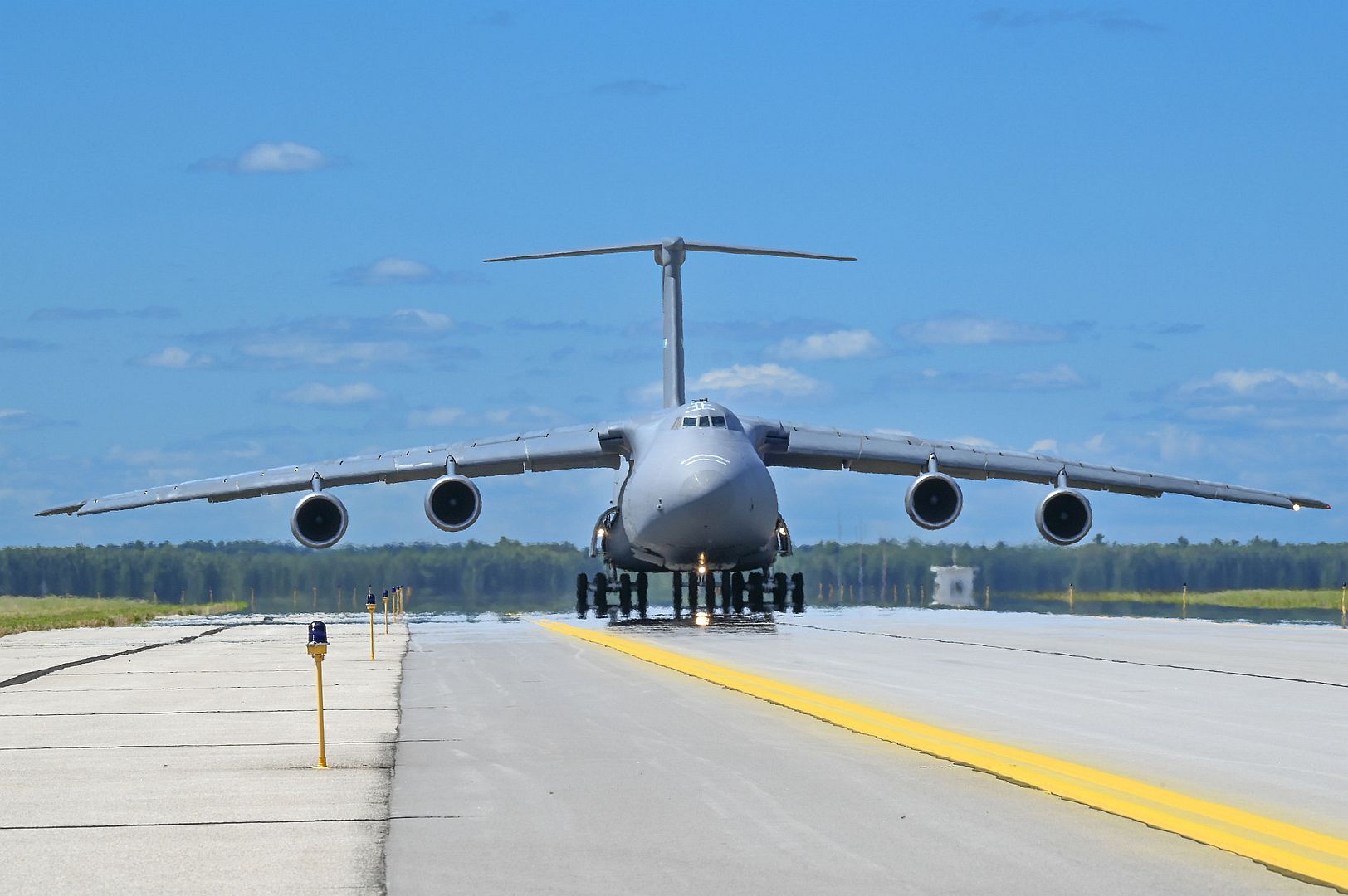
U.S. Air Force airmen prepare to defuel a C-5 Galaxy as part of a hot-pit refuel exercise during Exercise Northern Strike 24-2 in Oscoda, Michigan, Aug. 9, 2024. Northern Strike 24-2, one of the Department of Defense's largest reserve component readiness exercises, is scheduled to take place at Michigan's National All Domain Warfighting Center from August 3-17, 2024. More than 6,300 participants from 32 states and territories and several international participants will converge at the NADWC. Northern Strike is the premier reserve component training event designed to build readiness with joint and partner forces in all domains of warfare. (U.S. Air National Guard photo by Staff Sgt. Kevin Ray J. Salvador)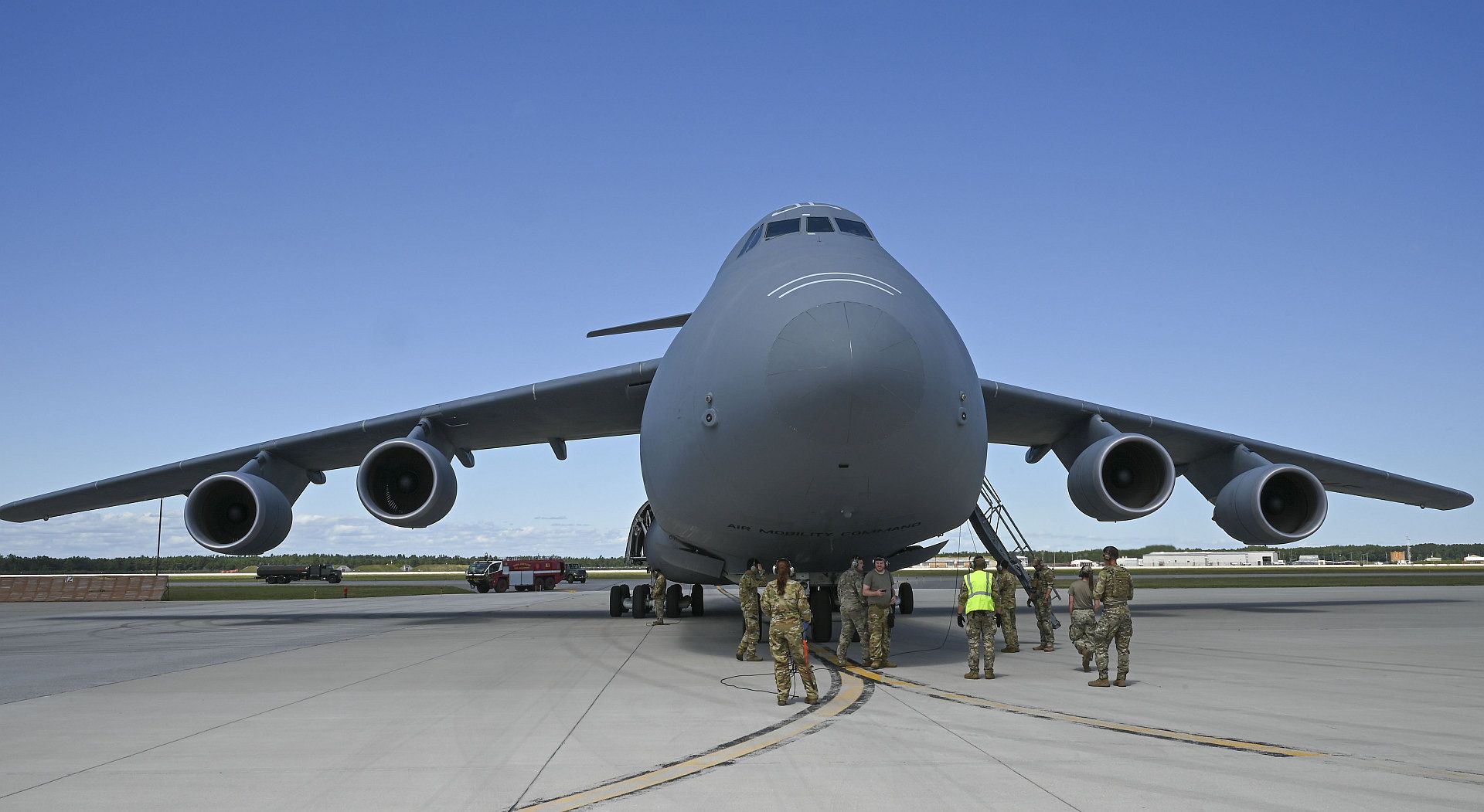
PACIFIC OCEAN (Aug. 9, 2024) The ITS Cavour (CVH 550) sails beside the Nimitz-class aircraft carrier USS Abraham Lincoln (CVN 72) on Aug. 9. The United States Navy and the Italian Navy held the first-ever bilateral Multi-Large Deck Event (MLDE) in the Indo-Pacific. Abraham Lincoln, flagship of Carrier Strike Group Three, is underway conducting routine operations in the U.S. 7th Fleet area of operations. U.S. 7th Fleet is the U.S. Navy's largest forward-deployed numbered fleet, and routinely interacts and operates with allies and partners in preserving a free and open Indo-Pacific region. (U.S. Navy photo by Mass Communication Specialist 2nd Class Kassandra Alanis)_sails_beside_the_Nimitz-class_aircraft_carrier_USS_Abraham_Lincoln_(CVN_72)_on_Aug._9..jpg?width=1920&height=1080&fit=bounds)
PACIFIC OCEAN (Aug. 9, 2024) An F/A-18F Super Hornet, assigned to Strike Fighter Squadron (VFA) 41, launches from the flight deck as the ITS Cavour (CVH 550) sails beside the Nimitz-class aircraft carrier USS Abraham Lincoln (CVN 72) on Aug. 9. The United States Navy and the Italian Navy held the first-ever bilateral Multi-Large Deck Event (MLDE) in the Indo-Pacific. Abraham Lincoln, flagship of Carrier Strike Group Three, is underway conducting routine operations in the U.S. 7th Fleet area of operations. U.S. 7th Fleet is the U.S. Navy's largest forward-deployed numbered fleet, and routinely interacts and operates with allies and partners in preserving a free and open Indo-Pacific region. (U.S. Navy photo by Mass Communication Specialist 2nd Class Kassandra Alanis)_41_launches_from_the_flight_deck.jpg?width=1920&height=1080&fit=bounds)
PACIFIC OCEAN (Aug. 10, 2024) An F-35C Lightning II, assigned to Marine Fighter Attack Squadron (VMFA) 314, prepares to make an arrested landing on the flight deck of the Nimitz-class aircraft carrier USS Abraham Lincoln (CVN 72). Abraham Lincoln, flagship of Carrier Strike Group Three, is underway conducting routine operations in the U.S. 7th Fleet area of operations. U.S. 7th Fleet is the U.S. Navy’s largest forward-deployed numbered fleet, and routinely interacts and operates with allies and partners in preserving a free and open Indo-Pacific region. (U.S. Navy photo by Mass Communication Specialist Seaman Apprentice Daniel Kimmelman)_314_prepares_to_make_an_arrested_landing_on_the_flight_deck_of_the_Nimitz-class_aircraft_carrier_USS_Abraham_Lincoln.jpg?width=1920&height=1080&fit=bounds)
PACIFIC OCEAN (Aug. 10, 2024) Lt. Craig Darling, from Johnstown, N.Y., assigned to Airborne Command & Control Squadron (VAW) 117, stands by as an E-2D Hawkeye, prepares to perform a touch and go on the flight deck of the Nimitz-class aircraft carrier USS Abraham Lincoln (CVN 72). Abraham Lincoln, flagship of Carrier Strike Group Three, is underway conducting routine operations in the U.S. 7th Fleet area of operations. U.S. 7th Fleet is the U.S. Navy’s largest forward-deployed numbered fleet, and routinely interacts and operates with allies and partners in preserving a free and open Indo-Pacific region. (U.S. Navy photo by Mass Communication Specialist Seaman Apprentice Daniel Kimmelman)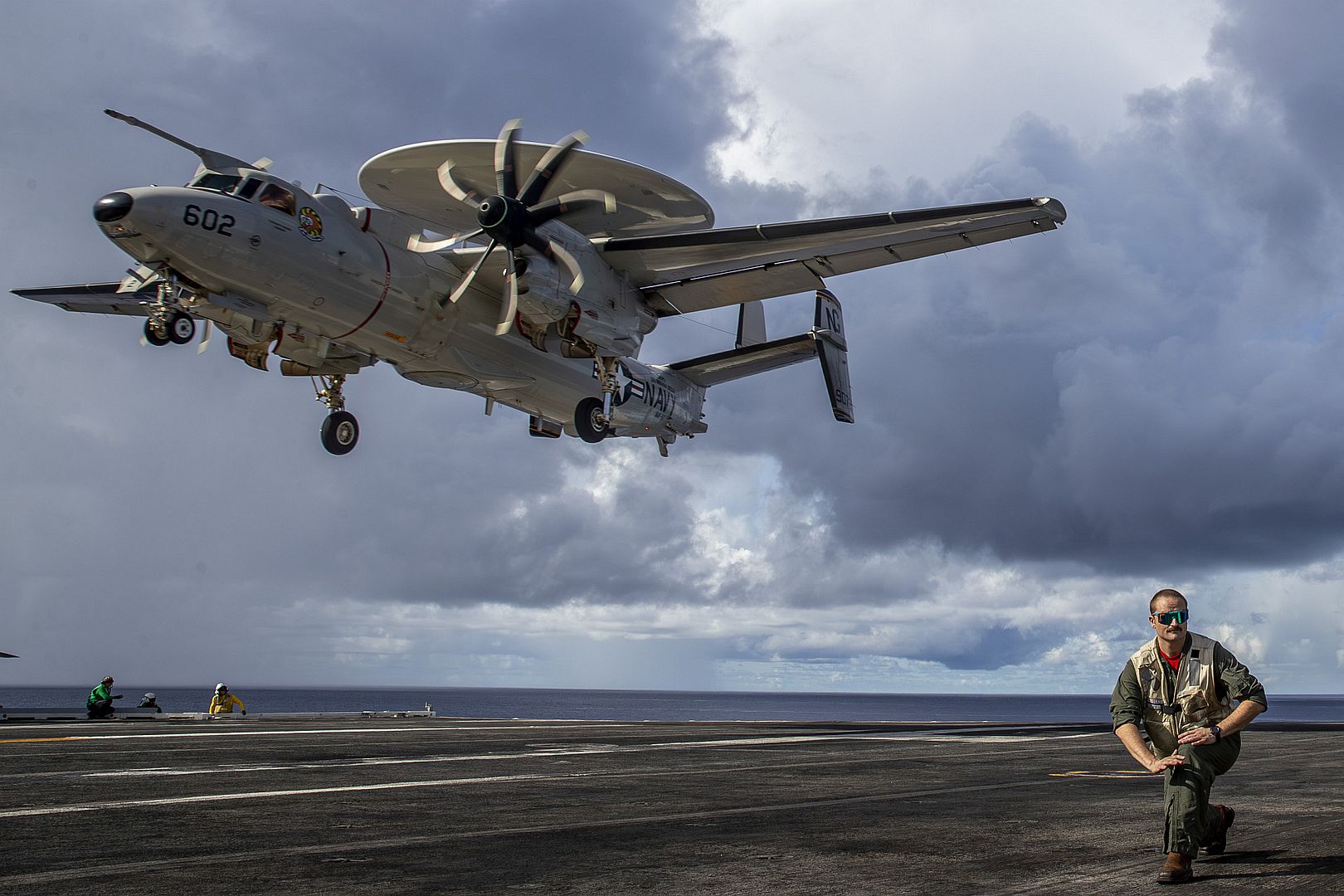
PACIFIC OCEAN (Aug. 10, 2024) Lt. Craig Darling, from Johnstown, N.Y., assigned to Airborne Command & Control Squadron (VAW) 117, stands by as an F/A-18E Super Hornet, assigned to Strike Fighter Squadron (VFA) 151, prepares to make an arrested landing on the flight deck of the Nimitz-class aircraft carrier USS Abraham Lincoln (CVN 72). Abraham Lincoln, flagship of Carrier Strike Group Three, is underway conducting routine operations in the U.S. 7th Fleet area of operations. U.S. 7th Fleet is the U.S. Navy’s largest forward-deployed numbered fleet, and routinely interacts and operates with allies and partners in preserving a free and open Indo-Pacific region. (U.S. Navy photo by Mass Communication Specialist Seaman Apprentice Daniel Kimmelman)_151_prepares_to_make_an_arrested_landing_on_the_flight_deck_of_the_Nimitz-class_aircraft_carrier_USS_Abraham_Lincoln.jpg?width=1920&height=1080&fit=bounds)
N101XW, a Cessna 208B Grand Caravan, takes off with cargo for a simulated resupply mission during Exercise Bamboo Eagle 24-3 at Edwards Air Force Base, California, Aug. 6, 2024. Xwing has been awarded two Small Business Innovation Research contracts by the U.S. Air Force, under the Air Force Work Project (AFWERX) program to use its autonomous flight technology that allows it to taxi, takeoff, fly to a destination, avoid airborne and ground threats, and land without human interaction. (U.S. Air Force photo by Staff Sgt. Frederick A. Brown)
U.S. Air Force F-22 Raptors assigned to the 27th Expeditionary Fighter Squadron, conduct Dynamic Force Employment operations at I Gusti Ngurah Rai Air Force Base, Indonesia, on Aug. 6, 2024. Through bilateral training, the U.S. and Indonesian Air Forces work together to promote interoperability, thus furthering our investments and strengthening our relationships. (U.S. Air Force photo by Senior Airman Mitchell Corley)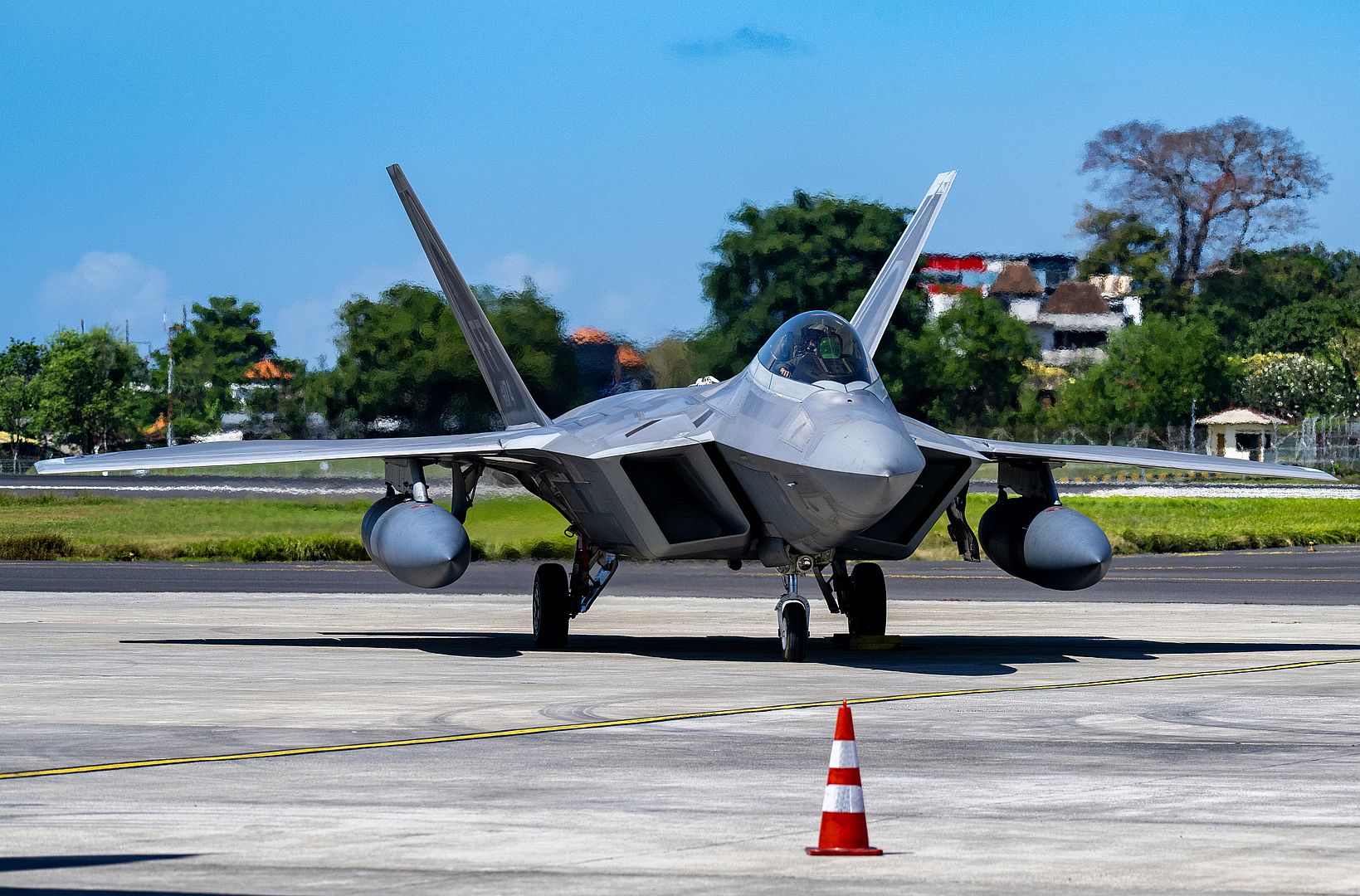
U.S. Air Force petroleum, oil and lubricants technicians prepare to hot pit F-22 Raptors assigned to the 27th Expeditionary Fighter Squadron, during Dynamic Force Employment operations at I Gusti Ngurah Rai Air Force Base, Indonesia, on Aug. 6, 2024. Through bilateral training, the U.S. and Indonesian Air Forces work together to promote interoperability, thus furthering our investments and strengthening our relationships. (U.S. Air Force photos by Senior Airman Mitchell Corley)

U.S. Air Force F-22 Raptors from the 27th Expeditionary Fighter Squadron taxi next to a Philippine Air Force FA-50PH light jet fighter during dynamic force employment operations at Basa Air Base Philippines, Aug. 8, 2024. Dynamic Force Employment is critical for enhancing U.S. and Philippine Air Force cooperation and interoperability capabilities in a free and open Indo-Pacific. (U.S. Air Force photo by Staff Sgt. Edward Coddington)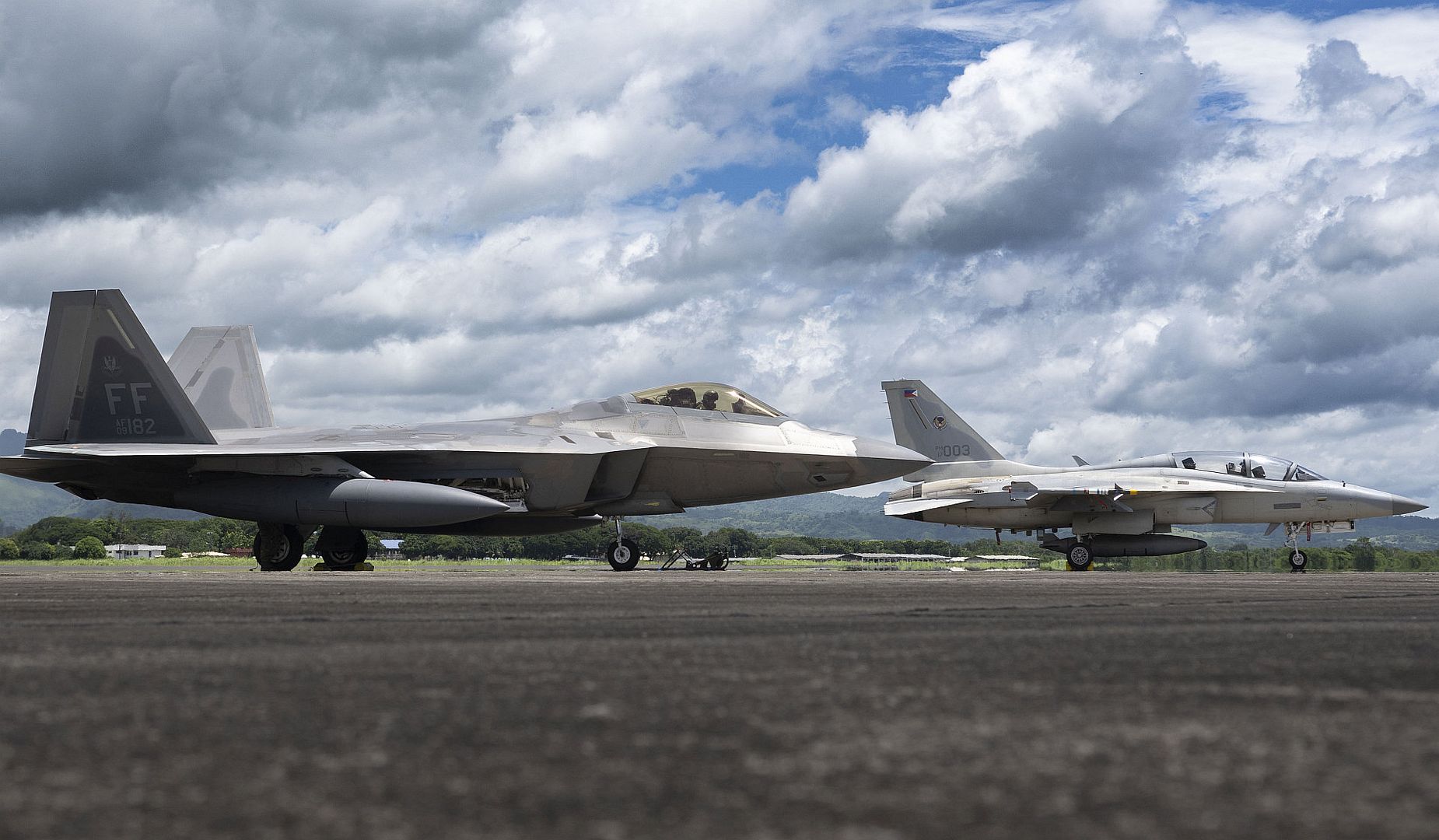
[TUKWILA, WA., Aug 9, 2024] - Boeing [NYSE: BA] has been awarded a $2.56 billion contract from the U.S. Air Force for two rapid prototype E-7A AEW&C Wedgetail aircraft. The contract includes lifecycle development, training and support for the Air Force’s E-7A fleet.
The combat-proven E-7A Wedgetail provides targeted tracking and battle management command-and-control capabilities to joint forces for “first to detect, first to engage” advantage. The E-7 AEW&C platform is currently in service with the Royal Australian Air Force, Republic of Korea Air Force (designated E-737 Peace Eye) and Turkish Air Force (designated E-7T Peace Eagle).
“Global operators are proving that the E-7 AEW&C is a critical node for air superiority in the modern battlespace,” said Boeing Vice President and E-7 Program Manager Stu Voboril. “In our partnership with the U.S. Air Force, we’re focused on stable, predictable execution to deliver crucial mission-ready capabilities today. This will put us on the path for the long-term growth of the aircraft and mission.”
Built on the Boeing 737-700 NG airframe, the E-7 AEW&C aircraft offers lower operating and sustainment costs, higher mission readiness rates and unmatched interoperability among a growing global user community.
“Our customers have an urgent need for integrated battlespace awareness and battle management,” said Dan Gillian, vice president and general manager of Boeing Defense, Space & Security’s Mobility, Surveillance & Bombers division. “The E-7A is the airspace lynchpin to continuously scan the skies, command and control the battlespace, and integrate all-domain data providing a decisive advantage against threats. With our open systems architecture approach, capabilities can be rapidly inserted over time as threats evolve.”
In addition to the rapid prototype E-7A AEW&C aircraft being built for the U.S. Air Force, Boeing is currently producing three E-7As for the Royal Air Force, with military modifications underway in the United Kingdom. Additionally, NATO has selected the E-7A as its preferred AEW&C solution.
Together, the Royal Air Force, Royal Australian Air Force and U.S. Air Force have a Wedgetail tri-lateral cooperation agreement relating to E-7 aircraft capability development, evaluation and testing, interoperability, sustainment, operations, training and safety.
# # #
As a leading global aerospace company, Boeing develops, manufactures and services commercial airplanes, defense products and space systems for customers in more than 150 countries. As a top U.S. exporter, the company leverages the talents of a global supplier base to advance economic opportunity, sustainability and community impact. Boeing's diverse team is committed to innovating for the future, leading with sustainability, and cultivating a culture based on the company's core values of safety, quality and integrity. Join our team and find your purpose at boeing.com/careers.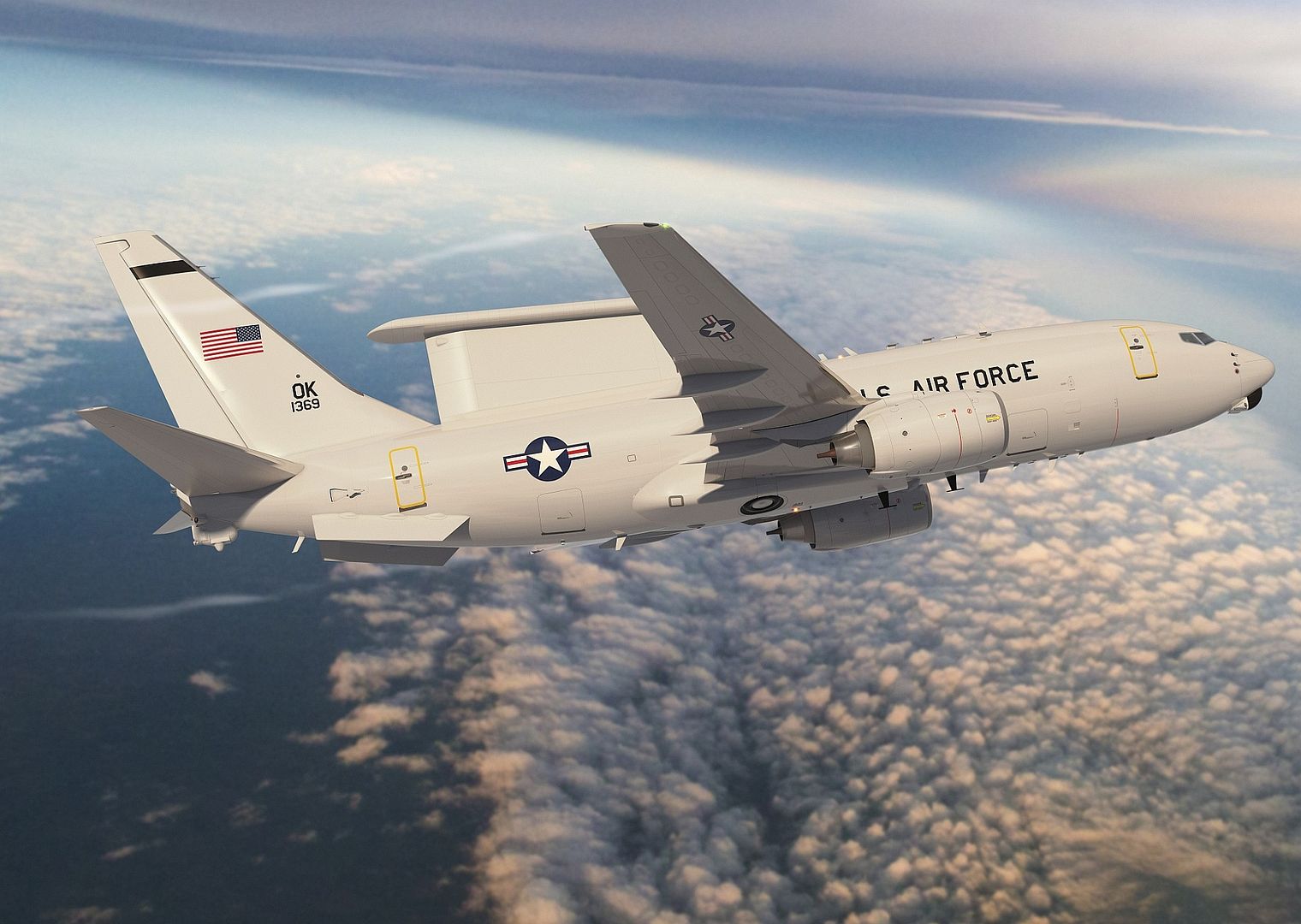
The RAF’s Lightning force passed their NATO accreditation last Friday, 9th August 2024, and are now able to hold Quick Reaction Alert in Iceland.
As of Sunday midnight, the Squadron began their QRA commitment. The Squadron will be deployed to the country from August to September 2024.
Since 2008, NATO Allies have deployed fighters to the island two or three times a year in support of the mission. For the RAF, this is the second Air Policing mission it is undertaking this year, with Operation Biloxi and the Typhoon force in Romania drawing to a conclusion earlier this month.
(Photos courtesy of the RAF)
Post a reply
- Go to Next topic
- Go to Welcome
- Go to Introduce Yourself
- Go to General Discussion
- Go to Screenshots, Images and Videos
- Go to Off topic
- Go to Works in Progress
- Go to Skinning Tips / Tutorials
- Go to Skin Requests
- Go to IJAAF Library
- Go to Luftwaffe Library
- Go to RAF Library
- Go to USAAF / USN Library
- Go to Misc Library
- Go to The Ops Room
- Go to Made in Germany
- Go to Campaigns and Missions
- Go to Works in Progress
- Go to Juri's Air-Raid Shelter
- Go to Campaigns and Missions
- Go to Works in Progress
- Go to Skinpacks
- Go to External Projects Discussion
- Go to Books & Resources
